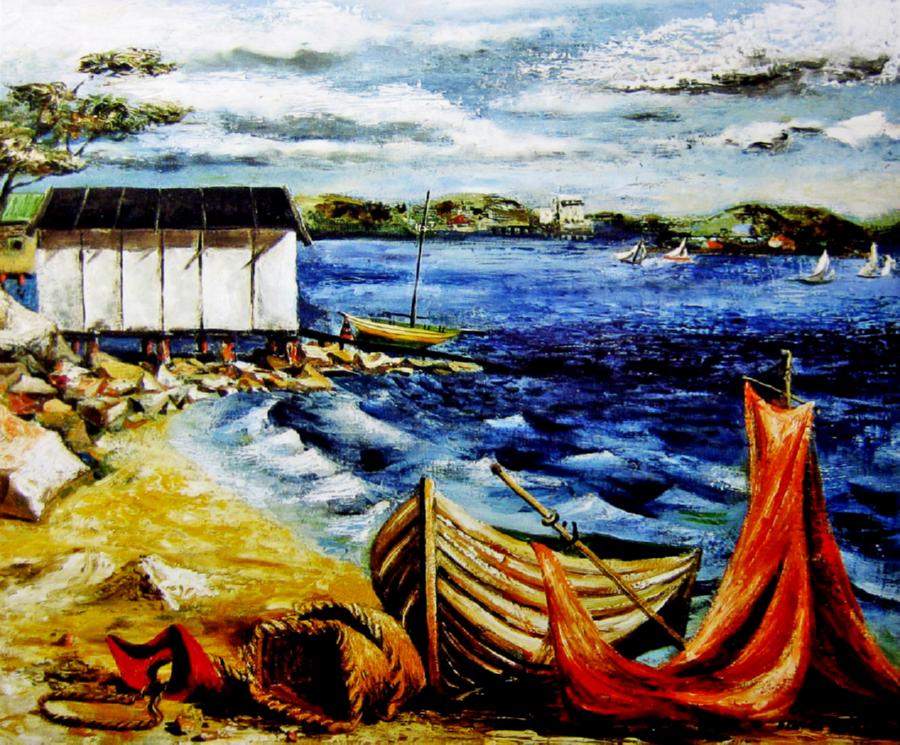February 12 - 18, 2017: Issue 300
A Historic Catalogue And Record Of Pittwater Art I – Of Places, Peoples And The Development Of Australian Art And Artists
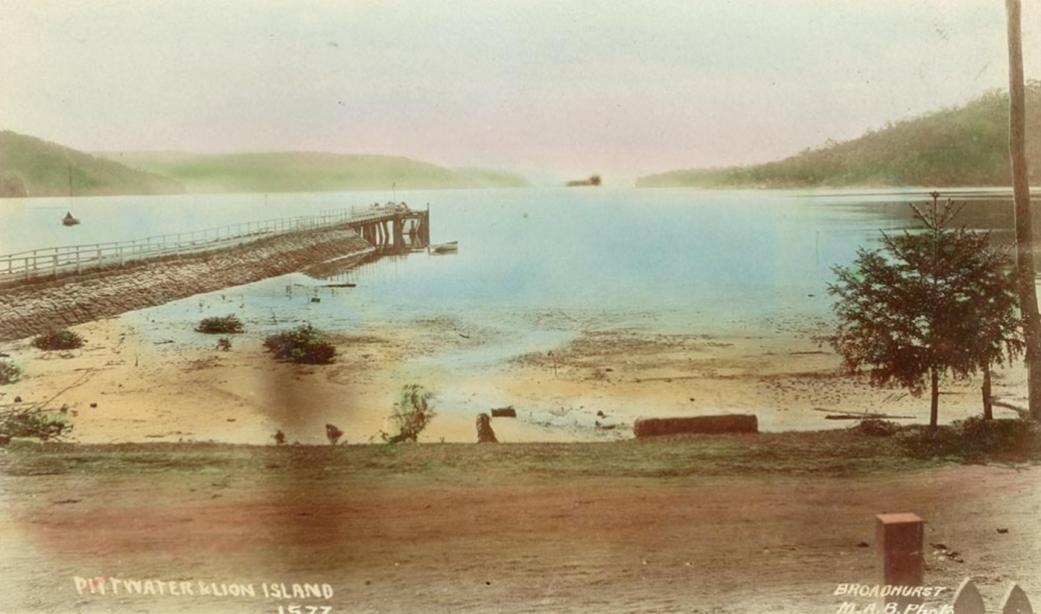
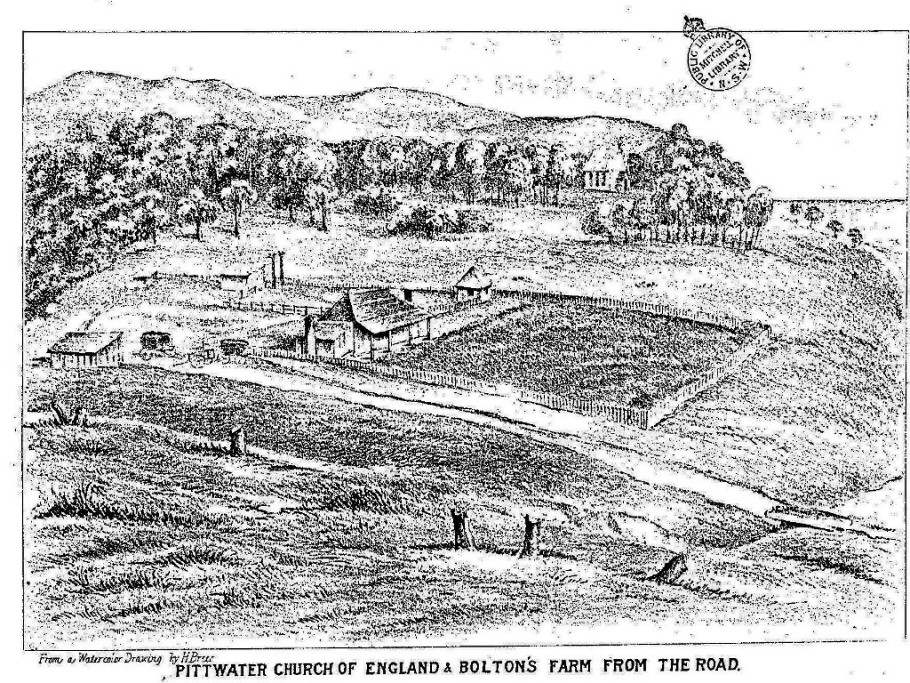
Pittwater Church of England and Bolton's Farm from the Road; illustration from the Pittwater and Hawkesbury Lakes Album. 1880, Courtesy the Mitchell Library - Mills, Pile & Gilchrist, 1880 xxiv, 8 pages, [9] leaves of plates (3 folded) : illustrations ; 19 x 25 cm.
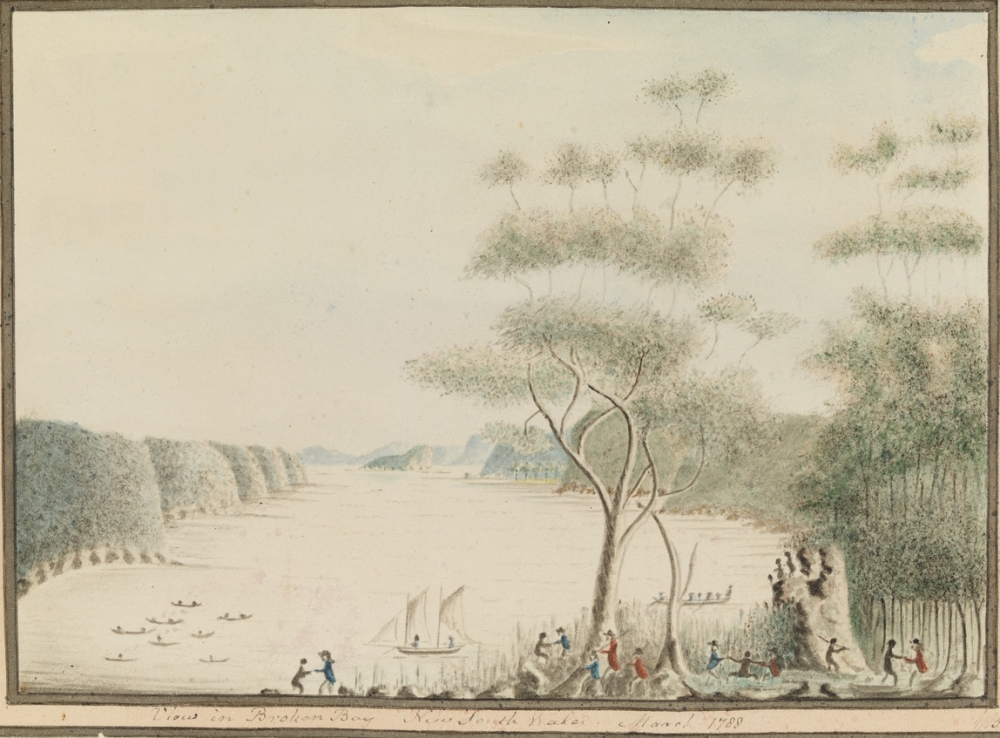
'View in Broken Bay New South Wales. March 1788' by William Bradley - Drawings from his journal `A Voyage to New South Wales',1802+ Image No.: a3461013, courtesy State Library of New South Wales.
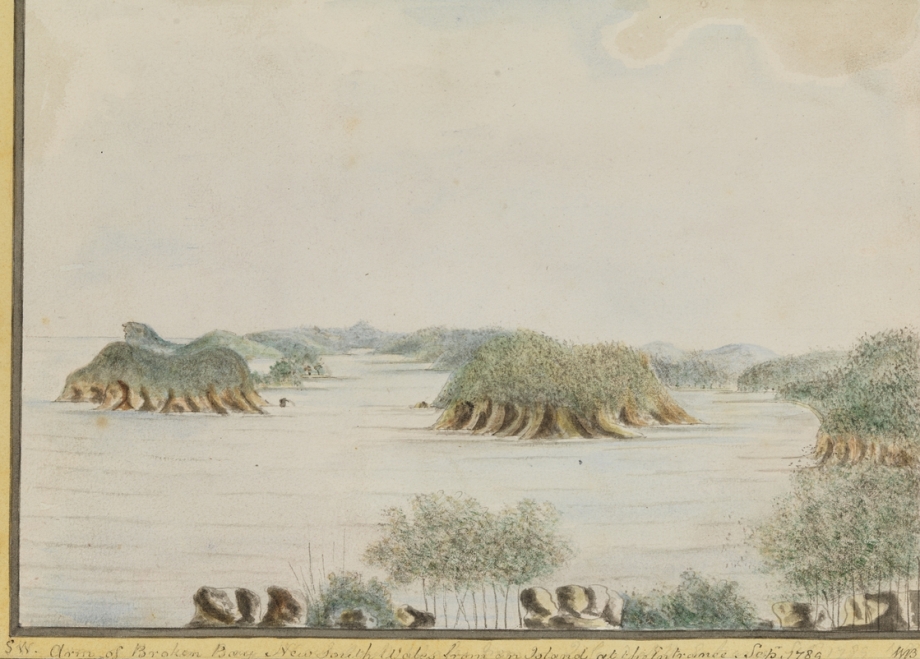
'SW. Arm of Broken Bay New South Wales from an Island at the Entrance. Sepr 1789' by William Bradley - Drawings from his journal `A Voyage to New South Wales', 1802+ , Image No.:a3461014, courtesy State Library of New South Wales.
William Bradley (1758–13 March 1833) was a British naval officer and cartographer who was one of the officers who participated in the First Fleet to Australia. During this expedition, Bradley undertook extensive surveys and became one of the first of the settlers to establish relations with the aborigines, with whom he struck up a dialogue and whose customs and nature he studied extensively. He later however fell out with his aboriginal contacts and instead undertook a mission to gather food which ended with an eleven-month stay on Norfolk Island after a shipwreck.
Bradley was attached on the Sirius to the First Fleet destined to colonise Australia. During 1788, Bradley did not involve himself directly in colonial affairs, but instead joined John Hunter in extensive operations along the Sydney Harbour coastline. The two men were often away from the colony for extended periods, conducting surveys of the coastline and the lands around. A keen note-taker and sketcher, Bradley compiled many records of his experiences - from Wikipedia
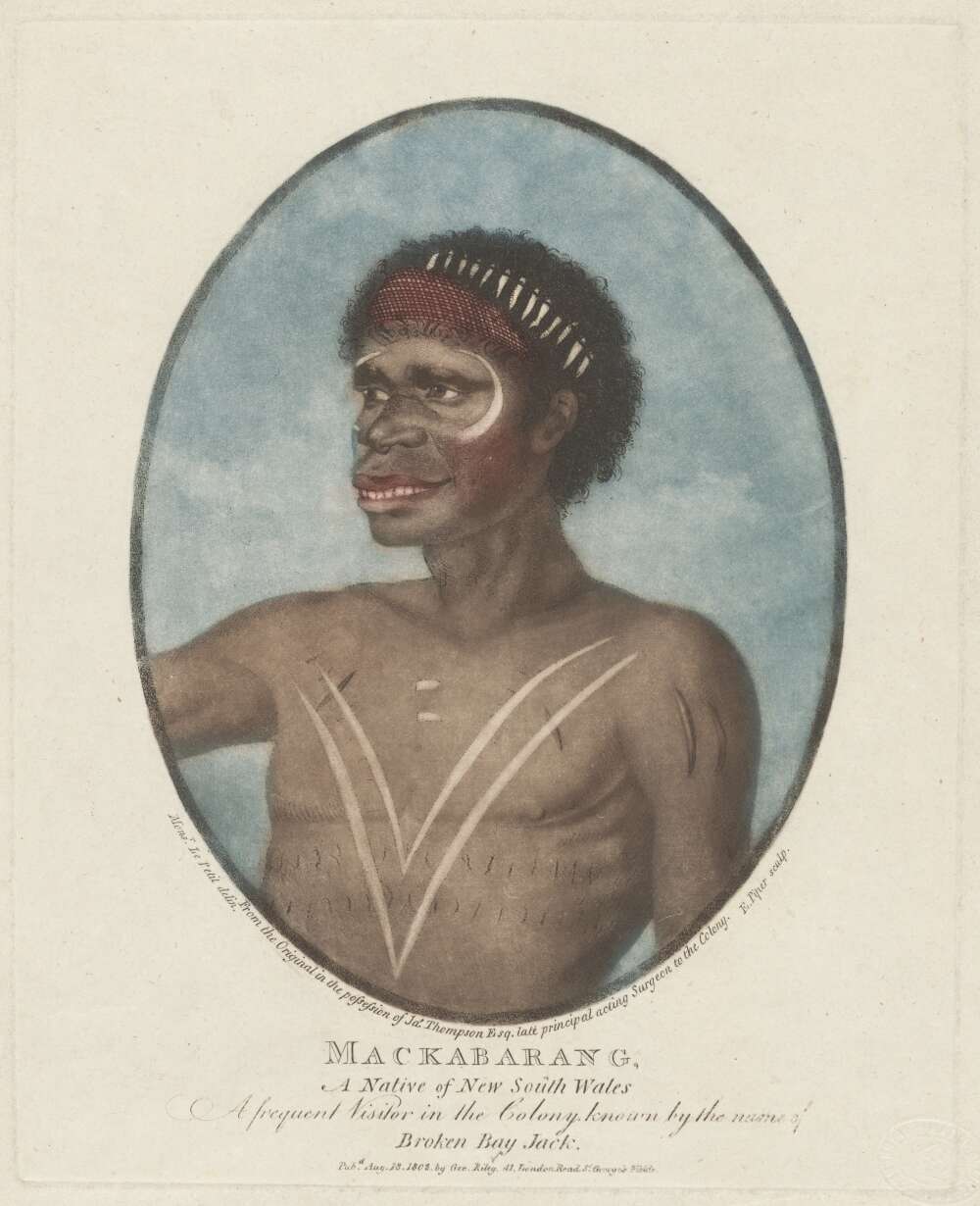
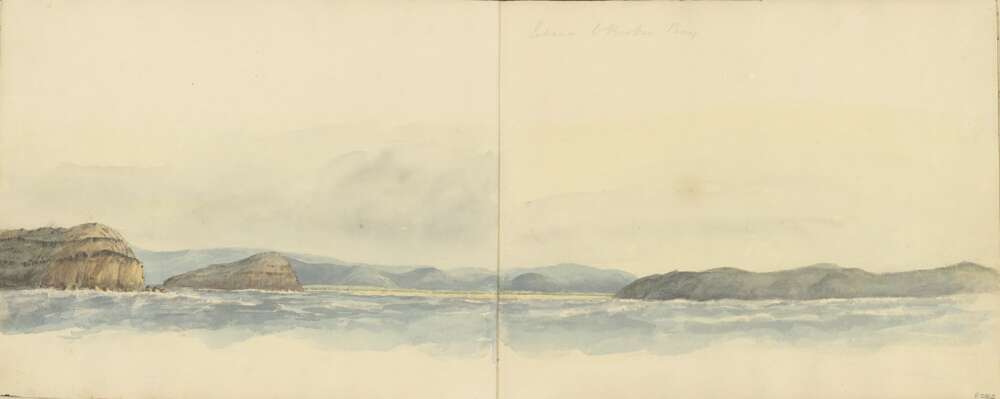
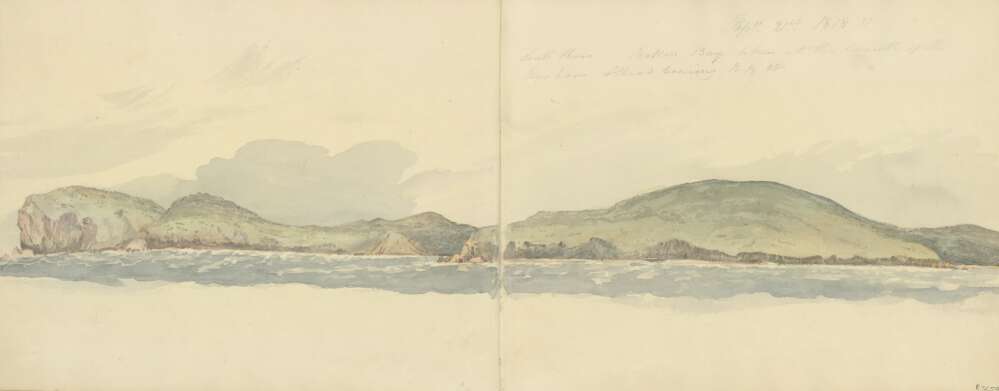
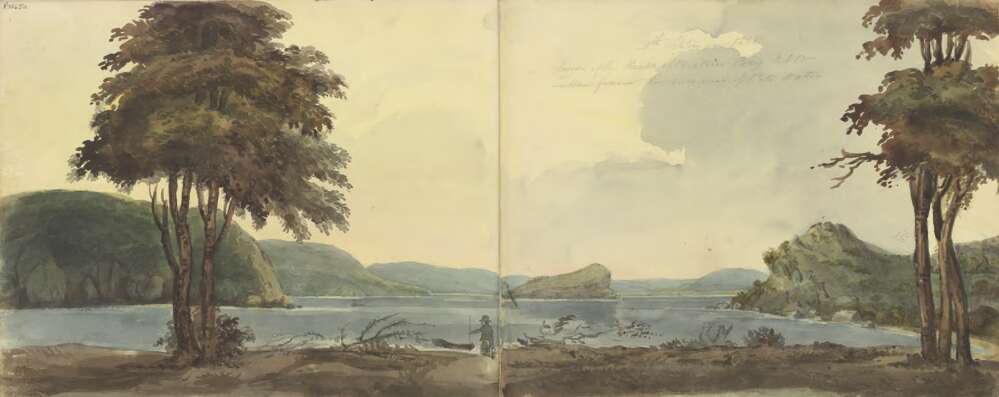
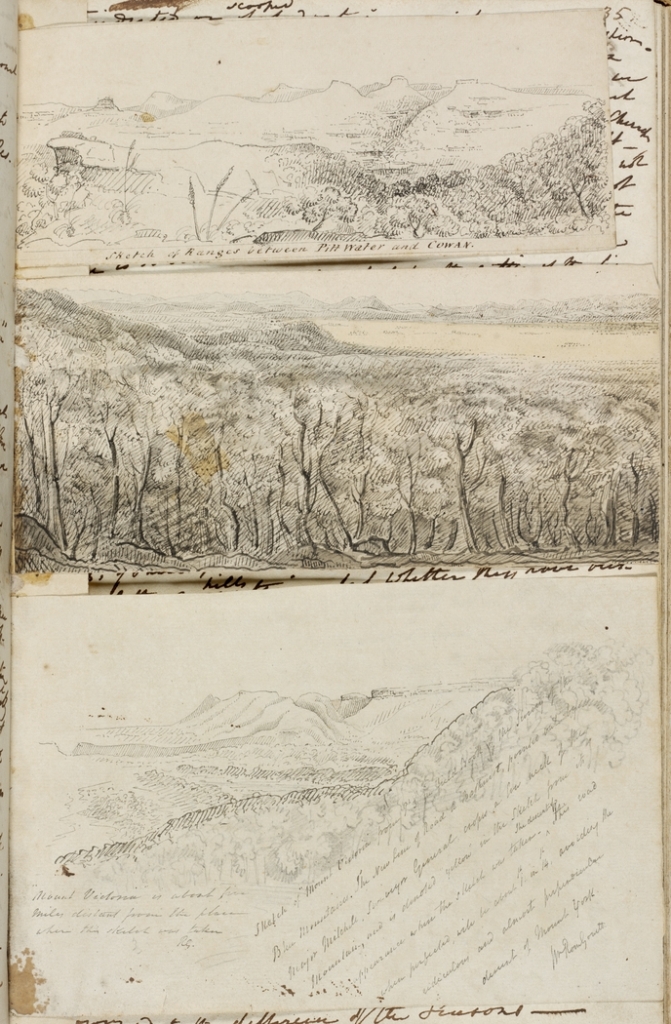
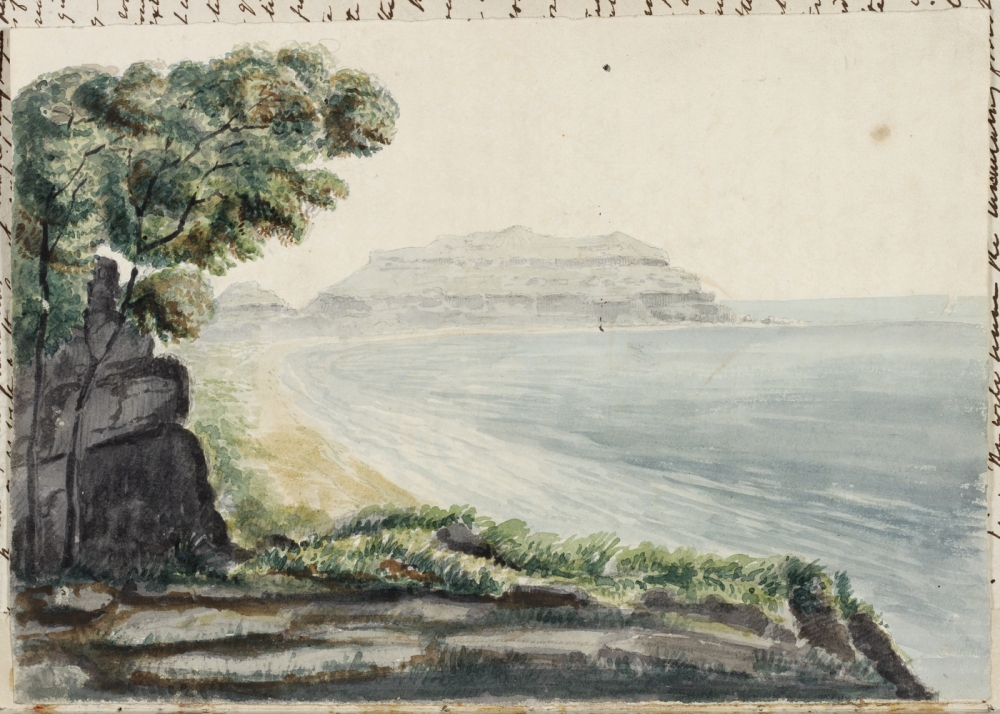
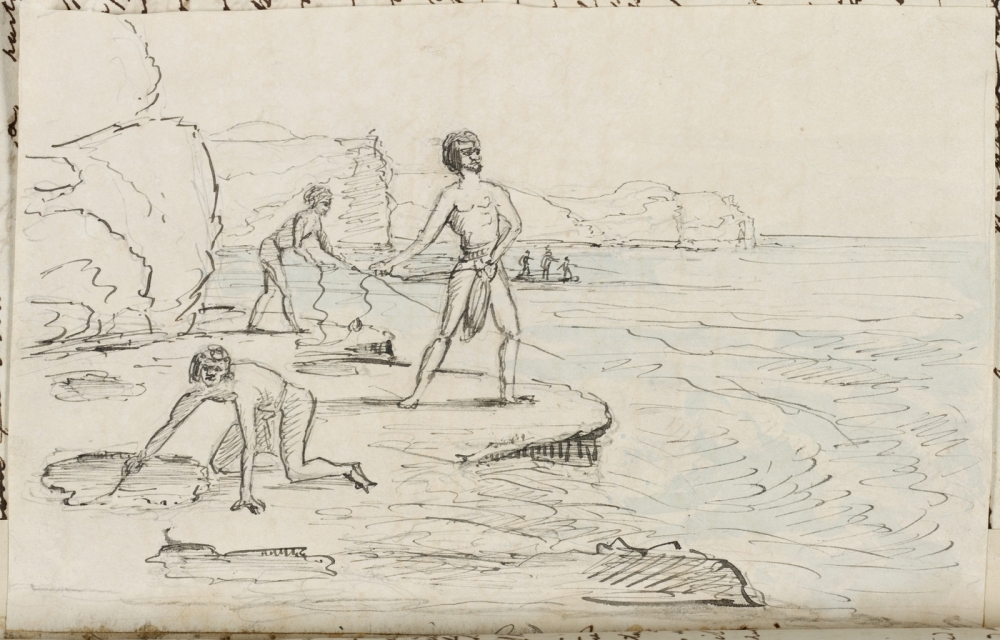
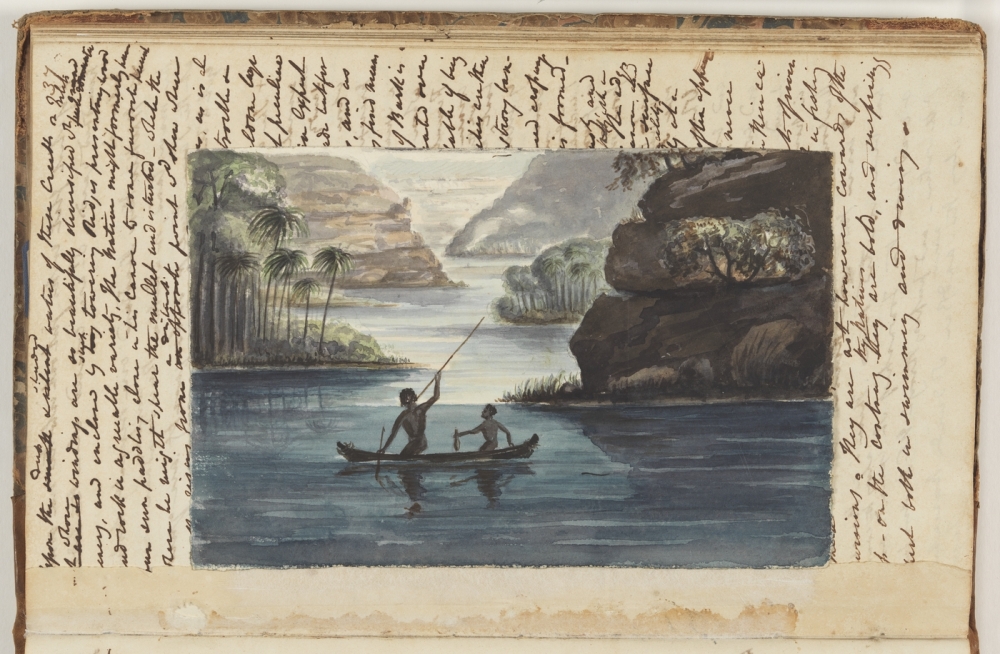
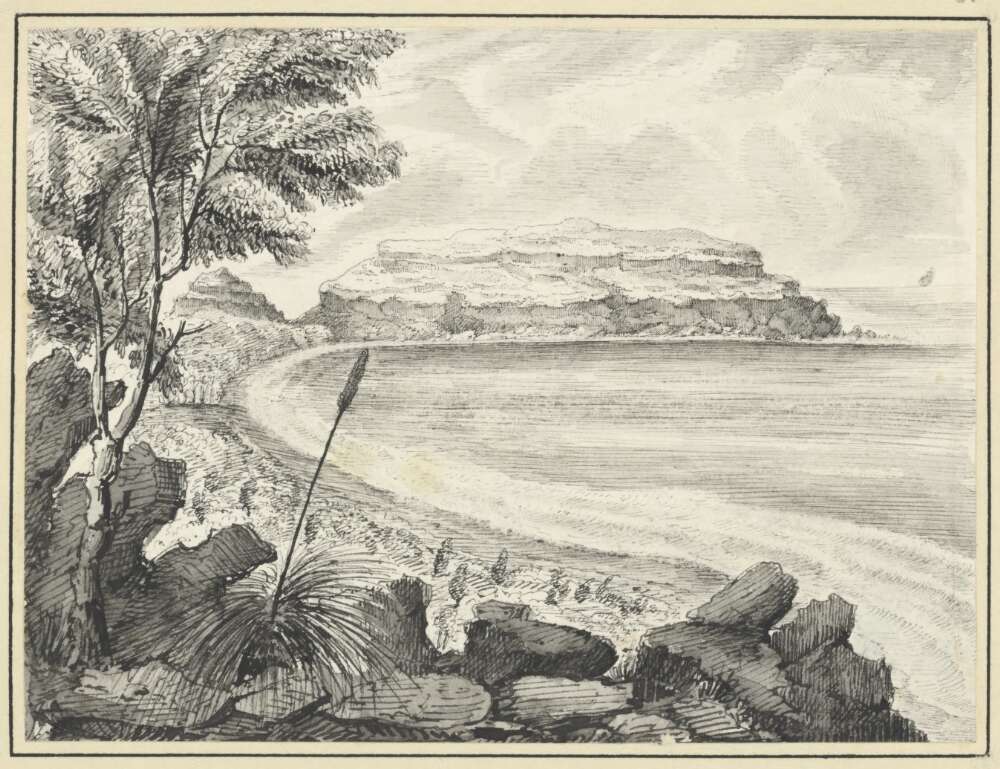
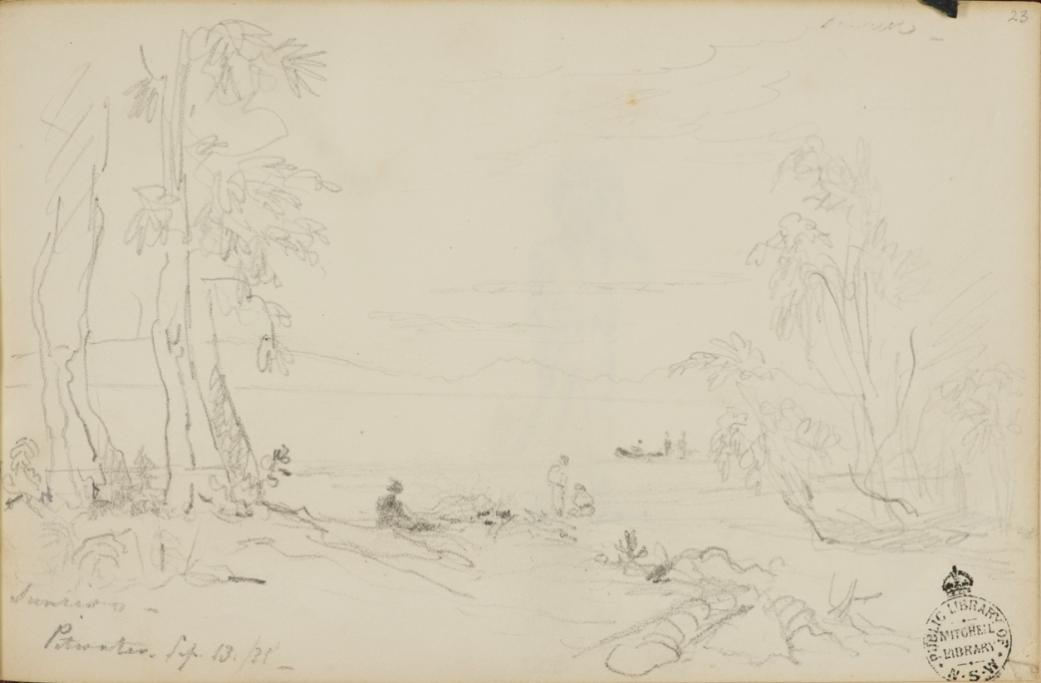
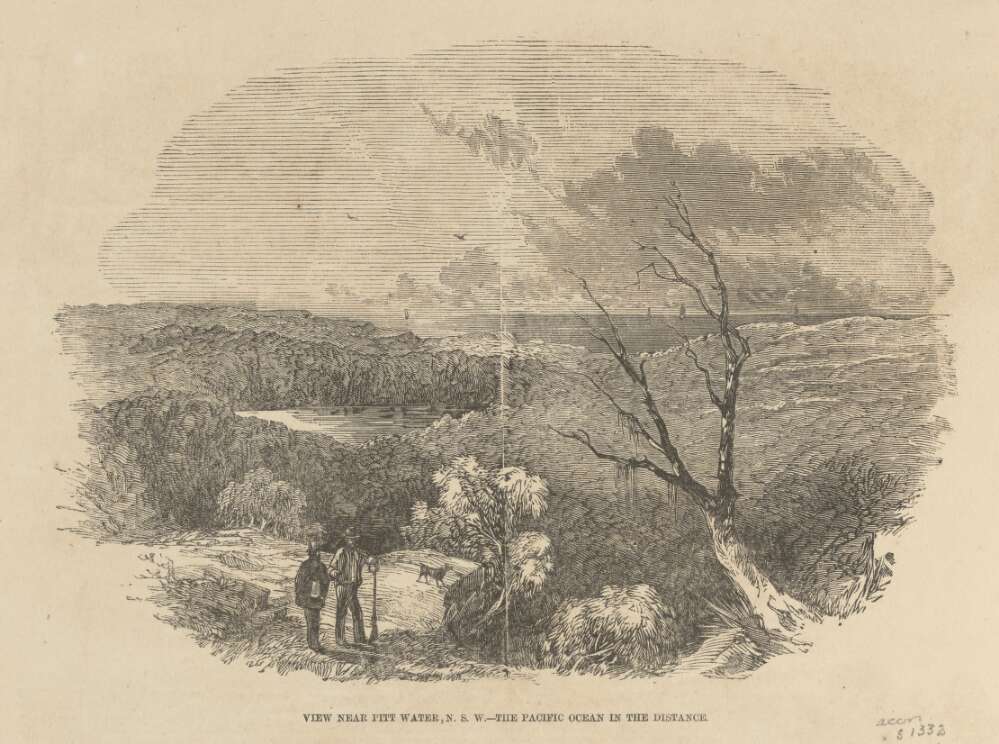
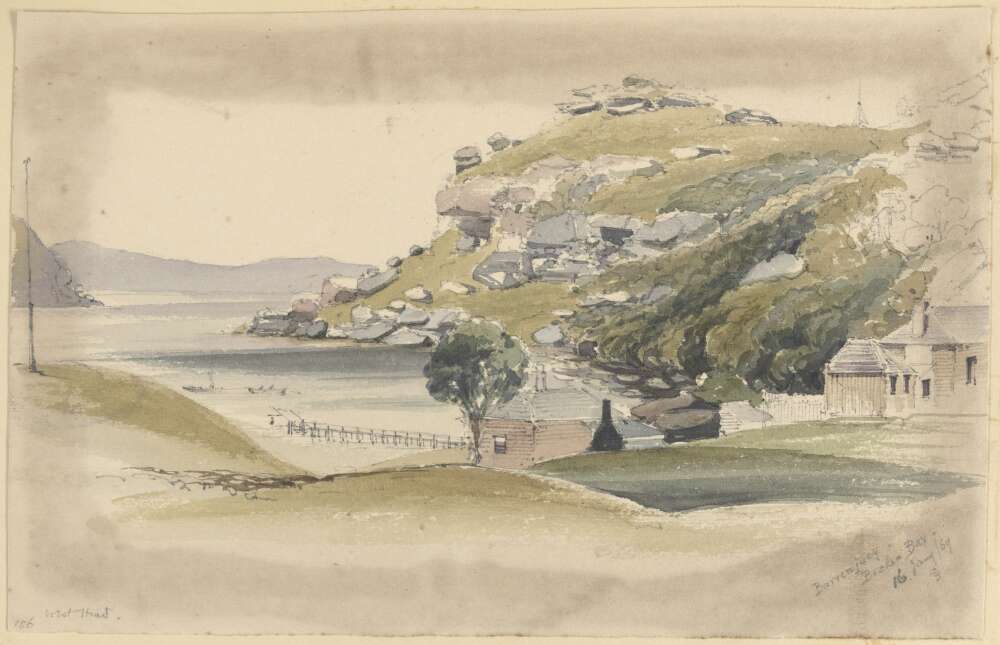
LIGHTS ON BARRENJUEY, BROKEN BAY.
Two lights were exhibited on Barrenjuey, which forms the south head of the entrance into Broken Bay, for the first time, last night. It will, perhaps, be in the recollection of the readers that the sites of these new lights were fixed on the 8th of last mouth, when a party of gentlemen, consisting of the Governor, the Superintendent of Pilots, Captain Hixson, the Colonial Architect, Mr. Barrett, the Engineer-in-Chief for Harbours and Rivers, Mr. Moriaity, Mr. Coles, of the Colonial Architect's Department, Mr. Stewart, M.L.A., Mr. Trunks, M.L.A., and several other gentlemen, went down to Broken Bay in the Government schooner Thetis. The site of both the lights having been fixed, the work of erecting the temporary towers was commenced almost immediately, under the superintendence of Mr. Hudson, of the Colonial Architect's department and they were finished about a week ago.
The towers are temporary structures, the inner one being twenty feet above the rock, and the outer one ten feet.. Each tower is constructed of four hardwood posts, firmly fixed in the rock, which has been excavated to receive them, and they are protected from the weather by sheets of corrugated iron. The lanterns are fixed up on the wooden structure, and about four feet below the lights running round each tower, is a platform from which the trimmer can light and clean the lamps. A sleeping berth for the light-keeper has been fitted up in the larger tower, which is placed at a distance of 1180 feet in a W.N.W". direction from the outer tower. The outer light is 315 feet and the inner one 347 feet above high water mark.
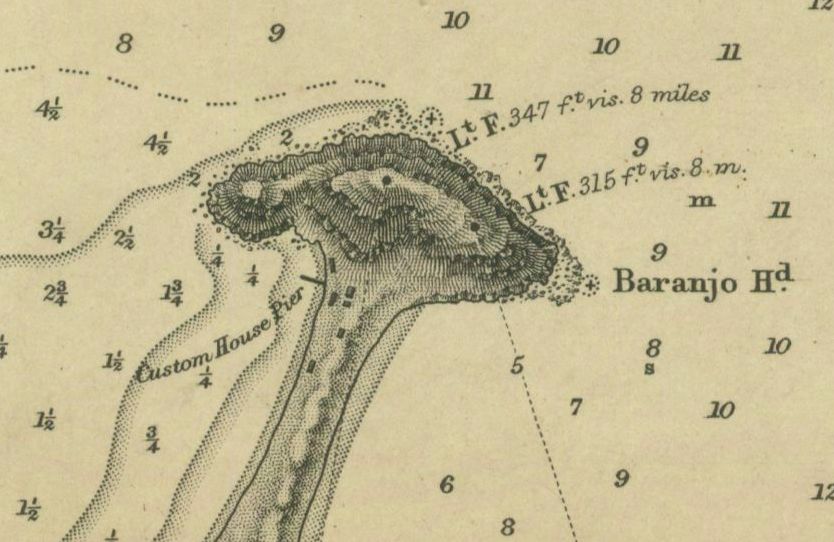
Australia East Coast - New South Wales Broken Bay [cartographic material] 1869 Edition - Surveyed by Capt. F.W. Sidney, Nav. Lieut. J.T. Gowlland & C.George Nav. Mid. R.N. 1868. Series note: British Admiralty nautical charts ; 2166 , Courtesy Stat Library of Victoria
Each tower is furnished with three lanterns lighted with kerosene, to form a fixed bright light, and will be visible at a distance of about twelve miles to seaward. From a notification to mariners in the Government Gazette, we learn that both lights will be eclipsed between the bearings of South mid S.S. E ½ E., to prevent them from being seen over the land which recedes from the Outer South Head, and also to ensure a vessel to pass a safe distance off the South Head, when running with the lights in sight for the purpose of obtaining anchorage in Broken Bay.
The lower, or outer light, will be lost sight of in rounding Barreujuey, but the upper light will be a good guide for coasters bound to Pitt Water, or for large vessels anxious to obtain shelter in Flint and Steel Bay. On Tuesday last the Thetis went down to Broken Bay, taking as passengers Captain .Myhill, Harbour Master of Port Jackson, Mr. Coles, and Mr. Robinson, the manufacturer of the lanterns, when both lights were exhibited for a short time, and their position and bearings examined from various points seaward by Captain Myhill, prior to the return of the steamer to Sydney. It was intended to have a picnic to mark the occasion of the lighting up of these two lights-which, by the way, are to be called " Stewart's Lights," after Mr. Stewart, one of the members of the Assembly for East Sydney, who has been the principal mover in the matter, and had the weather continued fine the Thetis would have gone down to the bay yesterday morning with a number of gentlemen. As the weather proved so stormy, the trip by sea had to be postponed, and Mr. Robinson, and Mr. Mulhall, who has been appointed light-keeper, went overland to light up last night. A notification for the intention to exhibit these lights has been in the papers for a fortnight, but it should undoubtedly have been given much earlier-Sydney Herald, July 21st. SHIPPING INTELLIGENCE. (1868, July 29). The Mercury(Hobart, Tas. : 1860 - 1954), p. 2. Retrieved from http://nla.gov.au/nla.news-article8853675
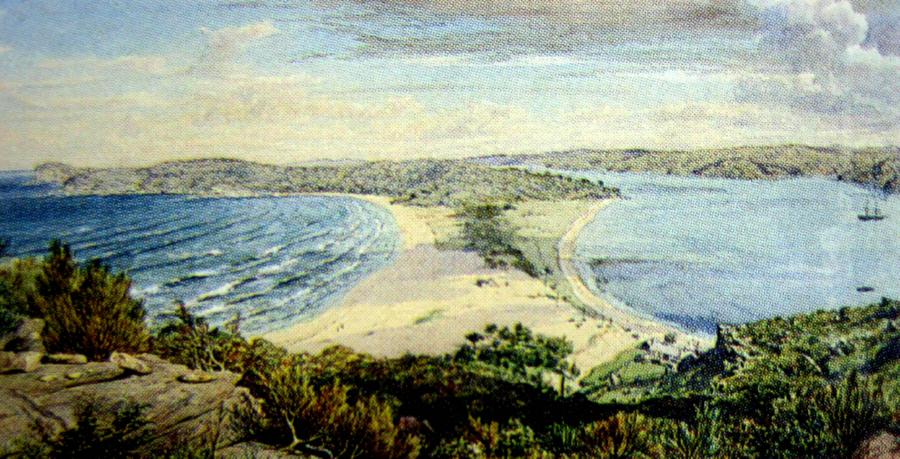
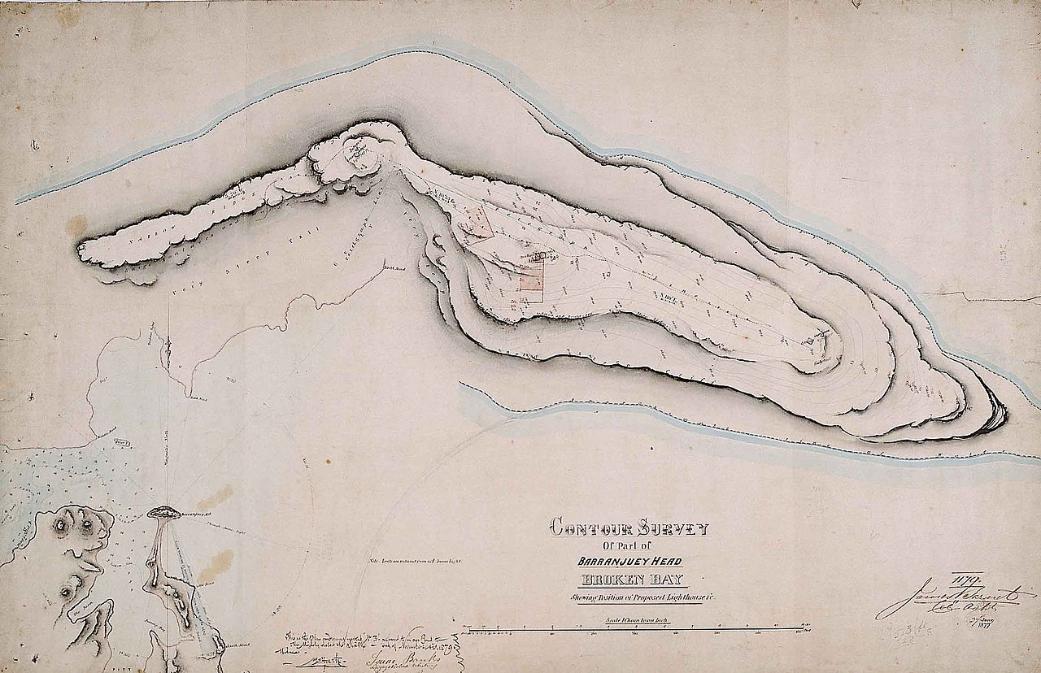
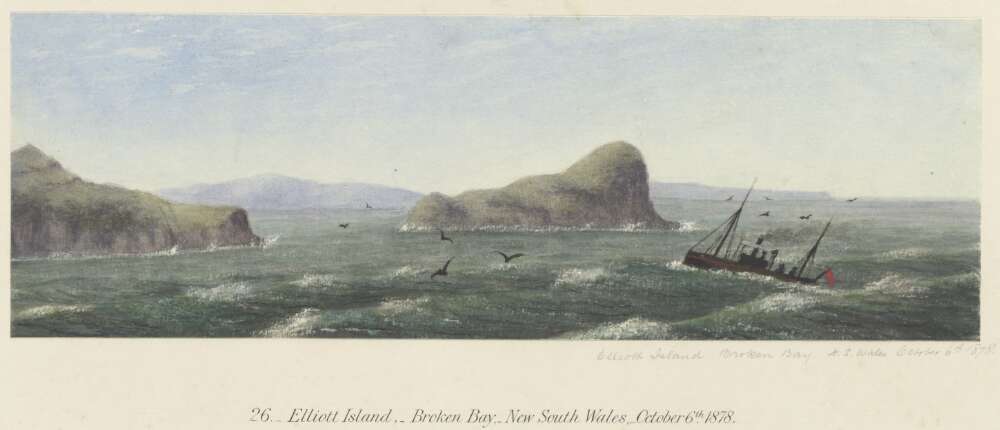
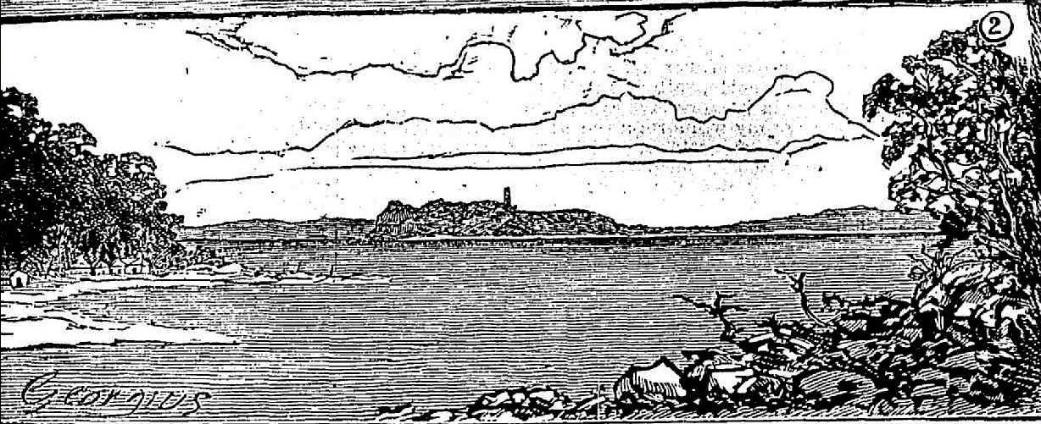
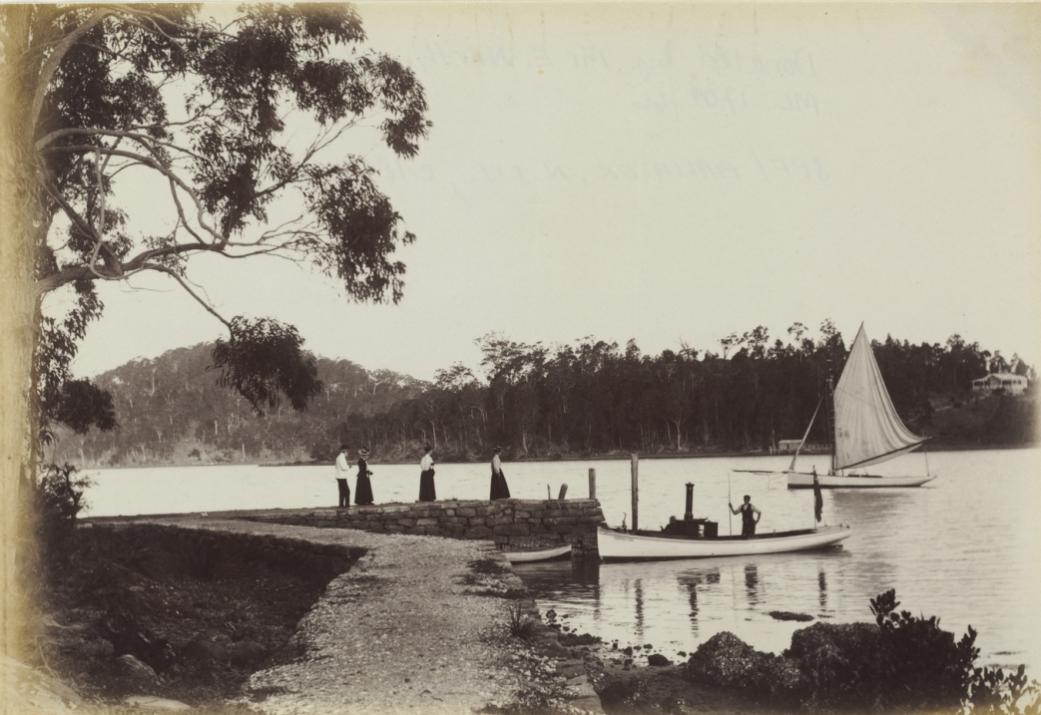
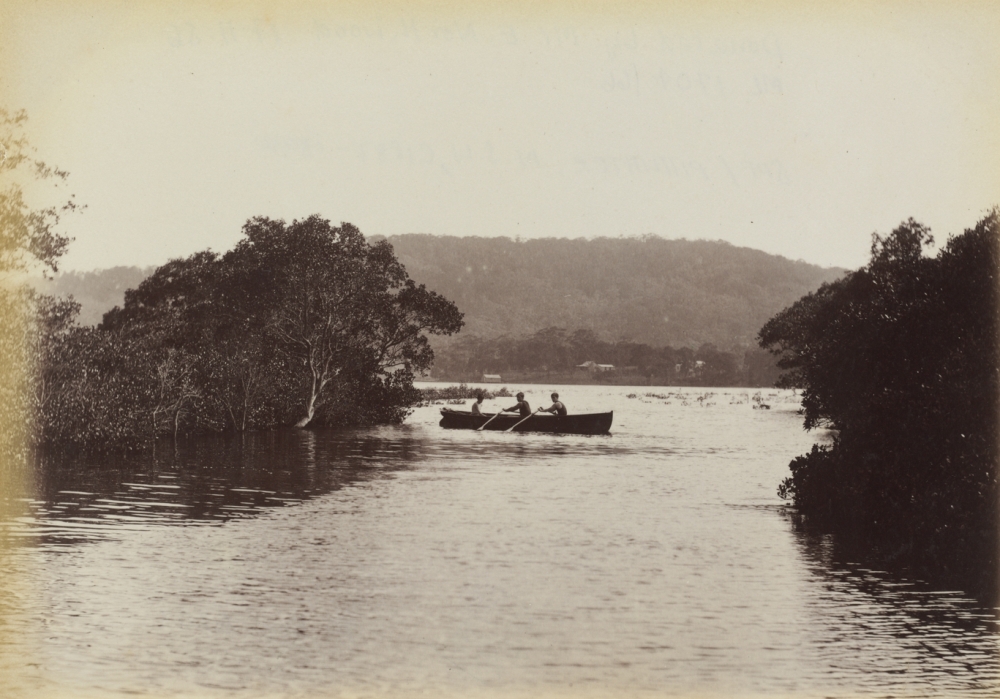
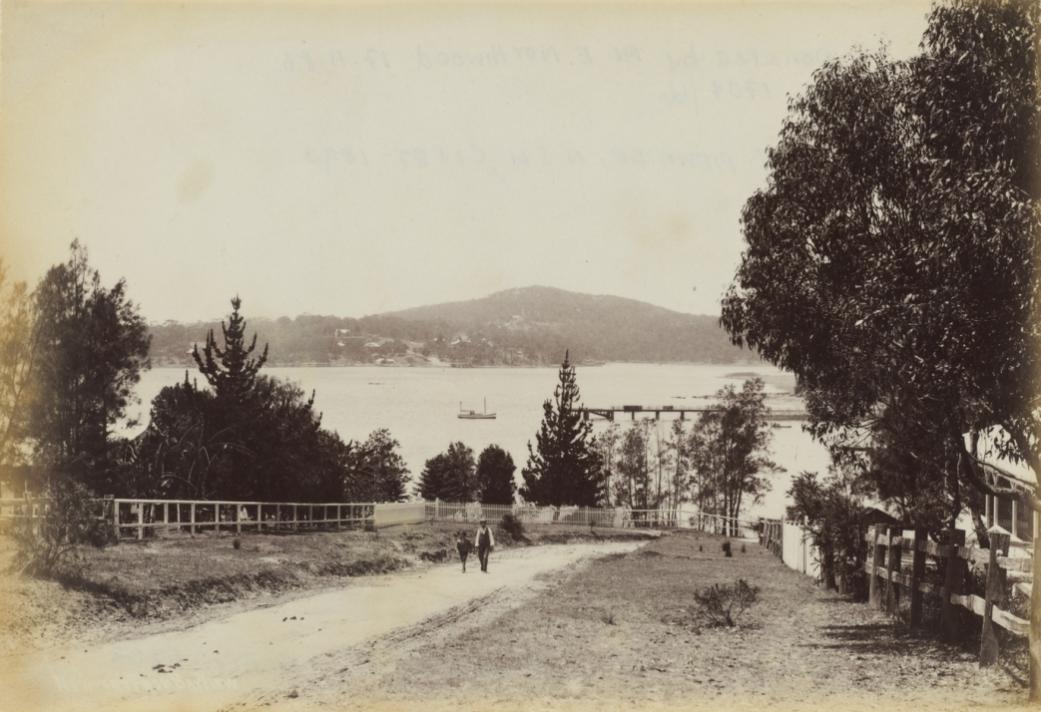
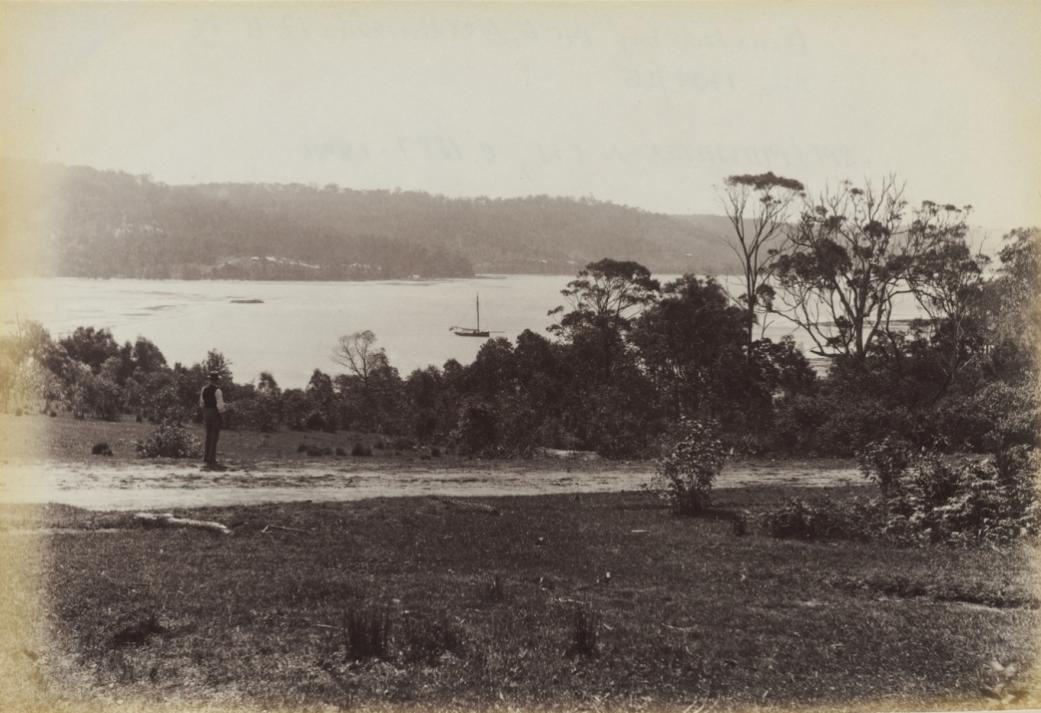
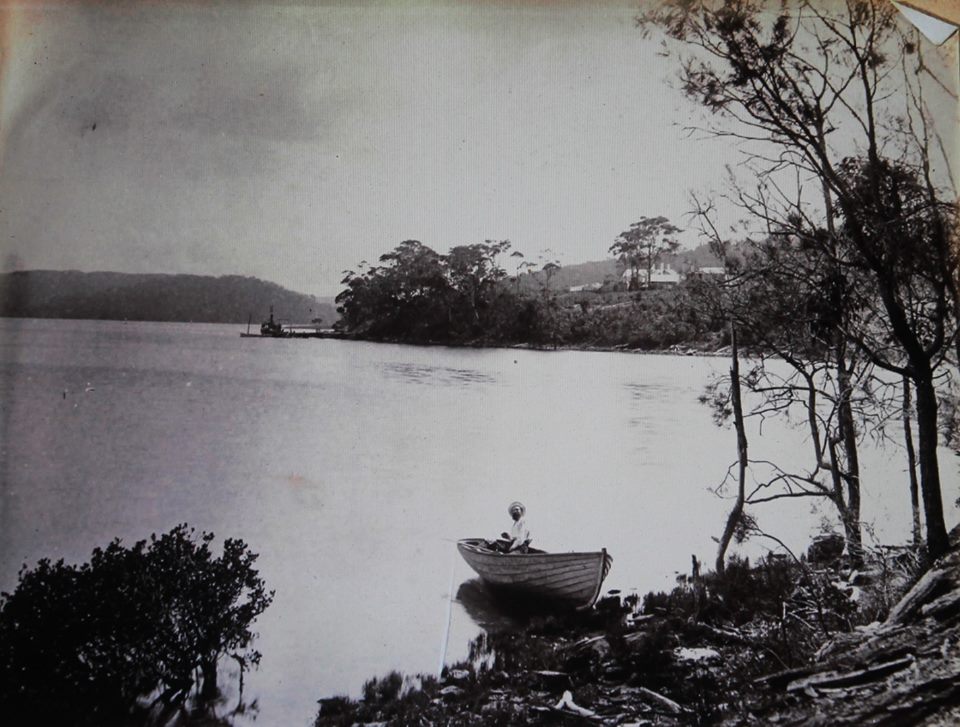
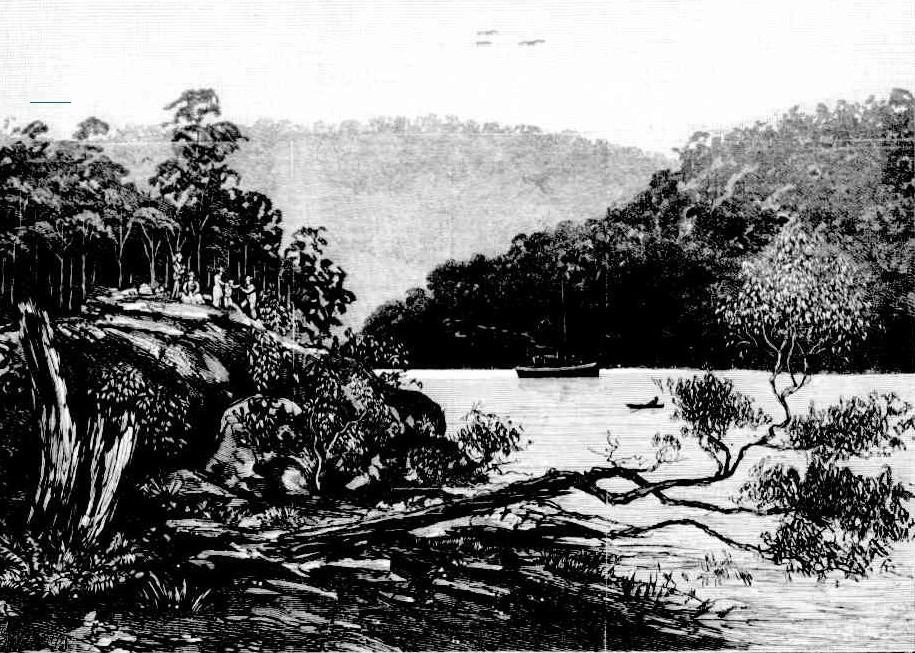
Blind Cove, Pittwater, N.SW. This beautiful little bay shown in our illustration, formerly private property, has been made a reserve of by Government, and is now practically a cruising1 ground for the yachting community of Sydney. A more useful and delightful sheet of water could not have been chosen, situated as it is at the entrance to the Hawkesbusy River, just opposite Barrenjoey. To the north is the broad expanse of water known as Brisbane Water, and to its south Pittwater, which is now connected with Sydney, Newport, and Manly by means of a coach running daily. Blind Cove, also called The Basin, is a safe refuge in the very worst of weather. It owes its name of Blind Cove to the fact of its being invisible to the incomer until he has almost reached its entrance, which is very narrow and hidden from view by a low stretch of sand ; but inside this narrow passage there is deep water, and the height of the hills surrounding the basin (some 600 feet) so thoroughly shelter it from heavy winds that it might well be called Looking-glass Bay. It is on account of this, and also the beauty of the surrounding scenery, that has made it one of the principal rendezvous of yachtsmen. Blind Cove, Pittwater, N.SW. (1883, March 10).Australian Town and Country Journal (Sydney, NSW : 1870 - 1907), p. 26. Retrieved from http://nla.gov.au/nla.news-article70996783
A Glimpse of the Hawkesbury.
By Francis Myers.
ILLUSTRATED BY J. C. HOYTE.
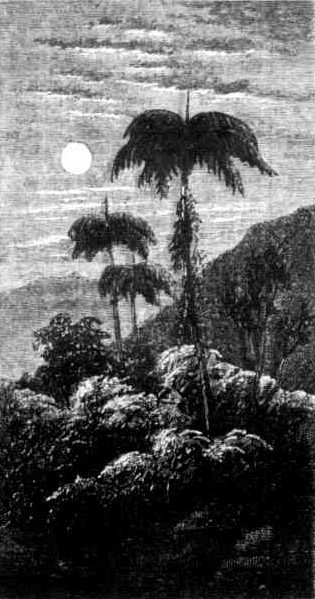 That blue glimmer of electric light along the quay gleams as the entrance of an infernal city, and the red lights above beam as the eyes of a thousand devils, and the smoke goes up as the smoke of a place of torment; for we brain-wearied workers, who have been ground in its mills for many months, are flying away to rest. Yes ; to rest amongst the cool sea spaces and the nodding caps and the sleeping islands and the majesty of beauty and the blessed peacefulness and quiet of that larger heaven within the heads of Broken Bay.' We travel by Manly, and a short hour's journey brings us to that fair suburb. From Manly, by the primitive old coach, to Pittwater. Horses rough, harness rough, coach shaky, road bumpy; still, however rude, right pleasant work, for the great white Easter moon floods all the land with silver sheen and mystery. The low hills rest like sleeping creatures with folded wings, the still lakes are as great glassy windows through which spirits of the inner world might peep at the outer glory, here and there stands a tall palm as a sentinel, and rounding headlands by the open sea the murmur of the waves come up as of a million sea doves cooing through their dreams.
That blue glimmer of electric light along the quay gleams as the entrance of an infernal city, and the red lights above beam as the eyes of a thousand devils, and the smoke goes up as the smoke of a place of torment; for we brain-wearied workers, who have been ground in its mills for many months, are flying away to rest. Yes ; to rest amongst the cool sea spaces and the nodding caps and the sleeping islands and the majesty of beauty and the blessed peacefulness and quiet of that larger heaven within the heads of Broken Bay.' We travel by Manly, and a short hour's journey brings us to that fair suburb. From Manly, by the primitive old coach, to Pittwater. Horses rough, harness rough, coach shaky, road bumpy; still, however rude, right pleasant work, for the great white Easter moon floods all the land with silver sheen and mystery. The low hills rest like sleeping creatures with folded wings, the still lakes are as great glassy windows through which spirits of the inner world might peep at the outer glory, here and there stands a tall palm as a sentinel, and rounding headlands by the open sea the murmur of the waves come up as of a million sea doves cooing through their dreams.
A FEW TALL PALM TREES STAND AS SENTINELS.
High shorelands sink to shelving braches, and there through the weird water the pink sand flushes, as the cheek of a young Endymion to the kiss of the lady moon. Still tearing along with wboop, and halloa, and much persuasion to the tired horses, and by a quick turn upon a sidelong track into woodlands high and dank and dewy, all dark below save for the glimmer of a few white starry flowers, but fringed with silver aloft, for it is midnight, and the moon is in mid heaven. And 'twere well if we could all go to heaven for an hour or two, for the mundane aspect considered in mundane fashion is not inspiriting The journey is ended, and from a grim house comes a grim custodian, gaunt and churlish. House, man, and furnishings all much alike — better forgotten, o-better, perhaps, fixed in memory as things seen upon the shores of that lovely water in the Easter of 1883. What will it be in '93? Certainly it will not be fairer than it appeared at the very earliest dawning of the following day. Look outward and be happy, for the sunrise has not yet lipped the hills. The lovely purple uncrowned by one single gleam of gold deepens to indigo upon the edge of the water, which in its centre reflects the gray of the sky and the dying lights of some few pale twinkling stars. The birds are piping timidly as fearing to break the solemn hushfulness.
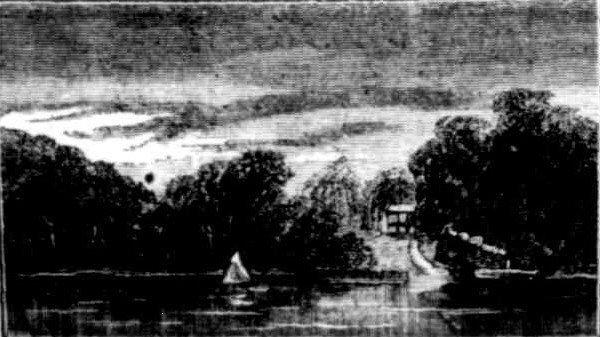
NEWPORT BASIN.
The tall trees hold every bough and branch and tiniest leaflet motionless. Only the blue mist quivers waiting, waiting — and suddenly, swiftly as the unfurling o1banners at a trumpet blast, a red light flashes on the high clouds to the westward, and the blue mist is burned up, and the glassy face of the water is broken, and the mystery of beauty of the dawning is thrust out of the world be for the glorious majesty of the day. The day spreads his livery of gold and brightness upon All the hills. The day smites the inner waters and the outer deeps with his strong hand and the white caps leap and flash, and the surges ring upon sand and rock. But very soon that white sail we are awaiting comes stealing, floating, gliding on, compelling the little fluttering breeze to her will, straight up the mid channel and round with a flutter of canvas abreast the narrow space of half civilized shore. And quickly we are on board and at rest.
There is no rest in the world to compare with that perfect abandonment, that absolute repose which comes with the idle lap of water against the vessel's sides, the near shores drifting backwards, a new heaven and a new earth perpetually opening ahead. At noon that autumn day we sailed into ' The Basin 'and dropped anchor. Ten years hence the article will be qualification enough for that basin. It will be no more necessary to ask what basin than what queen when Englishmen stand together to do allegiance. There are beauties enough within our own harbour gates, but they areas tiny pearls to an emperor's crown-jewel when compared with this. Here is a deep, still pool, a Constance, a Leman, a Katrine filled twice a day with the vigour and freshness of the strong sea tides.
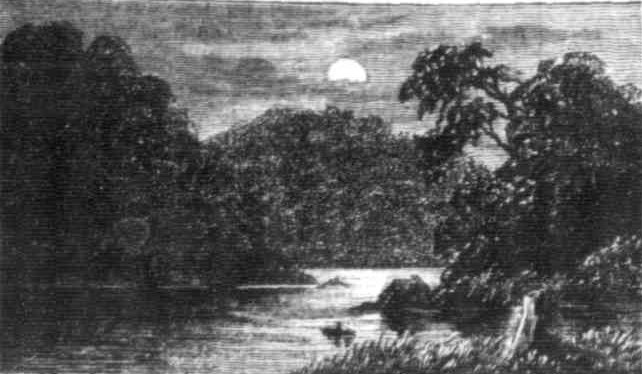
THE INNER BASIN.
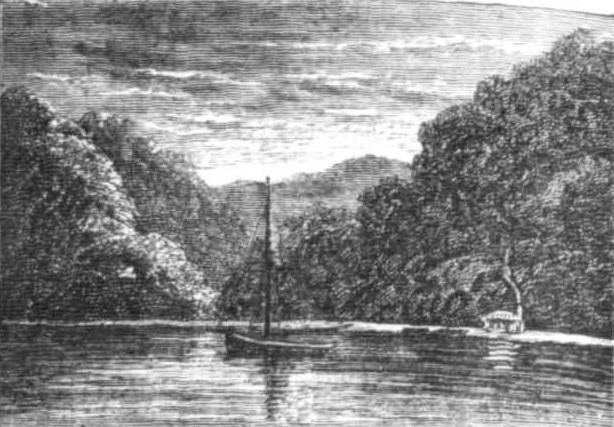
THE OUTER BASIN -MARY ANN'S HUT.
Round Barrenjoey comes the swirling rush, rolling along the eastern harbour branch through the deep channel, washing the point of the sandspit, whispering on every beach, and lapping gently at the rocky base of every cliff, then resting for a quiet hour while the sun sets or the moon rises, and some few strange birds chirp contentedly in the forest. The hills, of a lordly size in the daylight, rise huge and vast when the moonshines. The great tree trunks below are scarcely perceived, but above, each leaf edge touched by the white light sparkles and gleams, and the waterfall sings louder through the dark, dank fern, and lazily-moving oars strike fire from the blackness that is barred from shore to shore by the long moon rays. Strange that no poet has sung of the mystery of the moonrise, the dawning of the night light. It is colourless but marvellously beautiful, a perfect revelation of all the divinity of form. 'What will the future show us about that basin's banks? Houses, homes, pleasure grounds, one of the chief playfields of the city ? It has marvellous capabilities. Room enough upon the promontory jutting out from cliff toward cliff for such an hotel as we have not yet seen in Australia, water enough, always smooth and still and pure, to give battle space for half-a-dozen warships, or to bathe a nation, and water that about three chains of stout sea- fencing would render absolutely safe against all sharks and finny monsters.
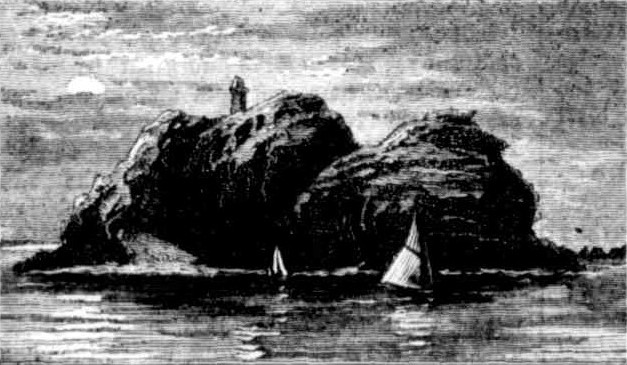
BARRENJOEY.
Now, a yachtsman's cottage and a fisherman's hut occupy the promontory, and for 11 months out of the year there is no more life or appreciation about the basin than about some lone tarn of the backblocks upon whose shore has been erected a boundary rider's hut. Morning brings us a dip in the lazy rollers upon the sand, a splash beneath the fresh water, raining from the ferns, a great breakfast of the black bream that swim into the fish-trap, poor foolish creatures, innocent and trustful as if their home were a thousand miles from any dwelling of man. Noon sees white wings spread again, and a further flight towards undiscovered beauties. Seeking the true Hawkesbury, we beat down abreast of the Heads, past the long sandspit coupling Barrenjoey to the mainland, regarding with much interest the huge,
grim, wave-washed, time-worn crag that lacks but around tower and a romance to fetter it to the hearts of a people. It bears a lighthouse useful to the mariner, but only vexatious to the dreamer. Wild and strong and stern frowns that rock with the sea foam at its base and the few sparse wind-tortured trees about its bead. It should have memories other than those of lamp- trimmers' yarns and convicts' jeers and groans.
And Elliott Island, lying almost in mid-channel, is also an artist's rock, so strangely shaped as to be capable of any comparison ; a lion couchant, a headless sphinx, a remnant of some giant's work of the world's strong youth worn down to vast indistinctness by winds and waves. Ah ! let us recall one evening when moored off the west head, the island and the rock, with every distant point, and all the dome of Heaven and the spaces of the sea, were seen transfigured and glorified by the out breathed spirit of a dying day. A thunderstorm had rolled over and lay upon the eastern bar and light from the clear inland western sky smote all its breast with fire. Some little shreds of cloud in midheaven let down a film of rain which bent the rays till they made bows upon the thundercloud, three separate trichord bands of light upon three points of distant land, an intense blackness below, and beyond a strange rich purple and greyness. Right out in the fore
ground Barrenjoey, his face as the face of an angry giant, every line, point, dent, and scar glowing as with the fire of an inward-born passion, and separated but by a silver band, the lovely Elliott Island cradled in blue water, fringed with the leaping foam, swathed in a silver haze that deepened to golden mist, end darkened too soon to a purple veil, all evanescent and beautiful as a dark proud woman's smile, and yet, thank God, in memory perpetual.
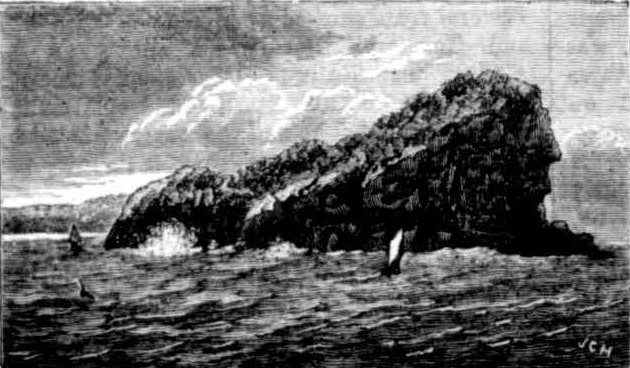
ELLIOTT ISLAND.
Round that West Head the river's mouth, or rather the ocean estuary, divides, and as we keep to the southern bank for a time the land is dreary, its monotony only broken by occasional fringes of sand and damp ravines, down which the waters flash, or trickle silently through wondrous mate of ferns, dense masses of luxuriant colour these ferns, showing every varying tints of tender green and rarest brown, the withered fronds above, dyed in the richest blood of autumn. But they are meanest details, thumbnail sketches in the great gallery. A merrier breeze pipes up from seaward, and in an hour we enter darker water, brown with all the silt of the big river, robbed of its beauty by the land stream and of its usefulness by the tide. A Glimpse of the Hawkesbury. (1883, April 7). The Sydney Mail and New South Wales Advertiser (NSW : 1871 - 1912), p. 640. Retrieved from http://nla.gov.au/nla.news-article162078253
These Illustrations would have been made from woodcuts or engravings.
A VETERAN ARTIST. DEATH OF MR. J. C. HOYTE.
By the death of Mr. John Clark Hoyte, which occurred at his residence, 141 Avenue-Road, Mosman, on Friday morning, the art world of Sydney loses one of its oldest identities. Mr. Hoyte was born in England in 1835, and received his early artistic training there, but some years of his early manhood were spent in the West Indies. Returning to England about 1860, Mr. Hoyte married, and shortly afterwards decided to go out to New Zealand, where some time after his arrival he joined the teaching staff of the Auckland Grammar School.
It was about this time that Mr. Hoyte's artistic work began to bring him into prominence. It was not long before he occupied a leading position in New Zealand art circles, and it is as a portrayer of the scenic beauties of the Dominion that he will be long remembered. Right up to the time of his death his work found keen appreciation there. About 1877 Mr. Hoyte left New Zealand, and settled in Sydney.
He was one of the founders and the first president of the Royal Art Society, among those associated with him at the time being Mr. A. J. Daplyn, the present secretary of the society. Of late years Mr. Hoyte had been but little before the Sydney art public. He was one of the old school, and found it difficult to adopt his ideas to the conventions of the newer artistic cult. The deceased has left a widow and two married daughters (one daughter having died some years ago), and several grandchildren and great-grandchildren. A VETERAN ARTIST. (1913, February 25). The Sydney Morning Herald (NSW : 1842 - 1954), p. 8. Retrieved from http://nla.gov.au/nla.news-article15400595
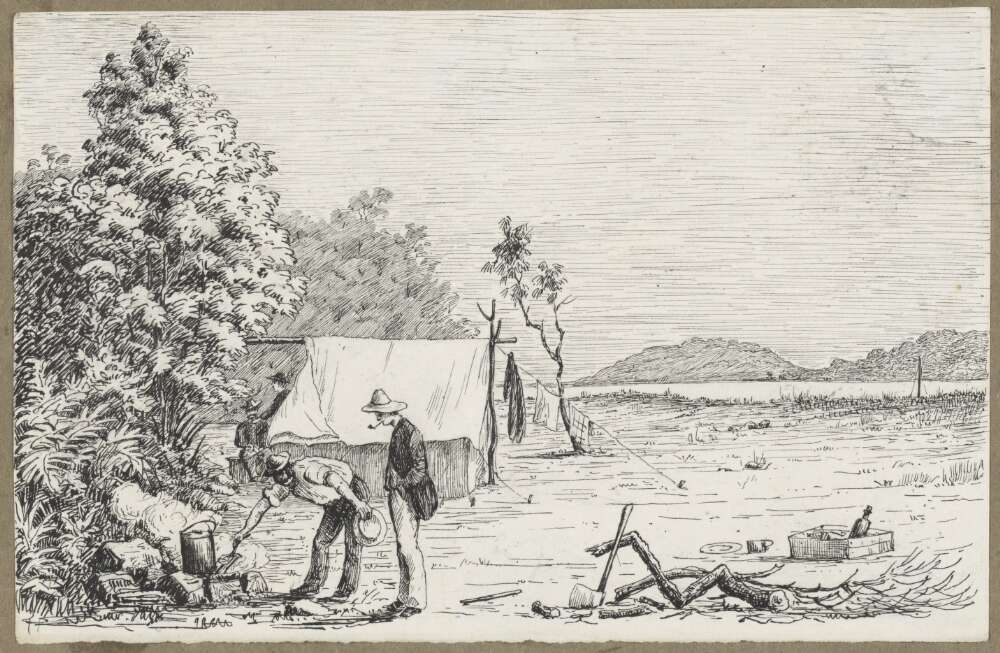
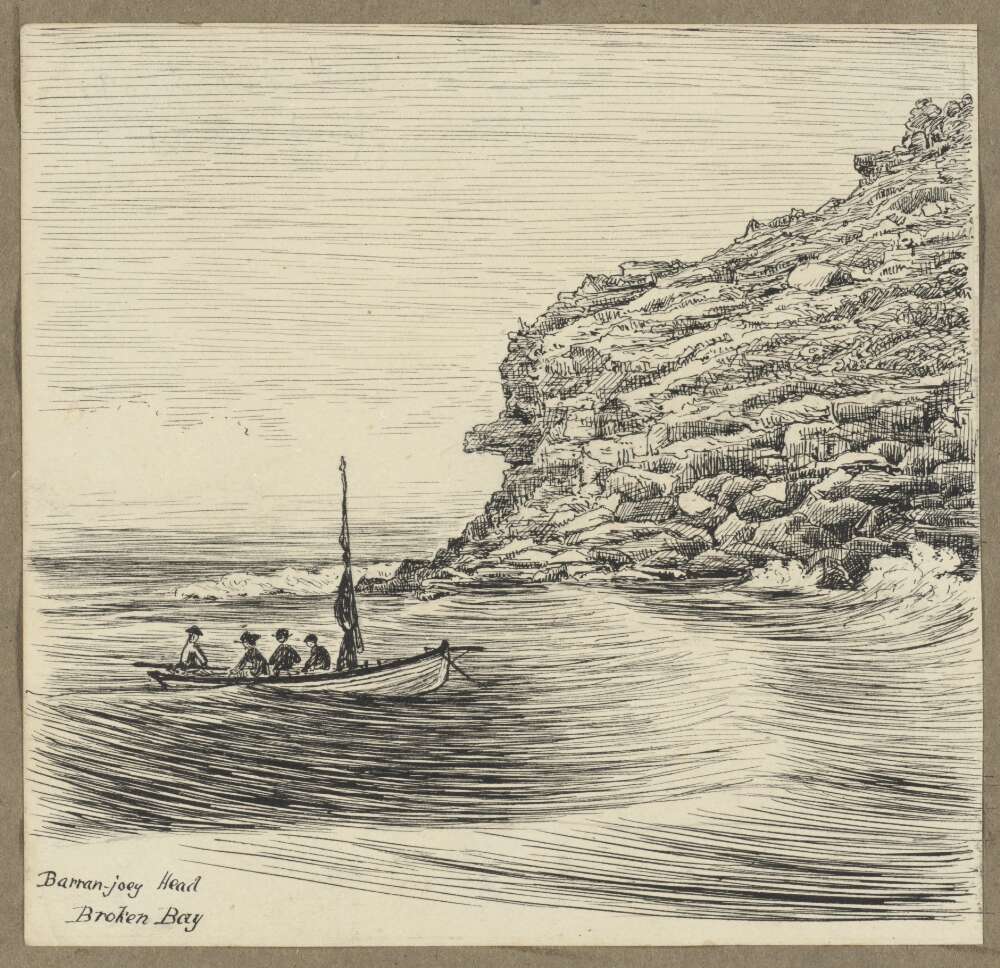
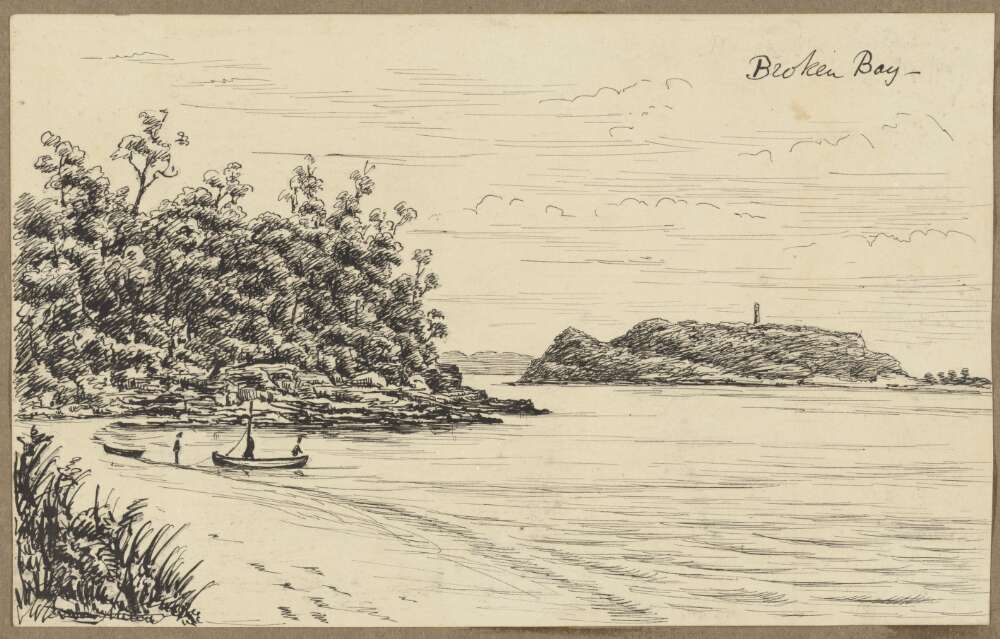
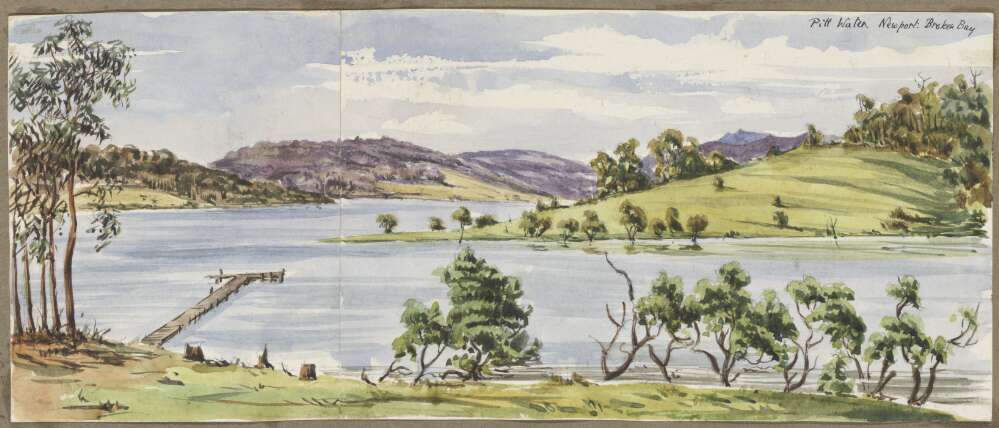
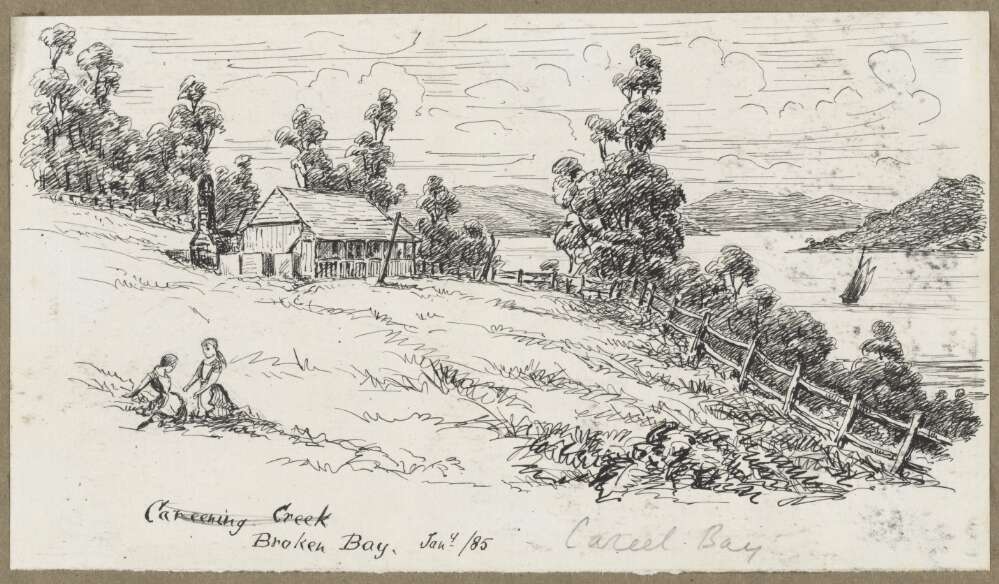
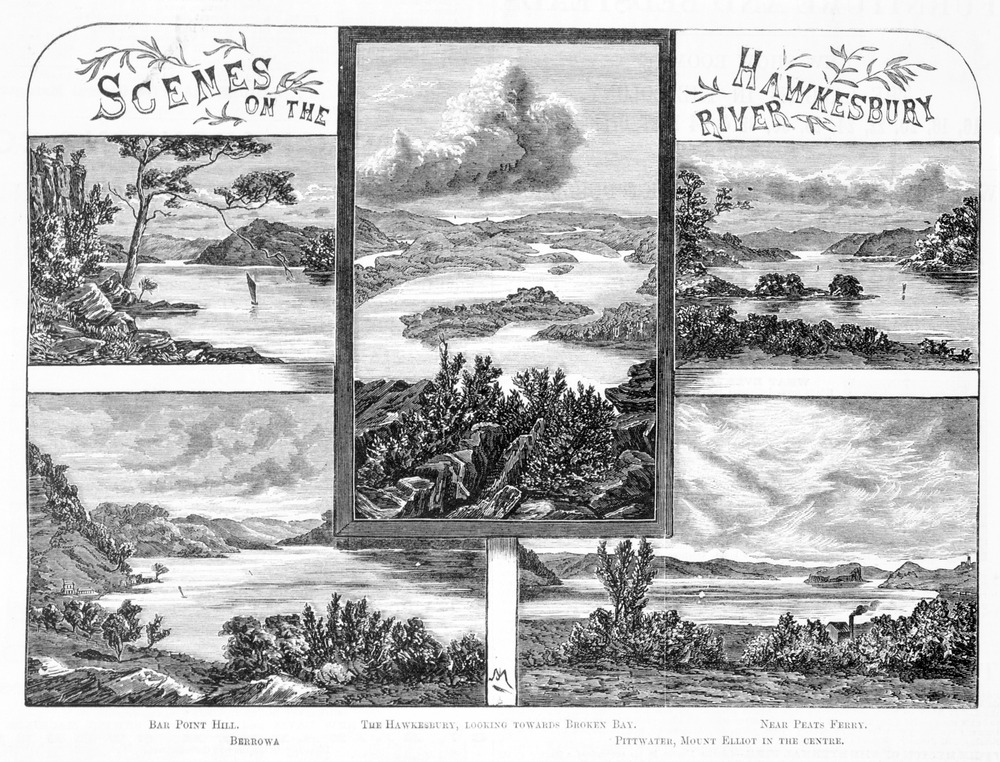
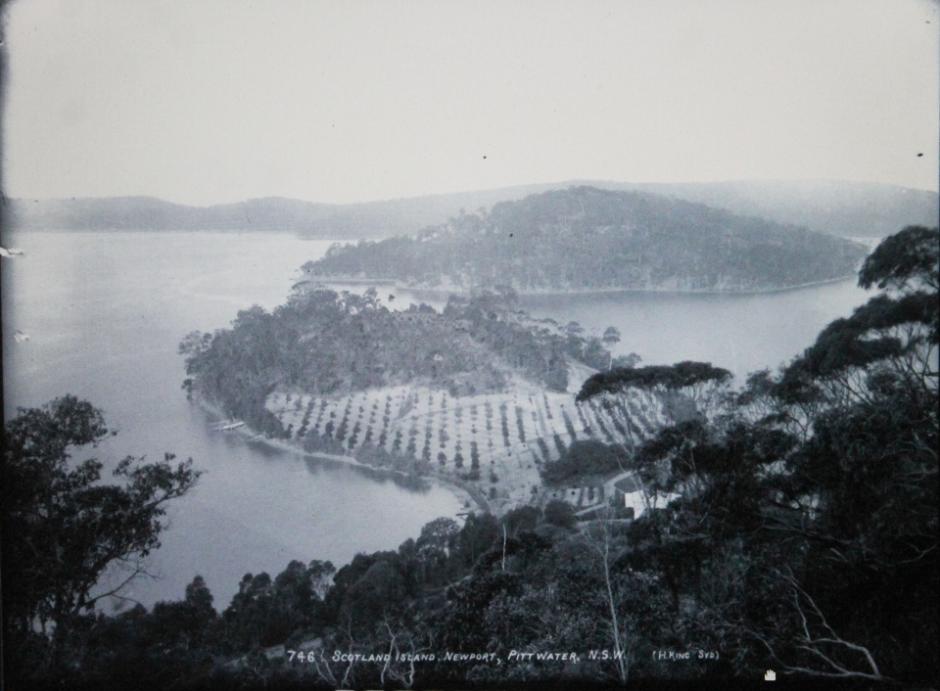
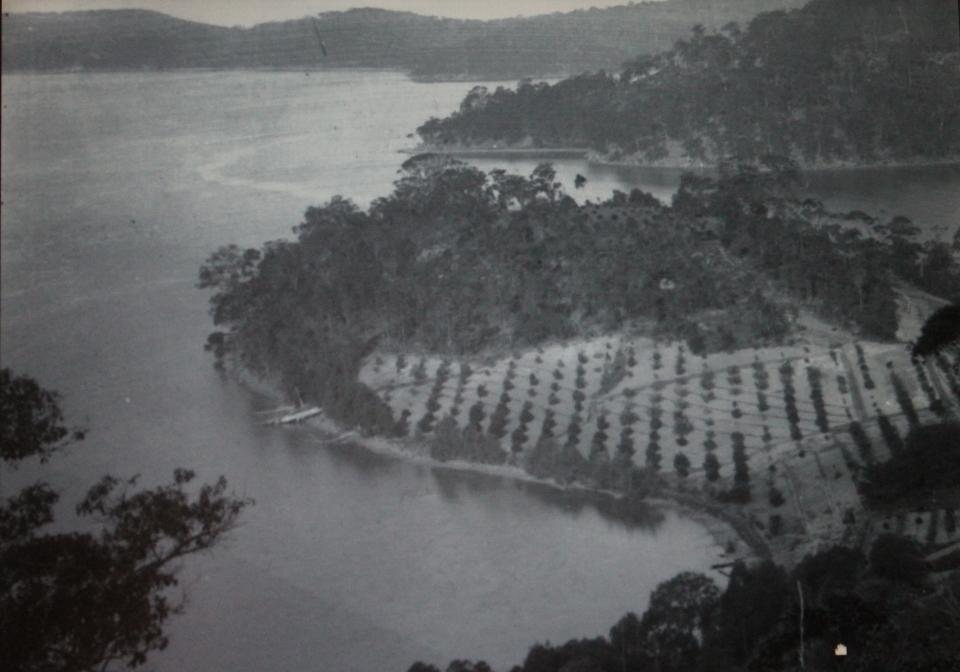
Above: 'Scotland Island, Newport, Pittwater, N.S.W.', Henry King, Sydney, Australia, circa. 1880-1900. ( Rocky Point ) 6/38 Tyrrell Inventory Number, 746, courtesy Powerhouse Museum. Below this - enlarged section from showing boat on beach
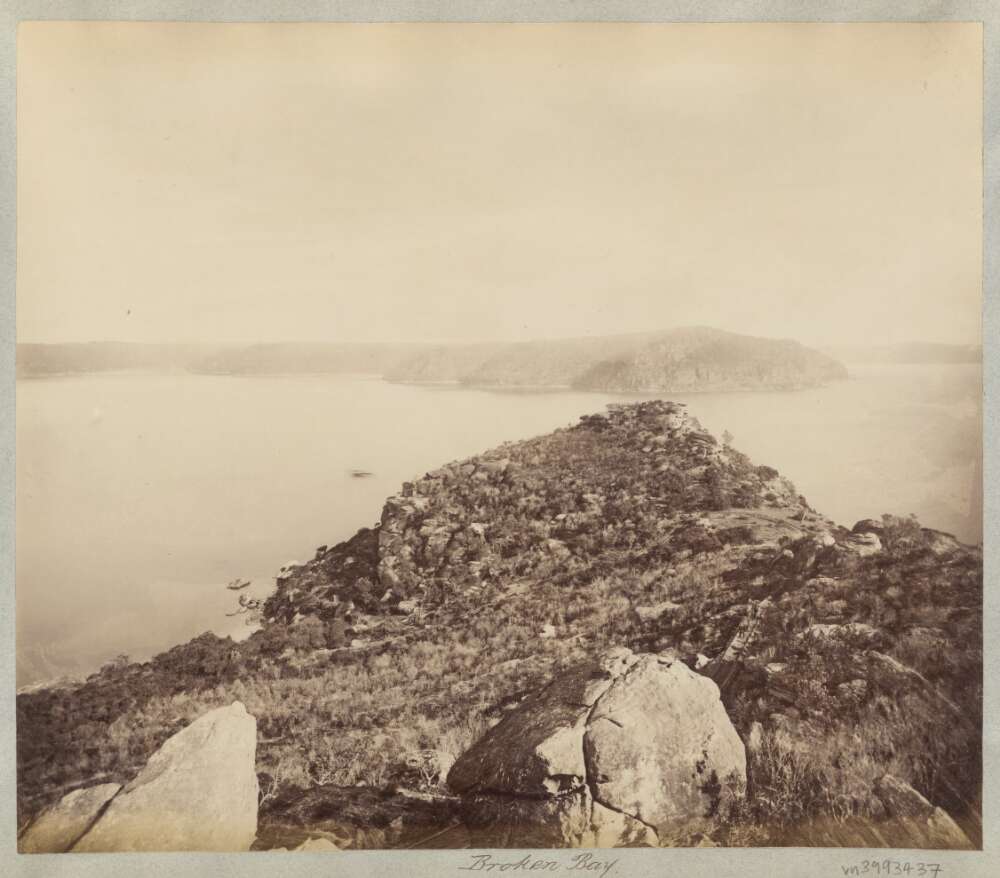
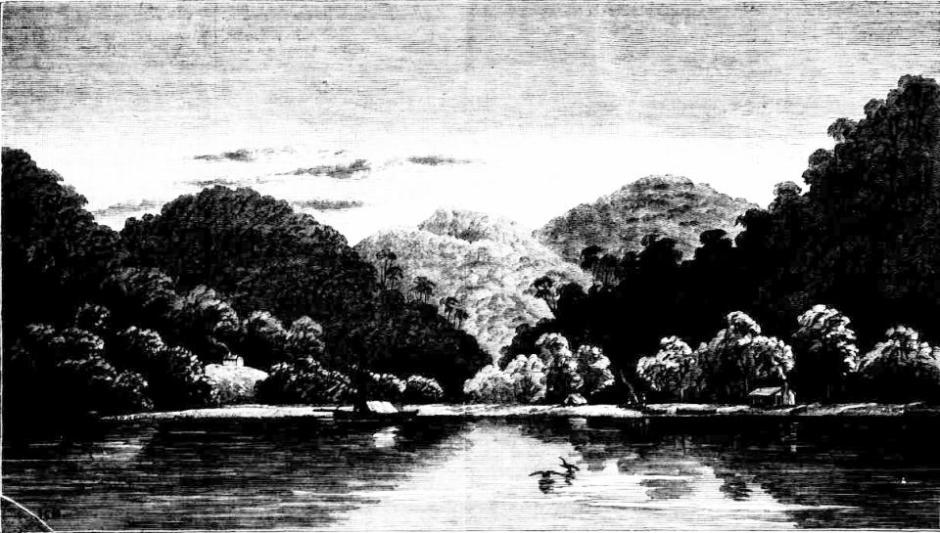
PITTWATER BASIN, HAWKESBURY RIVER. No title (1885, August 22). The Sydney Mail and New South Wales Advertiser (NSW : 1871 - 1912), , p. 400. Retrieved from http://nla.gov.au/nla.news-article162822900
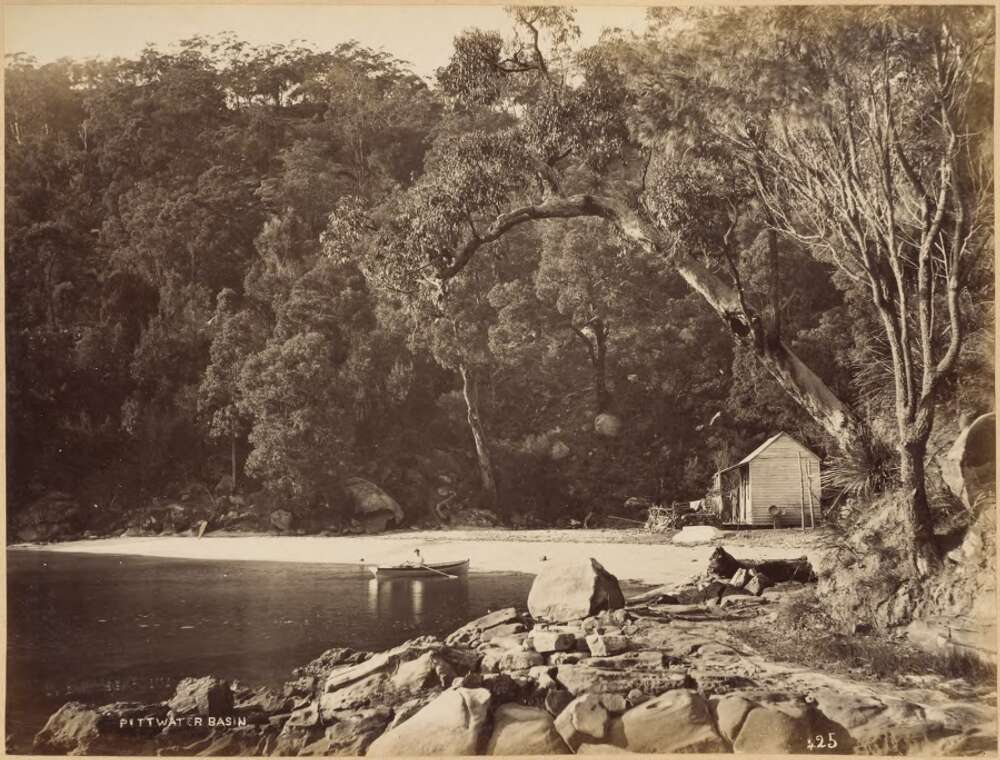
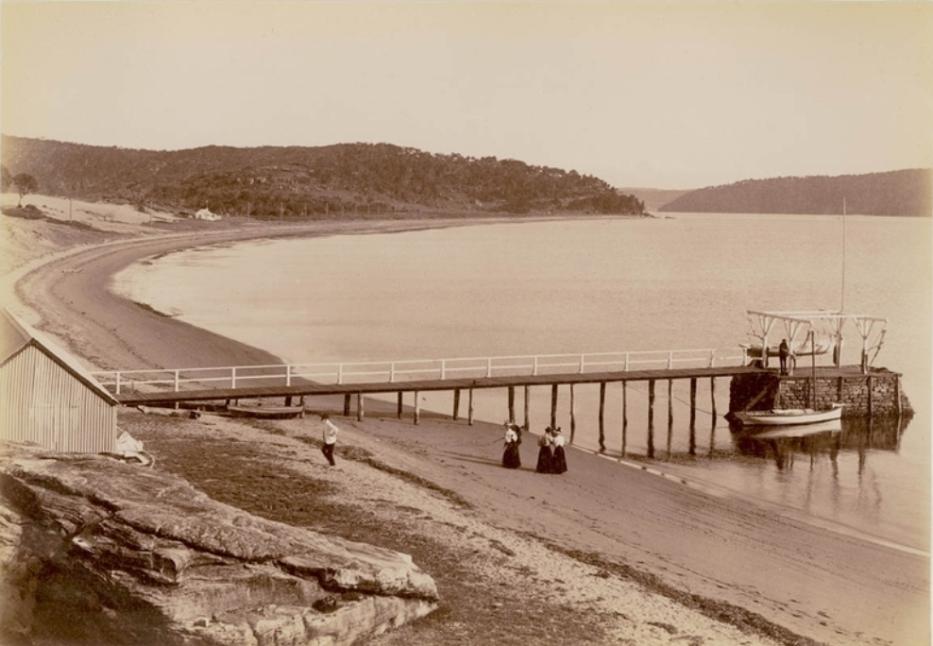
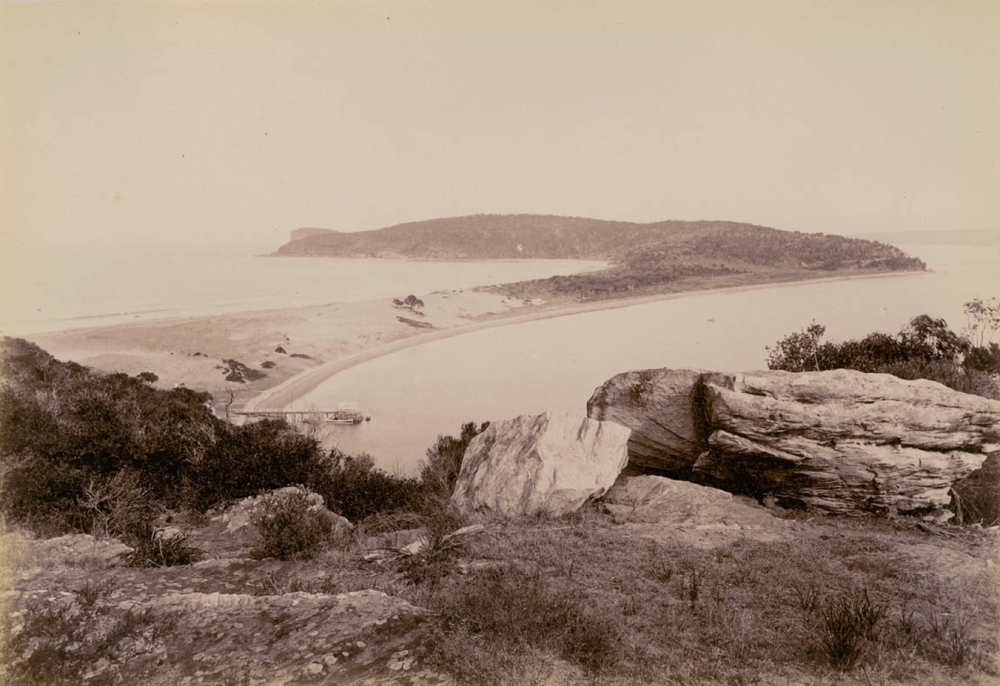
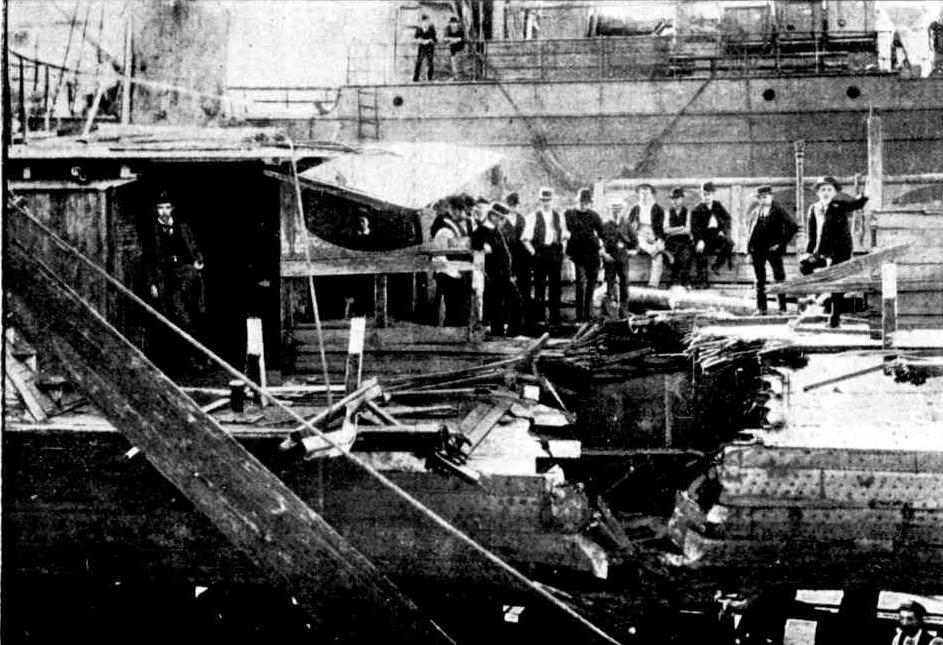
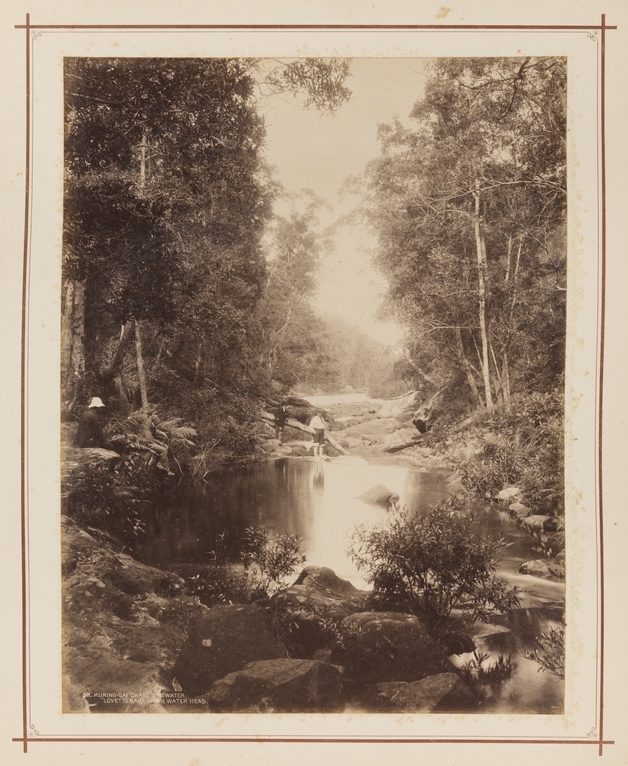
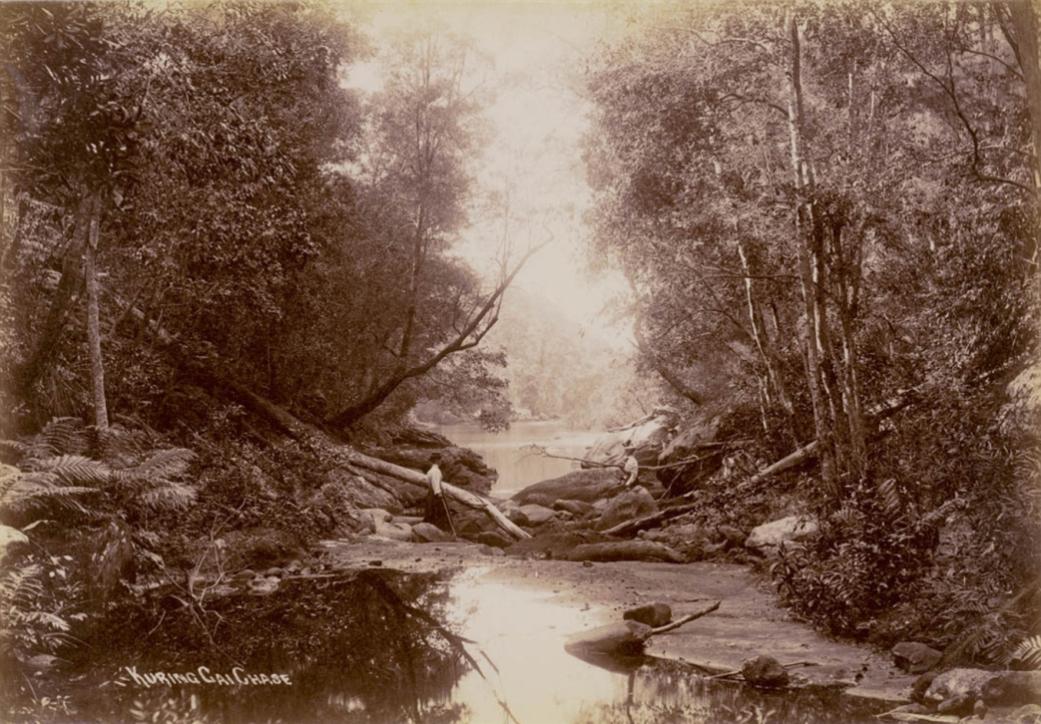
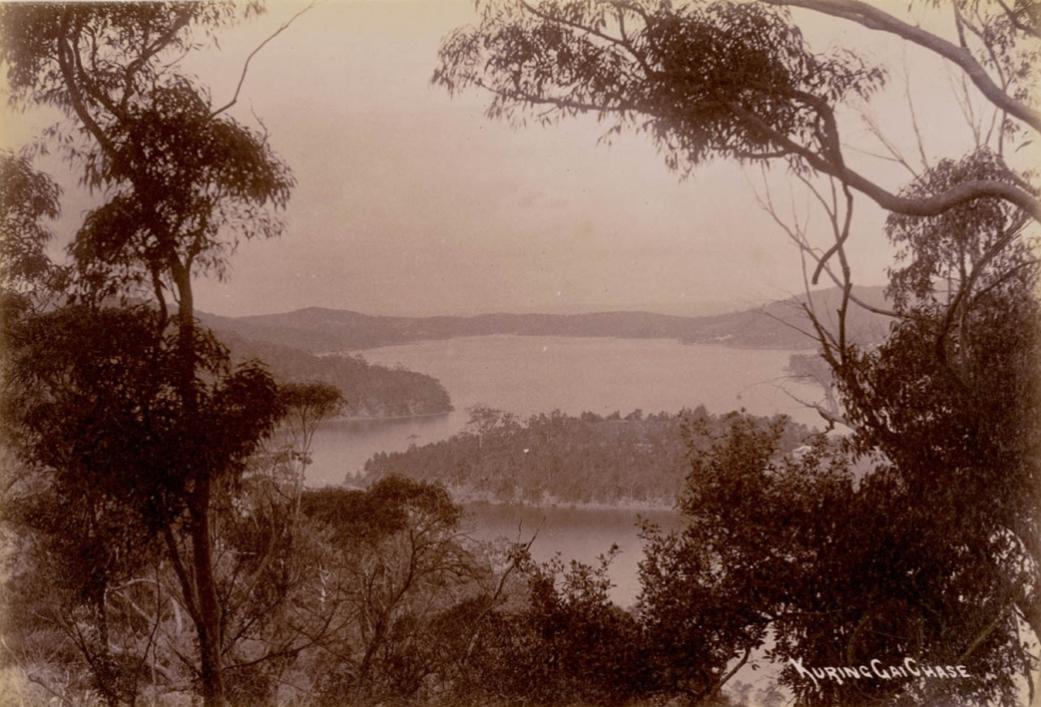
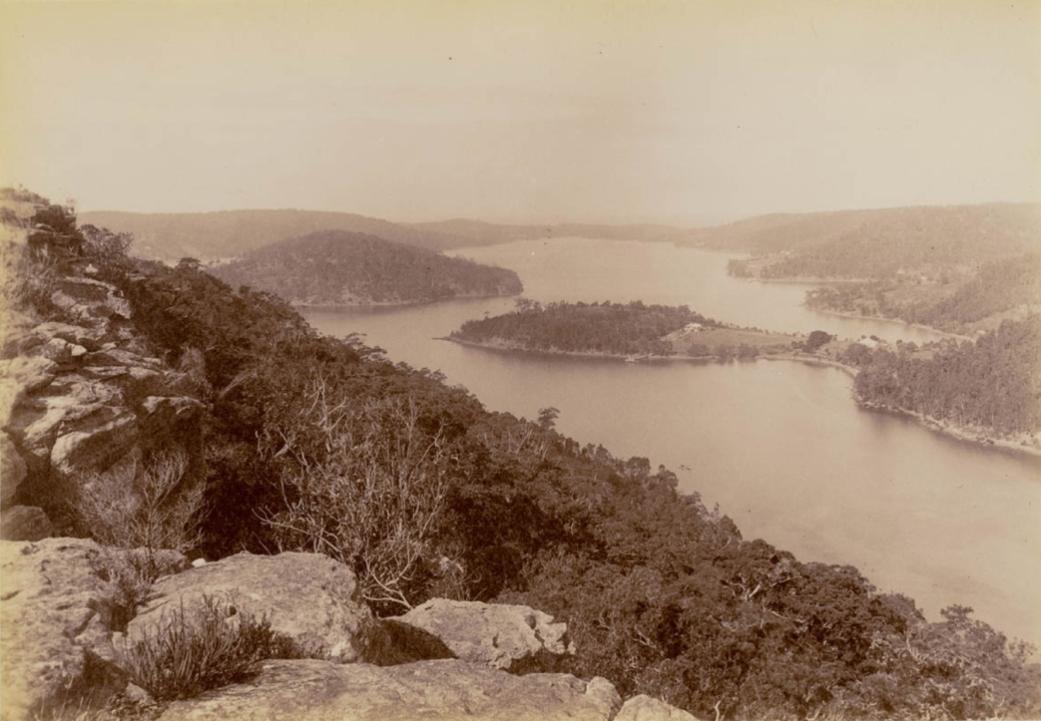
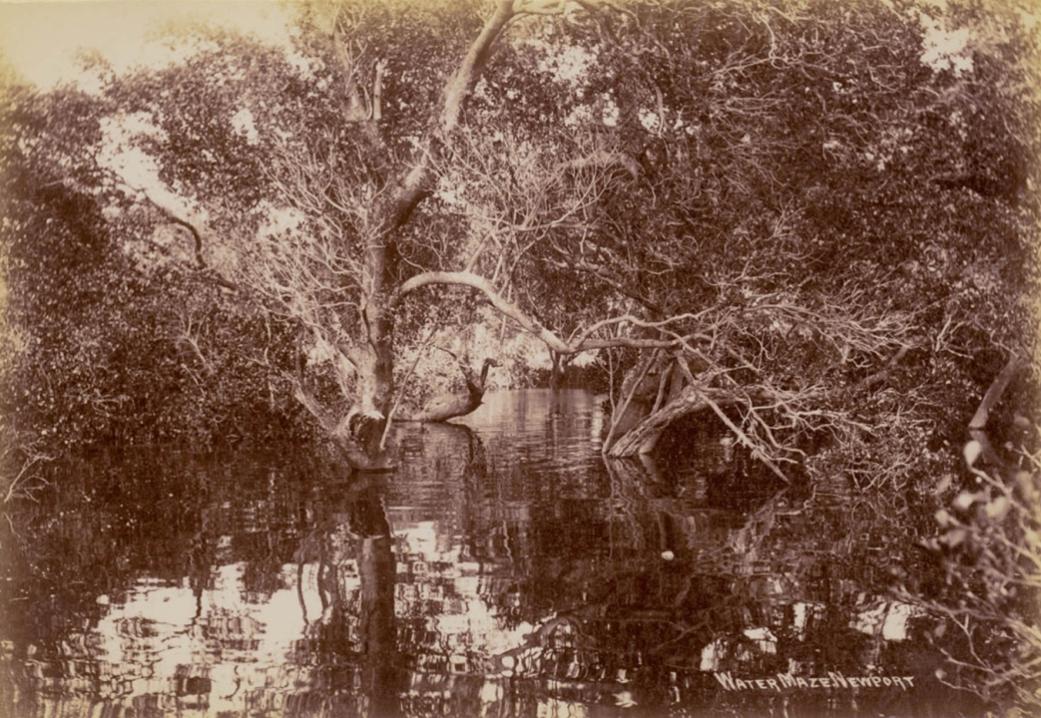
Where the road dips down it is nestled there,
With its headlands green as a mermaid's hair;
And the sun a-gleam on its sapphire sea
Where the spray leaps high and the waves break free.
Hear the wild gulls call from their rocky ledge,
Where the she-oaks sway to the water's edge;
And the air is cooled by the evening breeze
As the sun sinks low o'er the mangrove trees.
With its golden beach where the wet sands gleam
On the brink where the billows swirl and cream;
When the lilac shadows of twilight fall
I am winging there at a whip-bird's call!
Dorothea Dowling.
CHARM OF NEWPORT. (1935, March 14). The Sydney Morning Herald (NSW : 1842 - 1954), p. 11 Supplement: Women's Supplement. Retrieved from http://nla.gov.au/nla.news-article17171353

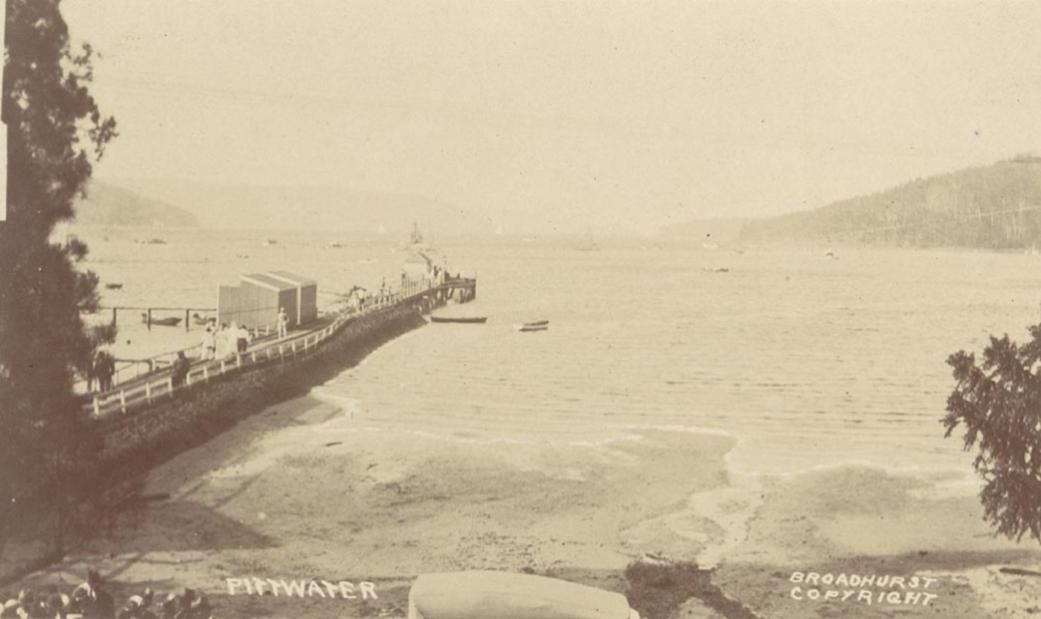
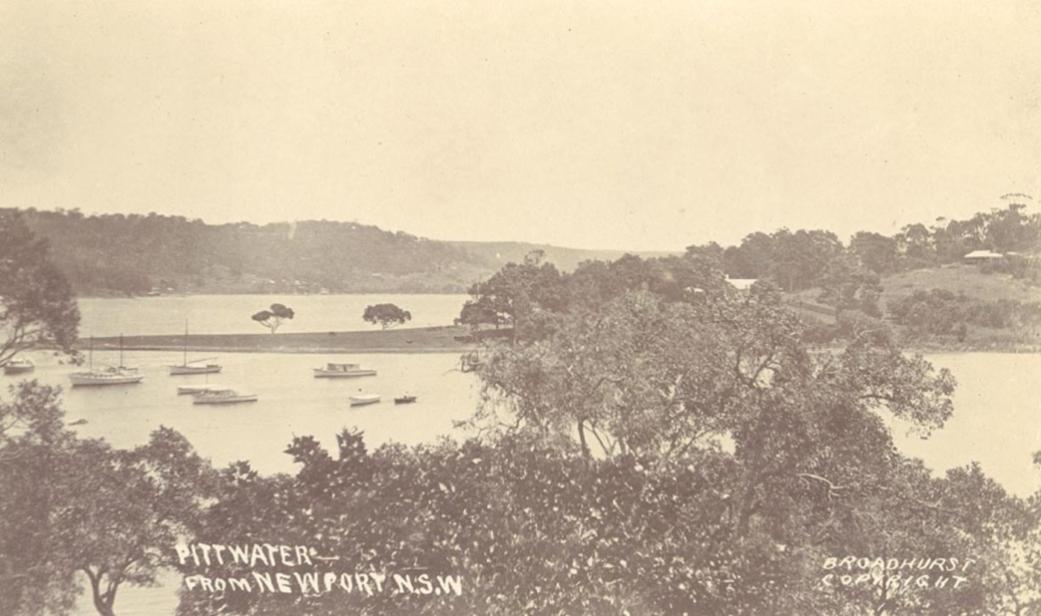
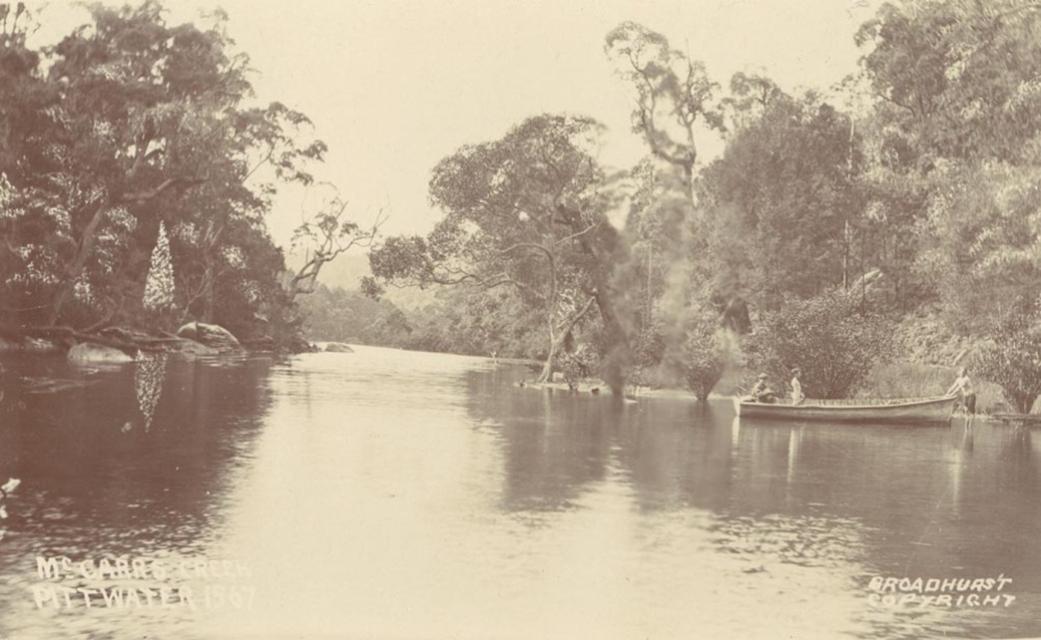
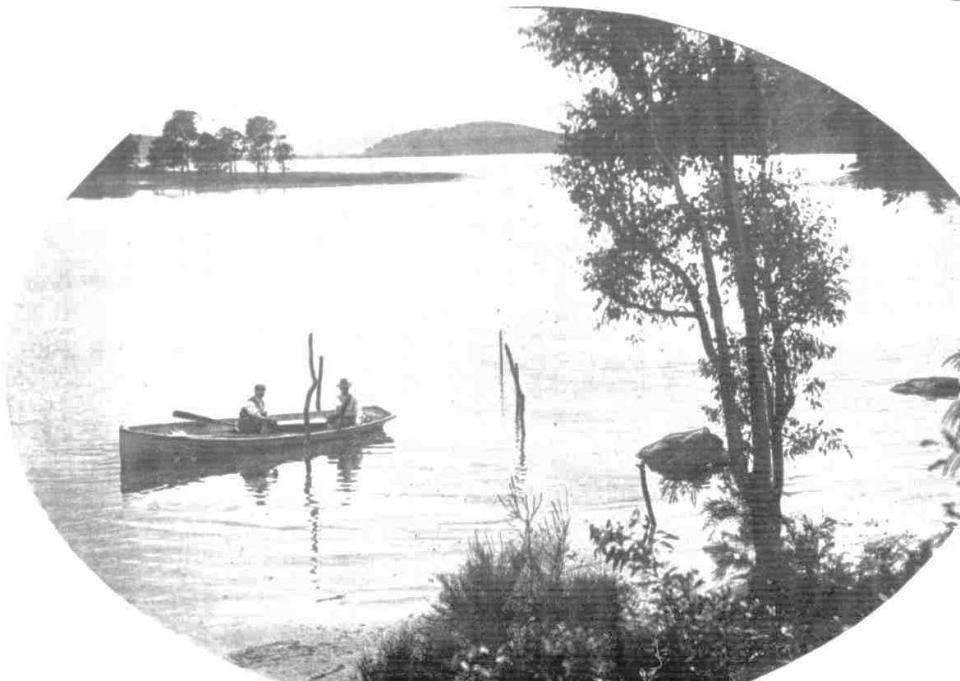
THE BASIN, BARRANJOEY. 1903 The Sydney Mail and New South Wales Advertiser
This shows how wide the entrance to The Basin was and why steamers may have been able to access the 'Inner Basin' or 'Blind Cove' as shown in the 1883 sketch above.
AN IDEAL CAMPING GROUND, HAWKESBURY RIVER.
A FAVOURITE HOLIDAY RESORT. (1903, December 30). The Sydney Mail and New South Wales Advertiser (NSW : 1871 - 1912), , p. 1706. Retrieved from http://nla.gov.au/nla.news-article164902107
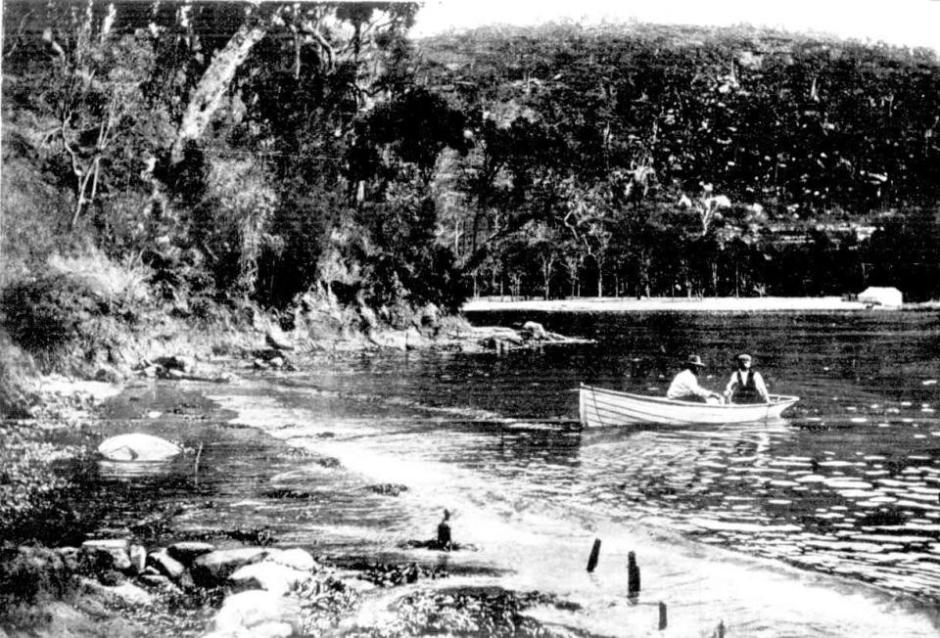
Above: "AN IDEAL CAMPING GROUND, HAWKESBURY RIVER. "1903 The Sydney Mail and New South Wales Advertiser article
Below: "GRILLED FISH FOR BREAKFAST." 1903 The Sydney Mail and New South Wales Advertiser article
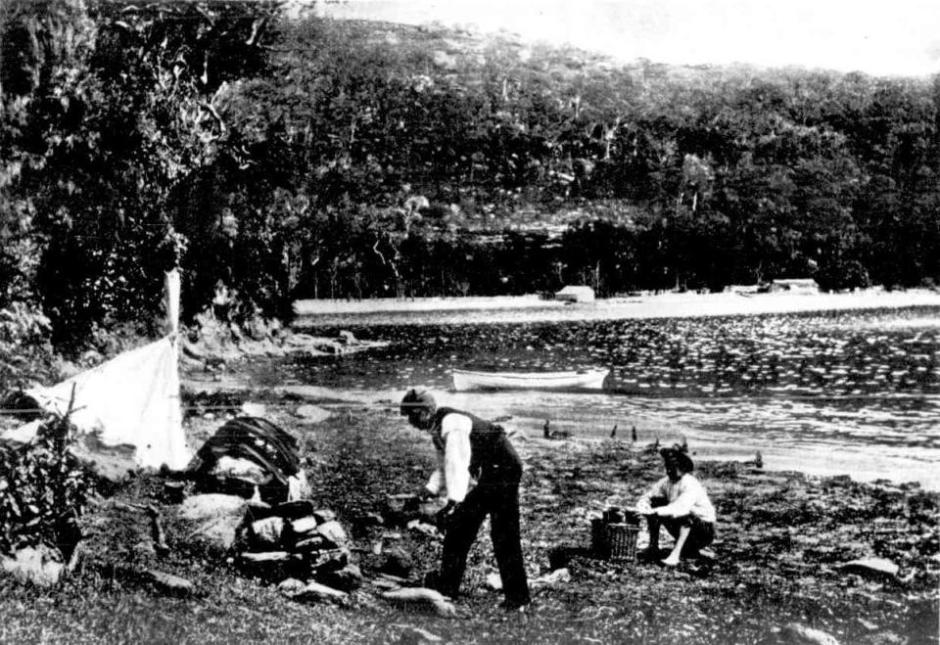
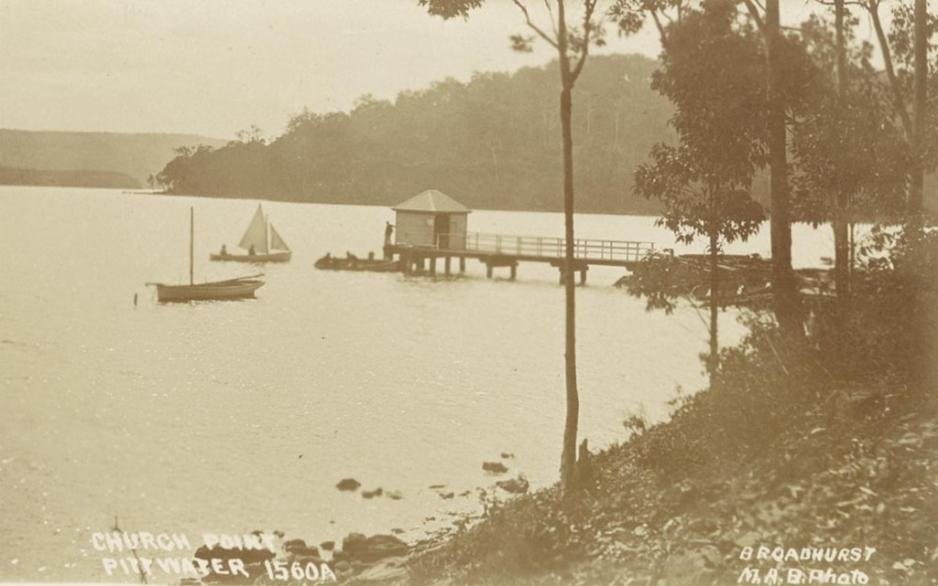
'Church Point, Pittwater'. Digital Order No. a106164 ca. 1900-1927, From Album - Scenes of Pittwater, N.S.W, Date of Work ca. 1900-1927 by Sydney & Ashfield : Broadhurst Post Card Publishers. Courtesy State Library of NSW
Bayview School Launch.
(See Illustration on this page.)
The Patonga is a motor launch, engaged, morning and evening, of every school day, to convoy children residing at Barranjoey, Careel Bay, and the adjoining district, to ;the Bayview (Central) School. - Pittwater, although one of the most beautiful, interesting, and picturesque bf Nature's gems, is by the very reason of its loveliness, n difficult place to provide with schools. Until quite recently the only way these children could get to either Bayview or Newport Public Schools, was by rowing boat, the distance in some cases being nearly eight miles. It will be seen that only in very fine weather was it possible to attend school, and the result, unfortunately, was that the people, by the peculiarity of their location, were practically debarred tho advantage of our Public Instruction Act.
Numerous requests were made to have more convenient school accommodation for these children (29 in number), but there was this difficulty -That to give all these families anything like equal opportunities, would have necessitated two or three small schools. Early in the present year, the Hon John Perry, then Minister for Education, Instructed Mr. Senior Inspector Lobban to take the matter in hand, and ascertain the best way in which the request could be treated. After exhaustive inquiries had been made by that able, officer; assisted by Mr. S. Morrison, teacher at Bayview Public School, it was proposed to gather together all the children, and take them by launch to Bayview Public School. This idea commended itself to Mr. Perry, and arrangements were made with Mr. William Sykes,- the owner of the Patonga, to give the scheme a fair trial. Tho service was inaugurated in' April, and has been running nearly four months.. As this was one of tho last administrative acts of Mr. Perry, he may feel proud of the result, which is described in departmental reports as "an unqualified success.". This launch is the first and only school launch in Australia. The boat is a distinct departure from the style usually adopted for motor launches. She is 30ft long and 8ft beam, the motive power being supplied by a 5 h.p. Hercules engine. She was built specially strong to withstand the rough sea sometimes experienced in tho bay, and it ls a source of gratification to the department that all through :the recent heavy weather the timetable has been carried out. She is' in charge of her owner, and presents an interesting appearance as she comes each morning, with 20 to 30 children, to Church Point Wharf.
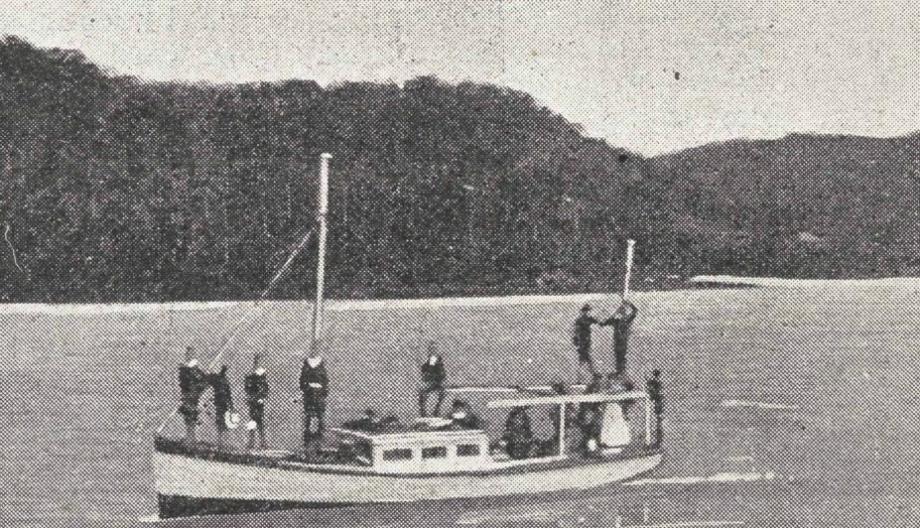
The Bayview (Pittwater) Public School Launch. Bayview School Launch. (1904, August 3).Australian Town and Country Journal (Sydney, NSW : 1870 - 1907), , p. 37. Retrieved from http://nla.gov.au/nla.news-article71512651
Images is from a Newspaper cutting held by the State Library of Western Australia:
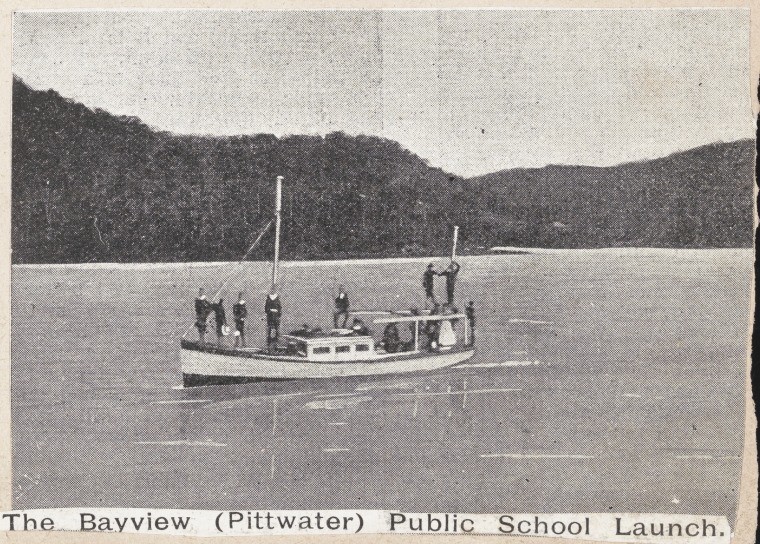
'This image is part of a collection of 69 albums of pictures, postcards, and newspaper cuttings donated to the State Library of Western Australia in July 1961 by the family of the late Mr Miller. Jack Edward Miller was employed as a boatman and cook by the Harbour and Lights Department in February 1902 and spent some time at Breaksea Island lighthouse near Albany.' Call Number U15g.
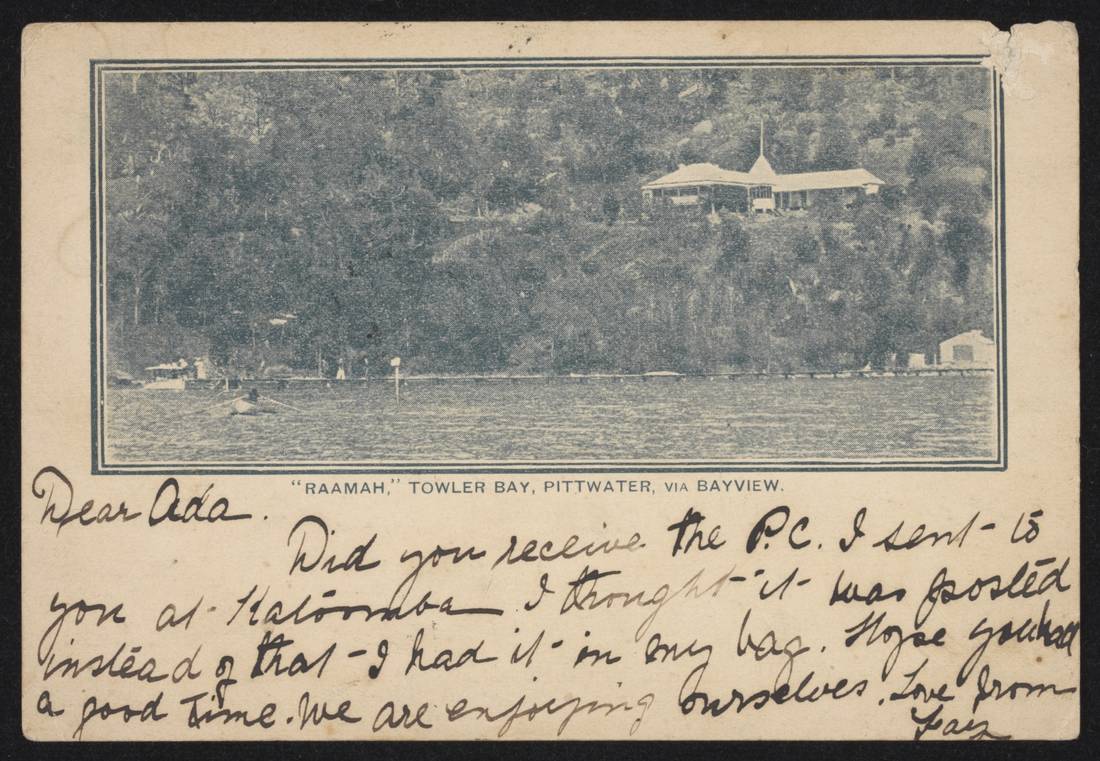
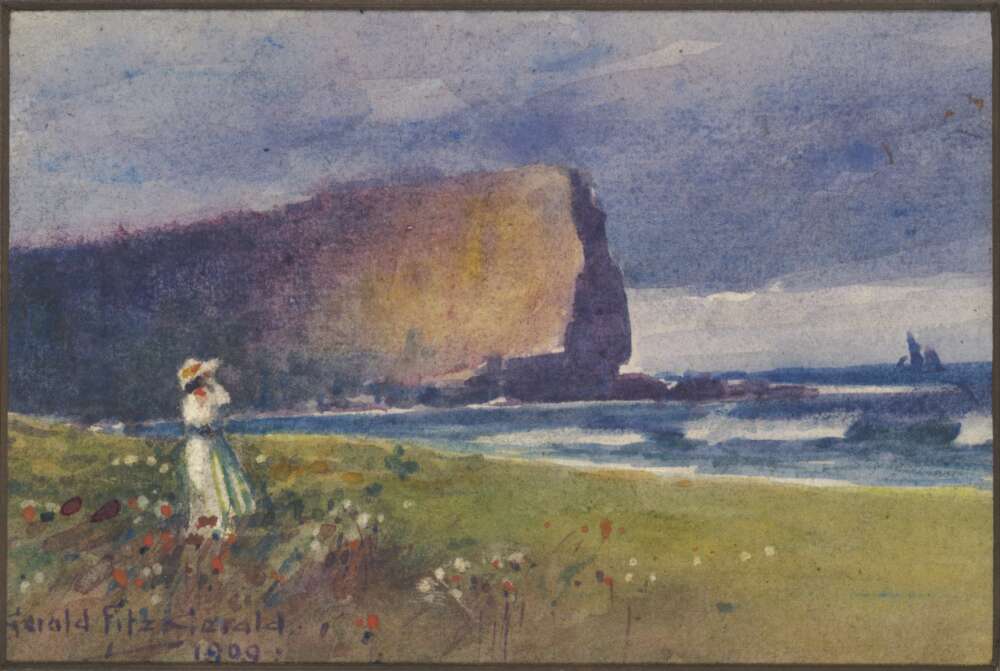

ST. MICHAEL'S ARCH.
This beautiful Arch is situated on the estate of the late Very Reverend J. J. Therry, about three miles south of Broken Bay. As the scenery along. the coast from Manly Beach to the Bay is of the loveliest description, we advise all lovers of the picturesque to hire a spring cart from Mr. Miles - who lives about half a mile from the Pier Hotel - and proceed, early in the morning, to Mr. Collins' house, about thirteen miles distance, so as to be able to inspect this extraordinary specimen of natural architecture, and to return to Manly the same day if necessary.
As this excursion may gradually become fashionable, we quote a description of the places on the road from the late Postmaster- General Raymond's valuable work, the "Post Office Directory for 1855."
"Seven and a half miles from North Harbour, - Jenkins' house; the road for the last mile along a level sandy beach. On the left is Narabeen lagoon. Mr. Jenkins has a snug house here, and much land in cultivation, which is an agreeable prospect from the sea. Eleven and a half miles from North Harbour -Hut on the sea shore. The path from the Pennant Hills Road reaches the sea, and joins this coast road at the farm of one Foley - a tenant of. Mr. Wentworth's; the distance from thence being twelve miles. About half a mile further on is the south-east arm of Pitt Water, on which there are some small cultivated farms. The head of Pitt Water as seen from the heights along which the road or path leads, is equal to any lake scenery, and there are many romantic spots, with good land, on its banks, which might be converted into good farms. Thirteen miles from North Harbour - Several farms and cottages. Fourteen miles- The Rev. Mr. Therry has a grant here. Fourteen and three-quarter miles - The Hole-in-the-Wall, being a rocky projection forming a rude archway with the shore."
The arch mentioned by Mr. Raymond is about twenty-two feet across the inside, and between thirty and forty feet high underneath. The rocks, of which it forms a part, are seventy feet in height - the colours of these rocks are exceedingly beautiful. At low water the visitor can pass through the arch.
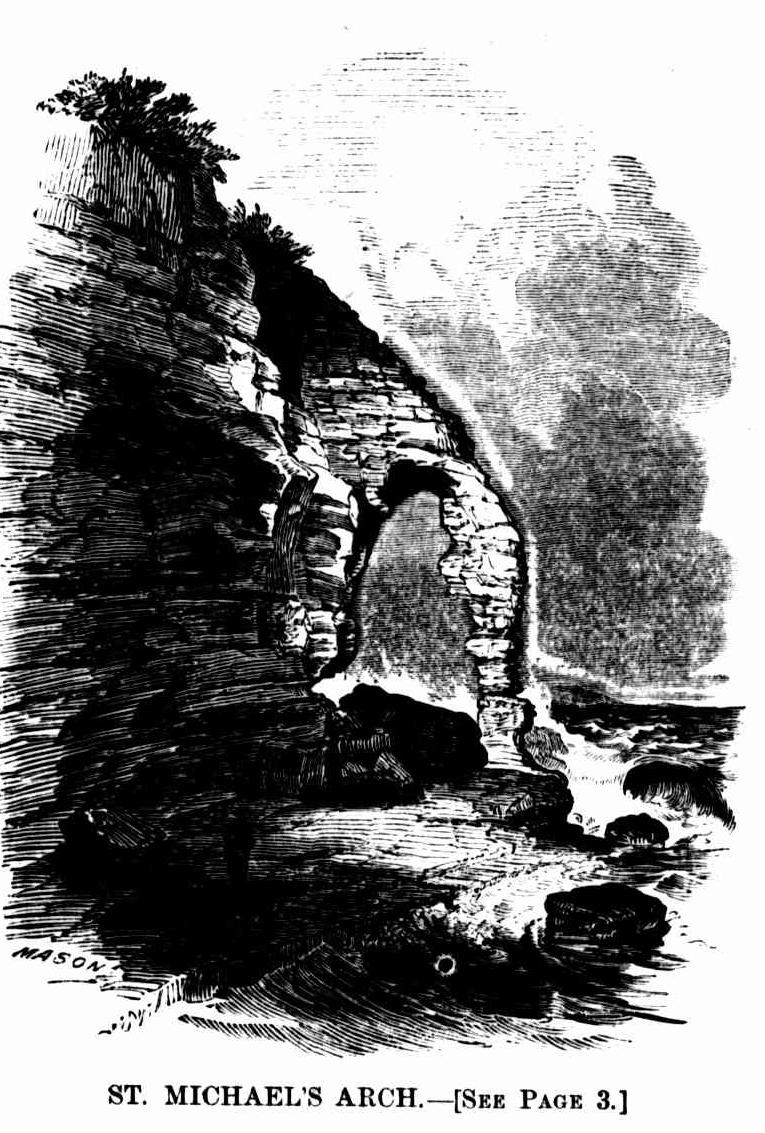
Ascending the cliffs, a view of Pitt Water is beheld, being the harbour belonging to this estate. If an arrangement were madeto have a small steamer plying along the beautifully wooded, lofty, and precipitous shores of the Hawkesbury River, parties of travellers could meet it at this spot, avoiding the disagreeable sea voyage by coming from Manly by land. The steamer could convey them from Mr. Collins' house to Windsor, and the trainwould take them back to Sydney - it being understood that the Windsor railway will shortly be completed.
Illustration: ST. MICHAEL'S ARCH.
ST. MICHAEL'S ARCH. (1864, October 15). Illustrated Sydney News (NSW : 1853 - 1872), p. 3. Retrieved from http://nla.gov.au/nla.news-article63512130
St. Michael's Arch 1867 - The storm that turned an arch into a pedestal:
BROKEN BAY. [From the Herald's Correspondents.]
June 24. — We have had tremendous weather, but, as far as Pitt Water is concerned, no damage has been done, with the exception to one of our picturesque curiosities, St. Michael's Arch. It has at length yielded to the too mighty elements and the destroying influence of time,— that which, was the admiration of all who have beheld it is now almost a baseless fabric,— there is only about one half of the outer support left, looking at it at a distance it has the resemblance of a colossal pillar. In its fall it carried a large portion of the overhanging rock with it, a thousand tons of gigantic boulders, and in such masses that I think it will stop the ingress from that part to the cave, but as yet we have had no close inspection, for the rollers are dashing to the height of the stupendous rocks. The only idea I can give of the gale is, that the froth of (not spray) the sea came over Mount St. Joseph, opposite the house, half a foot in size, and spread itself down to the dam, at times shading the heights of the mountain, — its resemblance was that of an overwhelming snow storm. The sea at Barranjoey washed away the flower garden in front of the Chinamen's huts, taking soil and all, so that the beach comes close up to their door. There must have been awful havoc in the Hawkesbury, for all the beaches from Barrenjoey to the Long Reach are strewed with fragments of houses, boxes, chairs, doorframes, dead pigs, hay, wheat, broken bedsteads, weatherboard sides of houses, oranges with large branches, pumpkins, melons, corn cobs, and other debris, that scarcely any portion of the beaches can be seen. Mr. Conolly picked up a workbox, in which was contained a number of receipts and letters directed to Mr. Moss, Windsor. The beaches on which are the debris is Barrenjoey, Whale Beach, Collins's Beach, Mick's Hollow Beach, Farrell's Beach, Mona Beach, and Long Reach, so it may be imagined the great extent of destruction. BROKEN BAY. (1867, June 29). Sydney Mail (NSW : 1860 - 1871), p. 11. Retrieved from http://nla.gov.au/nla.news-article166799304
Many resident historians are fairly certain that the above was written by then resident in this region John Collins, or his brother Frank, who worked occasionally at the Broken Bay Customs Station, Barrenjoey headland during these years. Mr. Conolly, who is also mentioned, became a relative by marrying one of the Collin's daughters.
The stone itself was composed of soft sandstone, which doesn't do too well under a constant onslaught of sea and wind. Today there is very little left of any of this stone, you would need to compare the pictures to see what remnant remains.
St. Michael’s Arch was one of those landmarks that may have been used by all the many coastal boats that used to carry produce from Pittwater and the Hawkesbury when using this way to transport crops and fish from what was essentially a rural area was much easier then trying to use tracks prior to the building of roads.
Geoff Searl of the Avalon Beach Historical Society tells us this arch had other names too - ‘Hole in the Wall’ (which it was in reality until 1867 when it lost the top of the arch). It was then called the ‘Pedestal’, the 'Stone Lady', ‘Lot’s Wife’ and the foreign legion soldier (before it lost the very top of the stone column) until around 1962 (our last reliably dated photo of the column). Geoff remembers the geological term of ’sea arch’ being used originally.
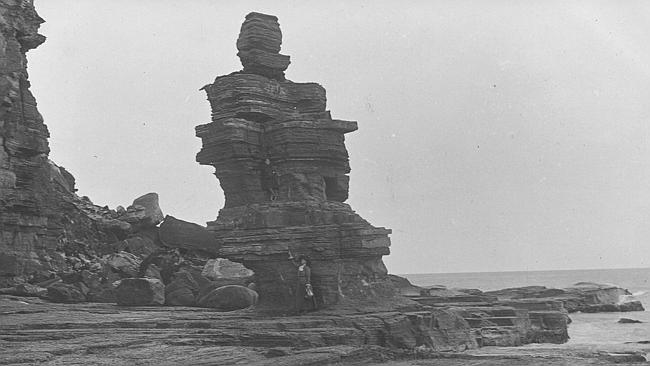
circa 1900 when 'the Pedestal'
These images from a 1922 sales brouchure show not only the change to 'The Pedestal' but also changes in the silhouette of North Avalon Beach headland itself: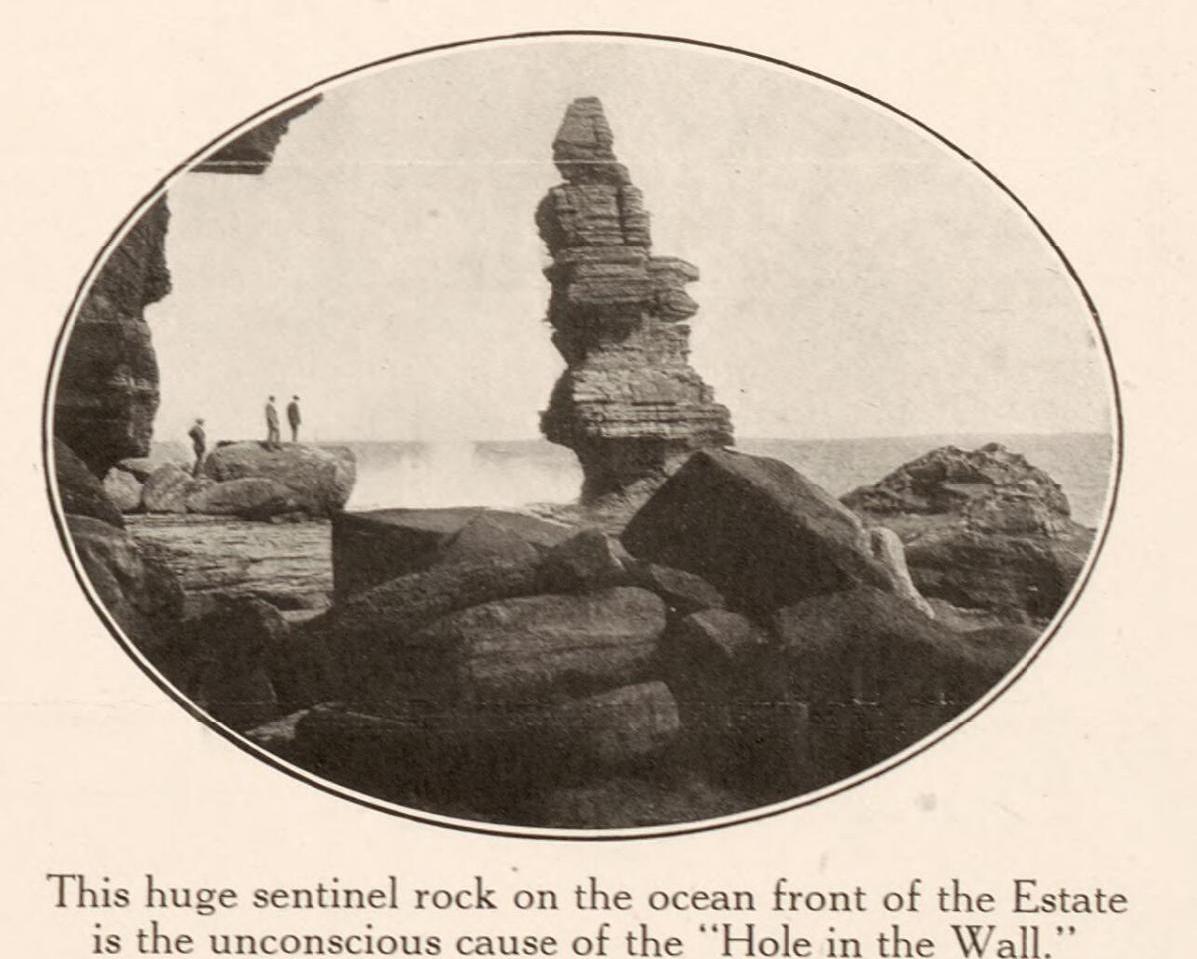
From 1922: from Stanton & Son. Careel Ocean Beach estate [cartographic material] : "The hole in the wall", 2nd subdivision, 1922. MAP Folder 37, LFSP 499. Part 1. and Stanton & Son. Careel Ocean Beach estate [cartographic material] : "The hole in the wall", 2nd subdivision 1922. MAP Folder 37, LFSP 499. Part 2., courtesy National Library of Australia.
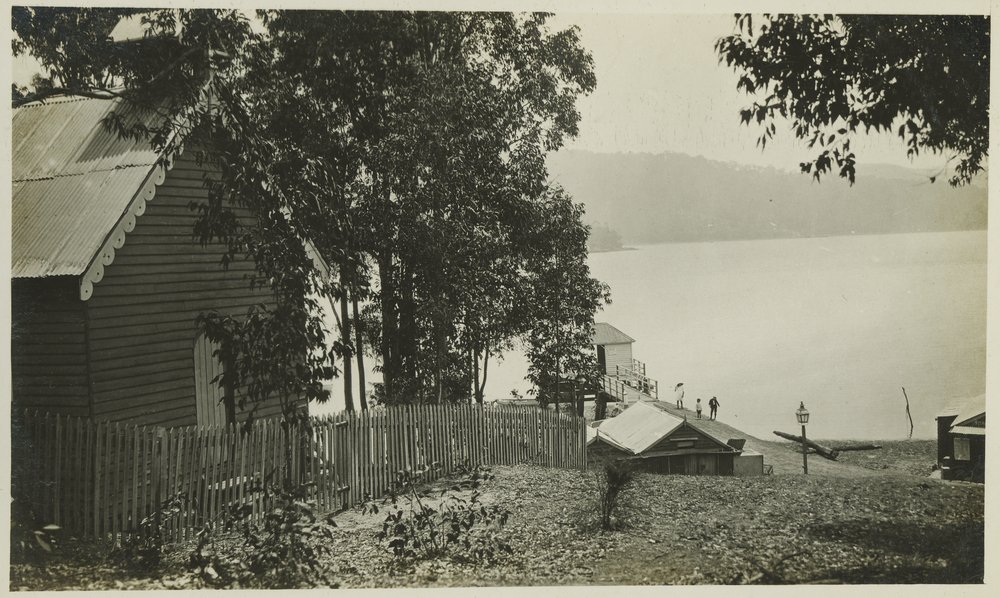
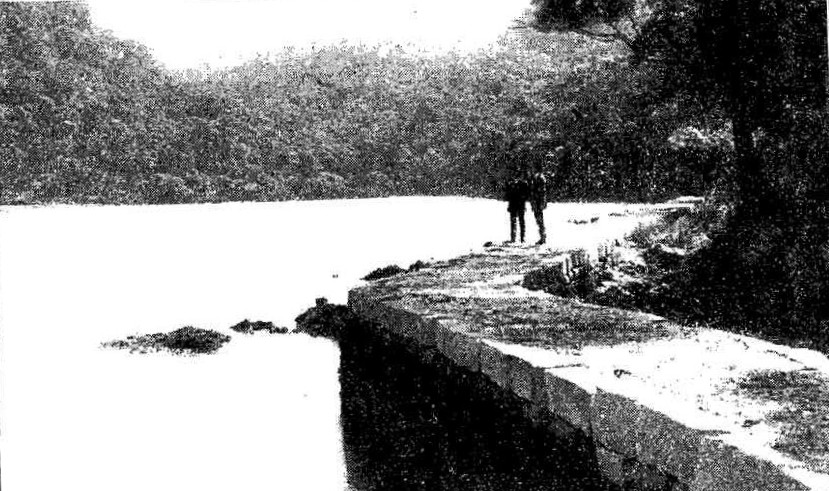
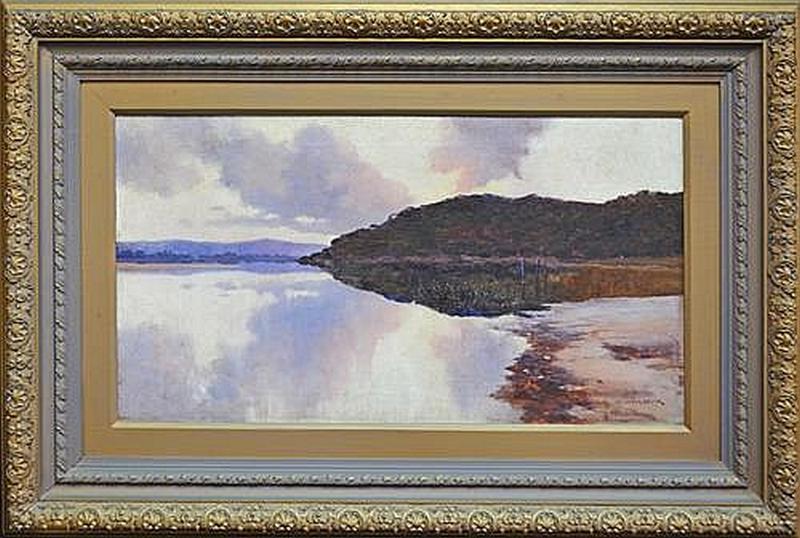
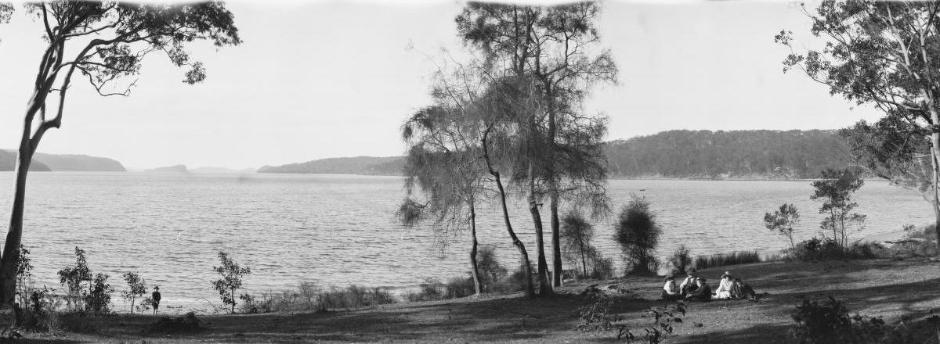
'Panorama of Taylors Point' - 2, Pittwater, New South Wales circa 1917-1921, courtesy National Library of Australia, Image No.: nla.pic-vn6149430 - Part of Enemark collection of panoramic photographs [picture] [1917-1946] . Below: Sections from above panorama
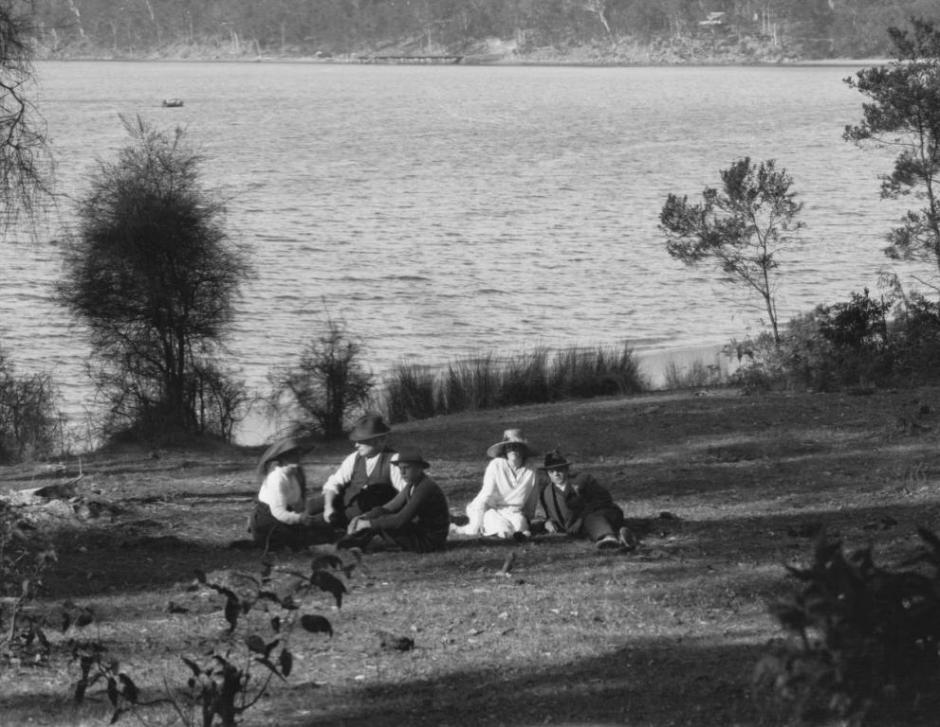
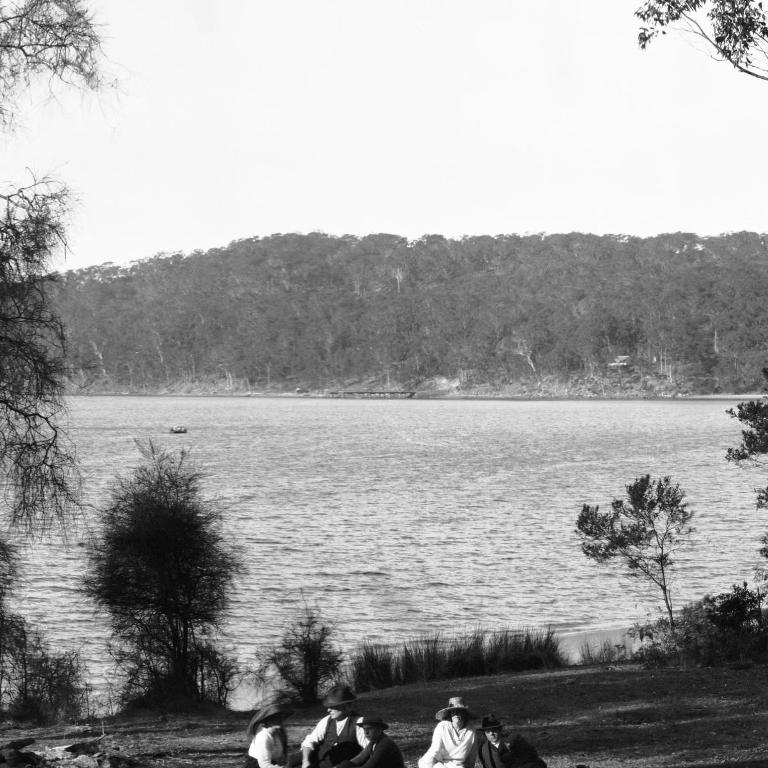
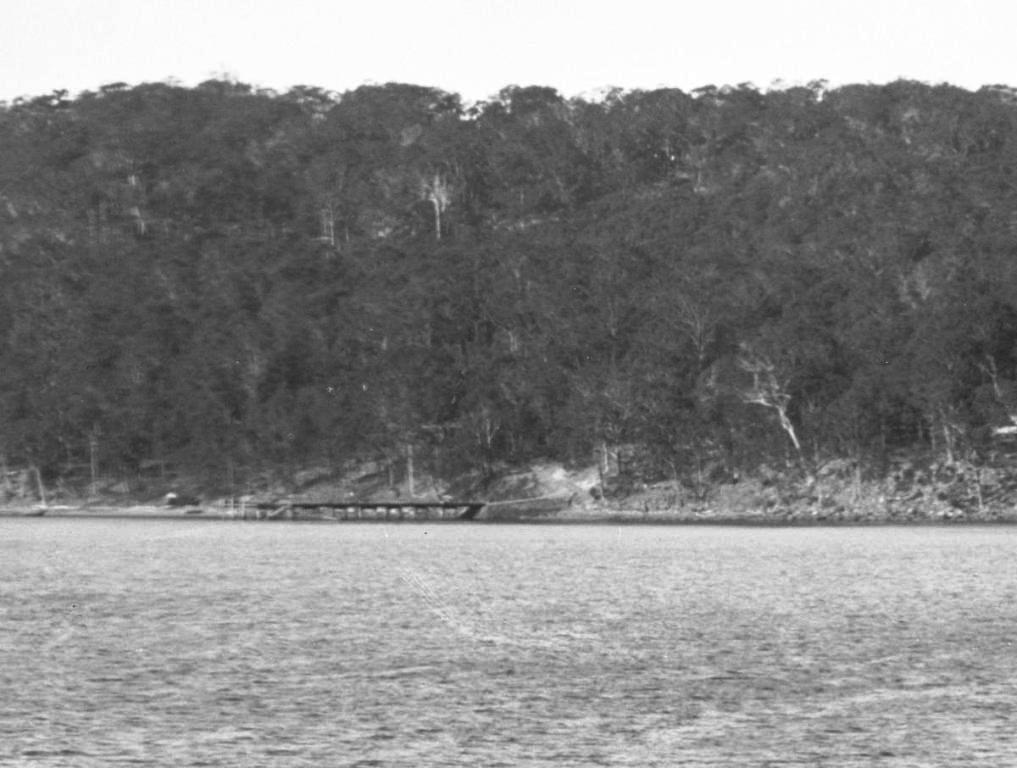

'Panorama of Taylors Point with real estate sign advertising upcoming land subdivision', Pittwater, New South Wales, Circa 1917-1920, courtesy National Library of Australia., Image No.: nla.pic-vn6149436 - Part of Enemark collection of panoramic photographs [picture] [1917-1946]
Below: zoomed in sections from above panorama - which show the beach area to an old boatshed and jetty and the SS Erringhi coming up the Pittwater Estuary. You can explore many of these Enemark Panoramas in the National Library of Australia's Online collection - these all have a 'zoom' in feature where you can see the small details of Pittwater - our research indicates they were photographed between 1917 and 1921 - as the Clareville and Taylors Point wharf and jetty were built or replaced during this period - simply go to the NLA website and enter into the Search box 'Pittwater' and choose 'picture' under add limits dropdown box - click on the Panos that pop up and you will see a 'zoom' function - enter 1200x1200 and have an explore - wonderful stuff - visit here
This 'Taylors Point' sale sign is from 1921:
CALL FOR CONCESSION MOTOR AND LAUNCH TICKETS FOR THE SALE AT TAYLORS POINT. THE GEM OF PITTWATER
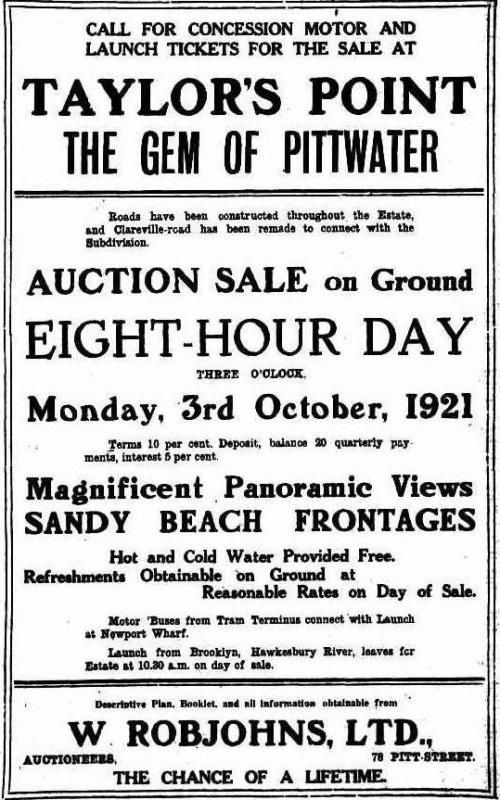
Roads have been constructed throughout the Estate, and Clareville-road has been remade to connect with the Subdivision. AUCTION SALE on Ground EIGHT-HOUR DAY THREE O'CLOCK, Monday, 3rd October, 1921. Terms 10 per cent. Deposit, balance 20 quarterly payments, interest 5 per cent. Magnificent Panoramic Views SANDY BEACH FRONTAGES. Hot and Cold Water Provided Free. Refreshments Obtainable on Ground at Reasonable Rates on Day of Sale. Motor 'Buses from Tram Terminus connect "with Launch at Newport Wharf. Launch from Brooklyn, Hawkesbury River, leaves for Estate at 10.30 a.m. on day of sale. Descriptive Plan. Booklet, and all information obtainable from W ROBJOHNS, LTD., AUCTIONEERS, 78 PITT-STREET. THE CHANCE OF A LIFETIME. Advertising. (1921, September 24). The Sydney Morning Herald (NSW : 1842 - 1954), p. 11. Retrieved fromhttp://nla.gov.au/nla.news-article15989853
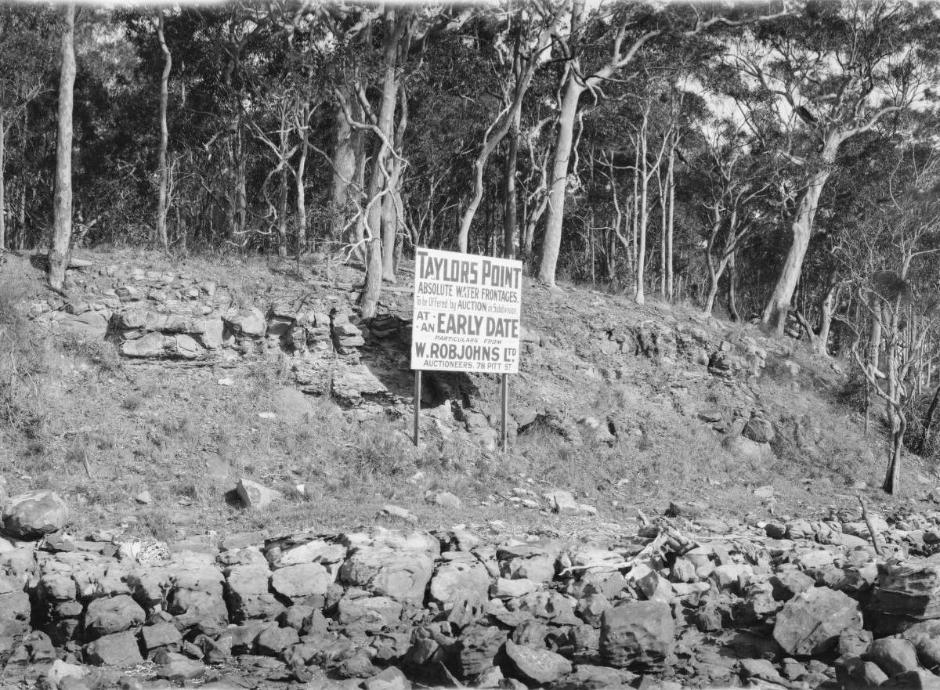
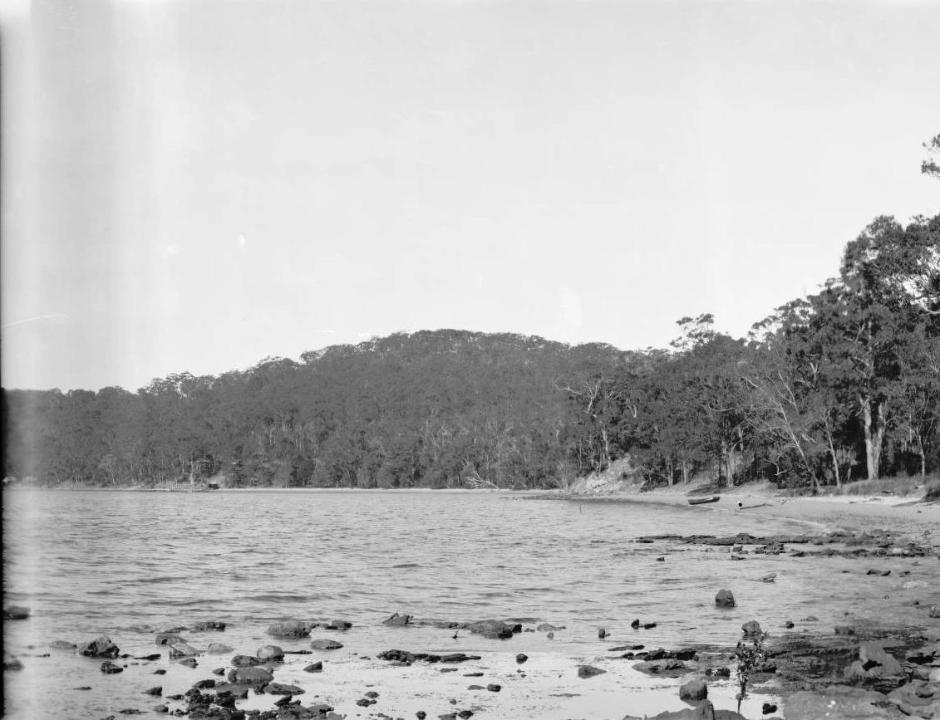
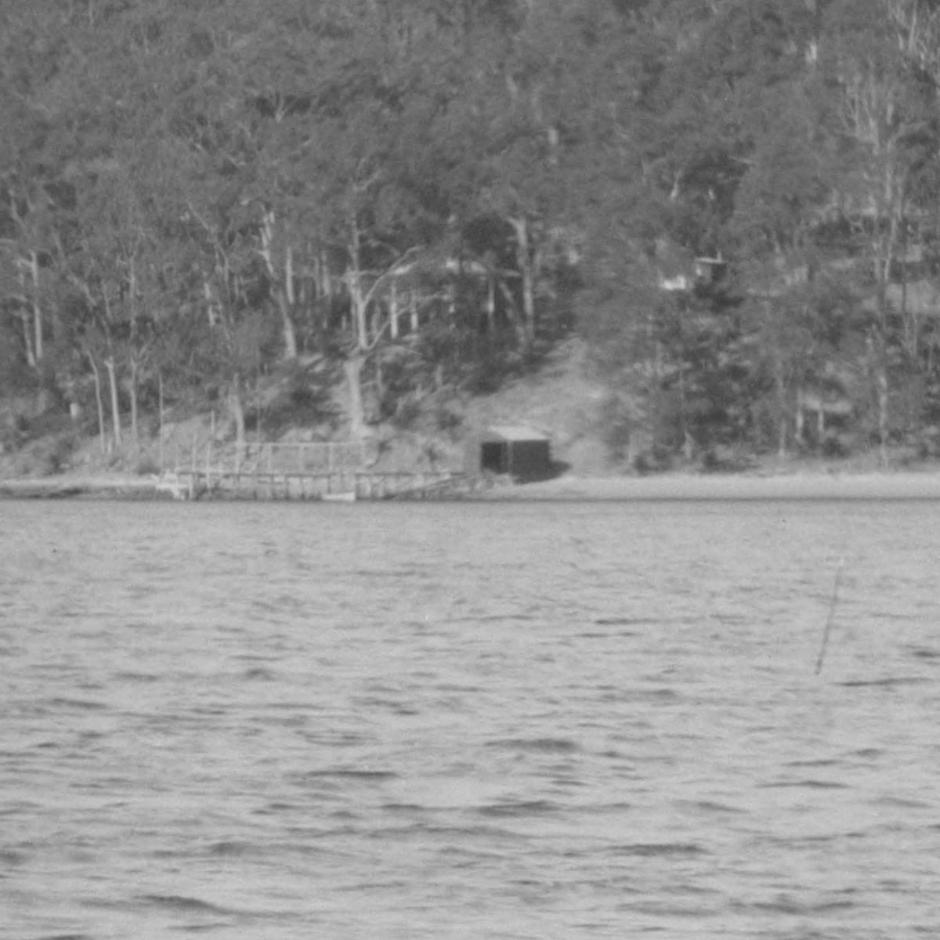
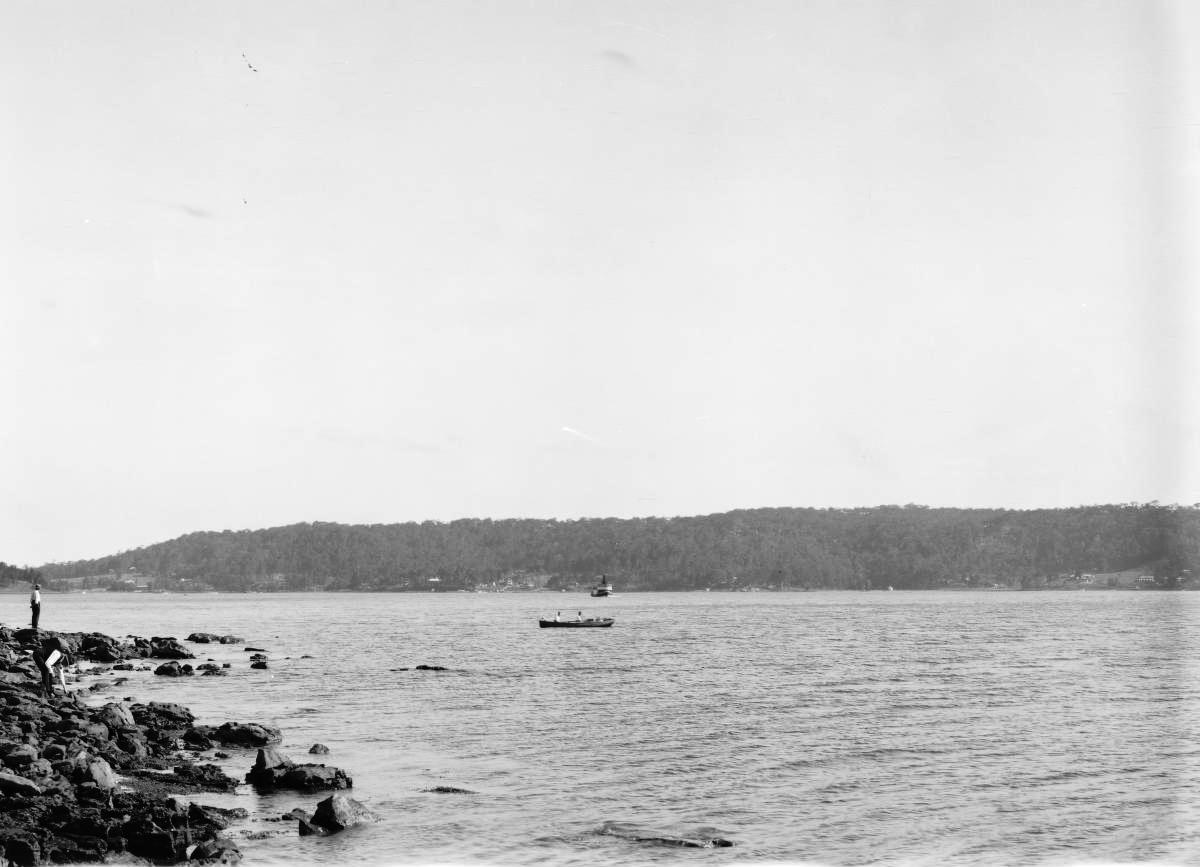
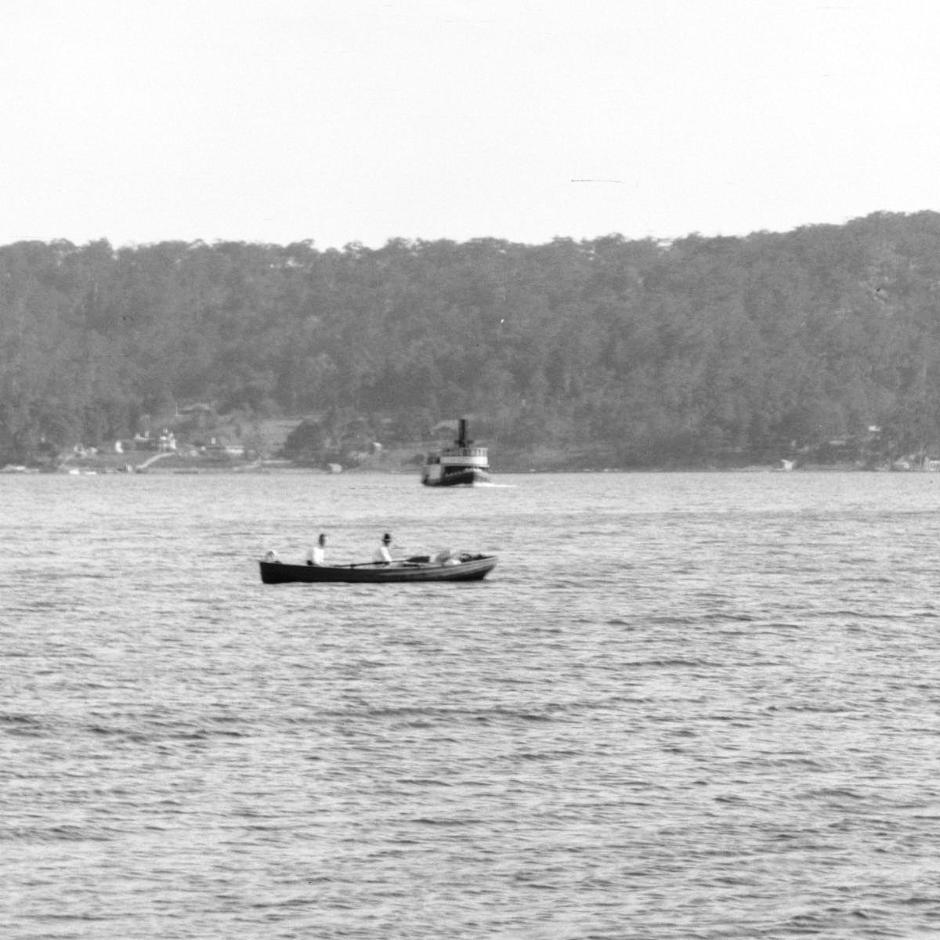
Panorama of Careel Bay and the jetty, Pittwater, New South Wales
EB Studios (Sydney, N.S.W.) Image: nla.pic-vn6154594, courtesy National Library of Australia.
This is all the same picture - we have simple blown portions of it bigger to show details.

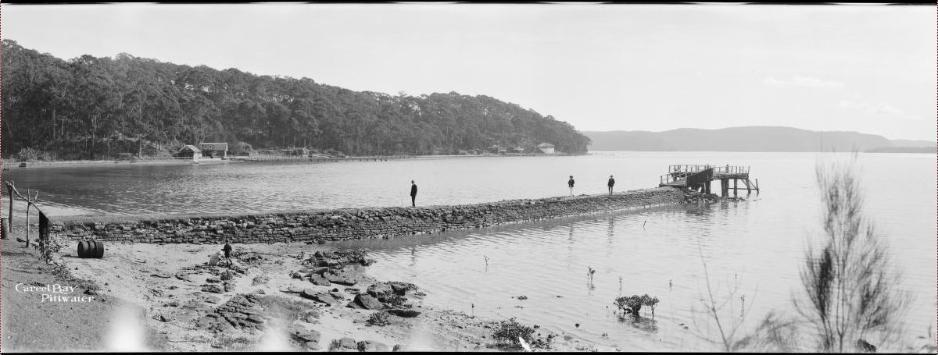
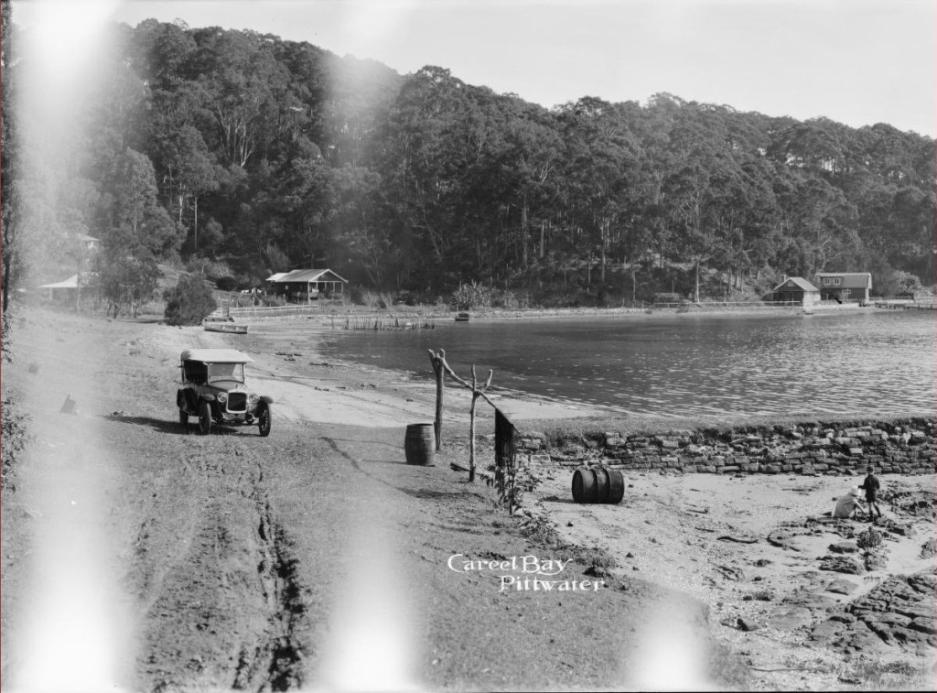
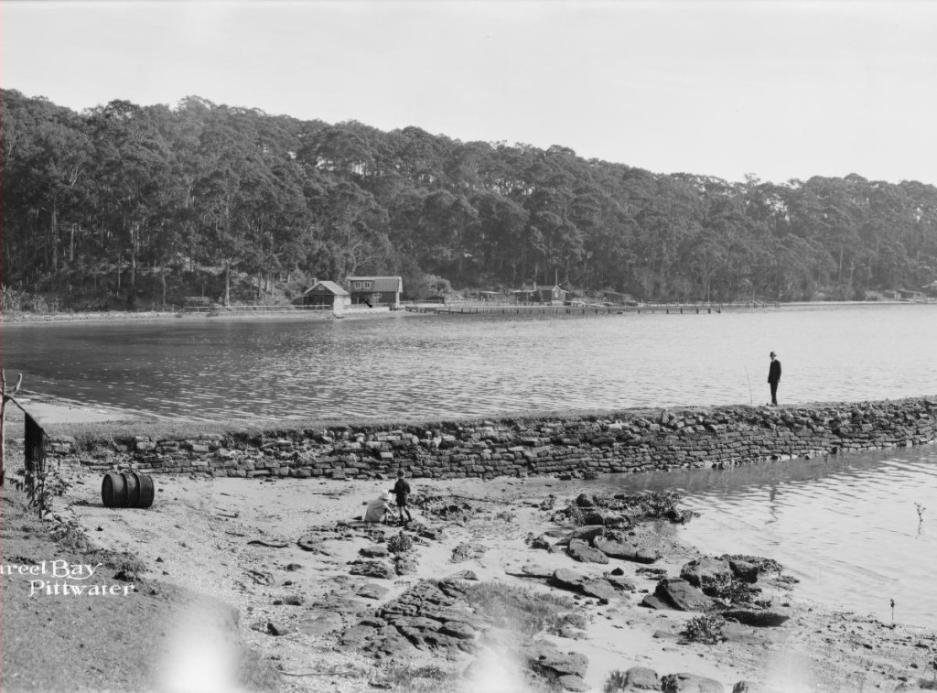
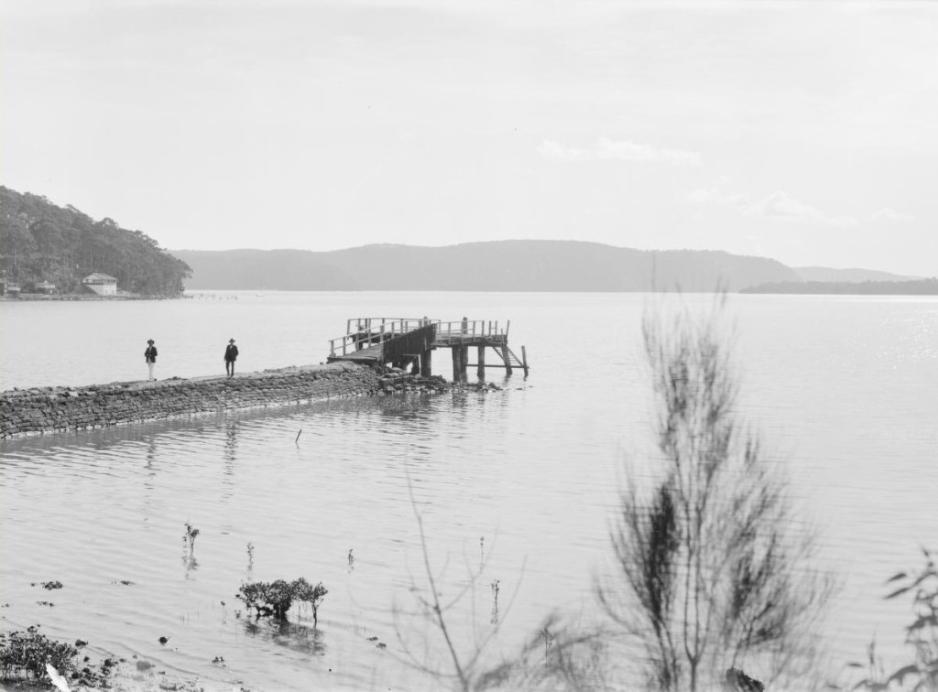
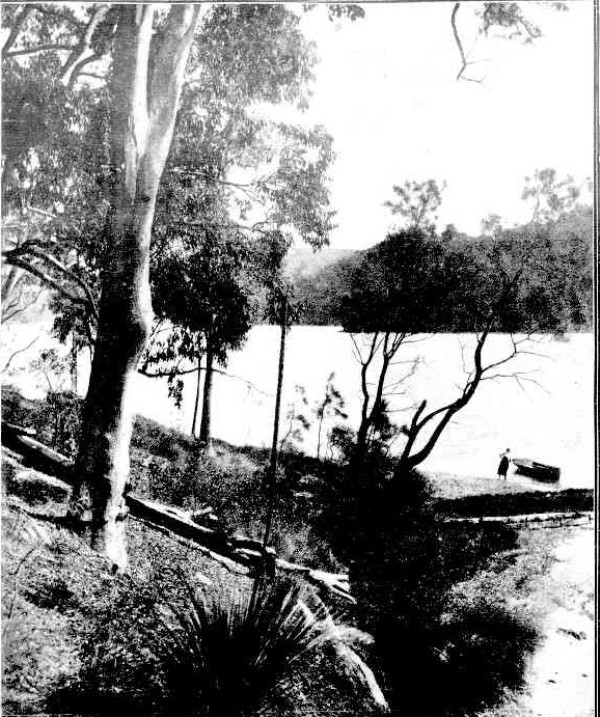
ON SCOTLAND ISLAND, PITTWATER.
This picturesque spot is one of the few privately owned islands in Australia. It lies just off Church Point, at the mouth of McCarr's Creek, Pittwater, an arm of Broken Bay. Not so many years ago the region was practically unknown even to the people of Sydney. Gradually, however, the popularity of the seaside resorts has accounted for the creeping out of weekend cottages and permanent habitations from Manly to Barrenjoey and around the foreshores of Broken Bay and the various inlets near the mouth of the Hawkesbury River. Even Scotland Island itself is now becoming a week-end resort. ON SCOTLAND ISLAND, PITTWATER. (1920, April 21). Sydney Mail (NSW : 1912 - 1938), p. 5. Retrieved from http://nla.gov.au/nla.news-article159028427
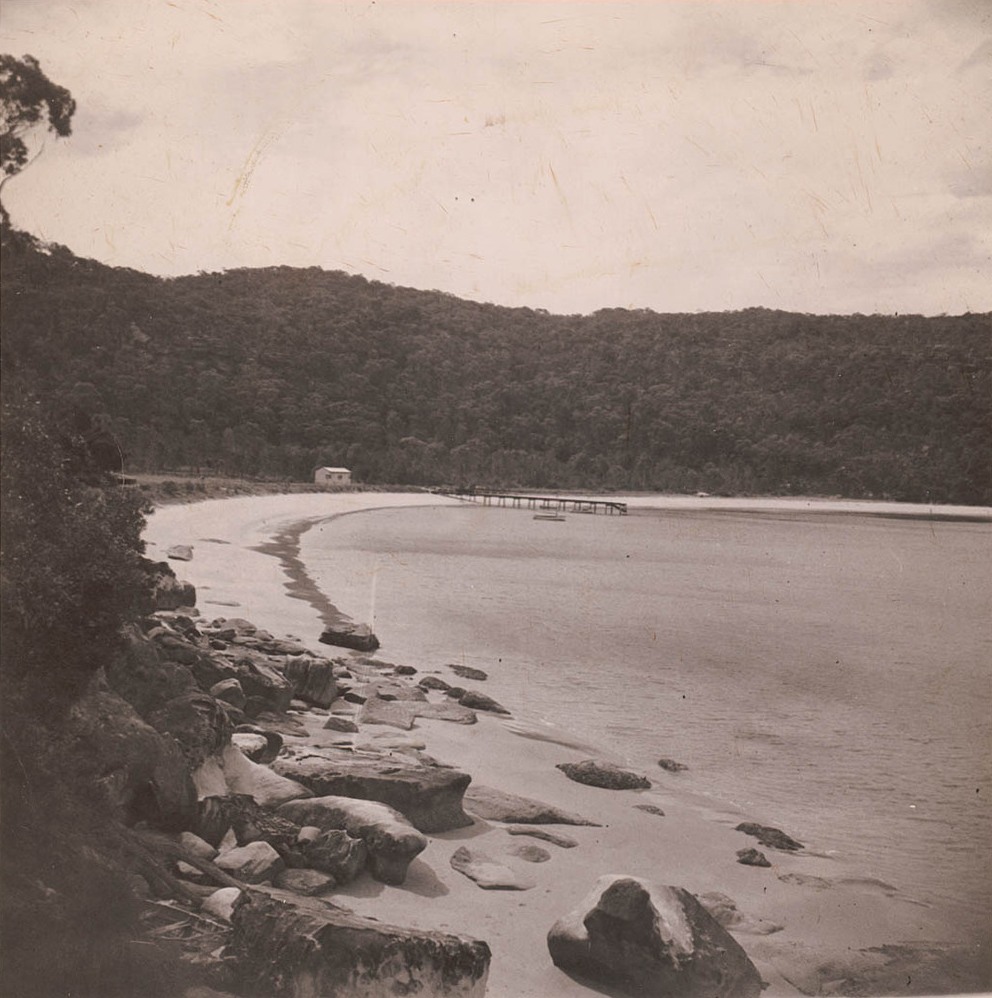
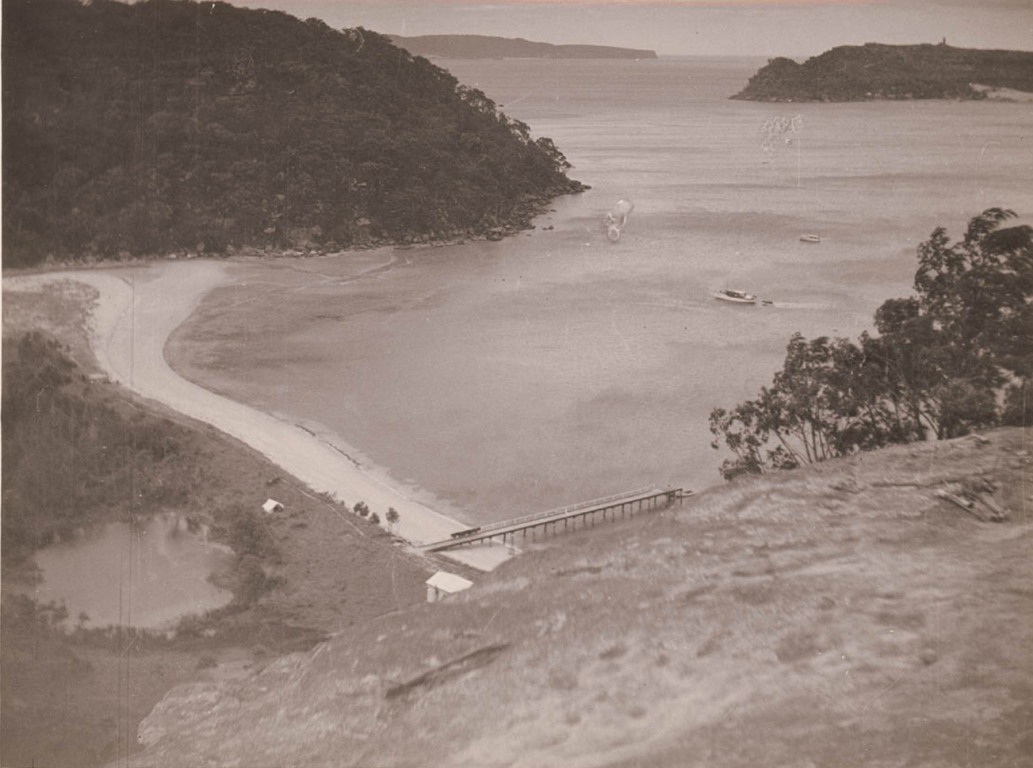
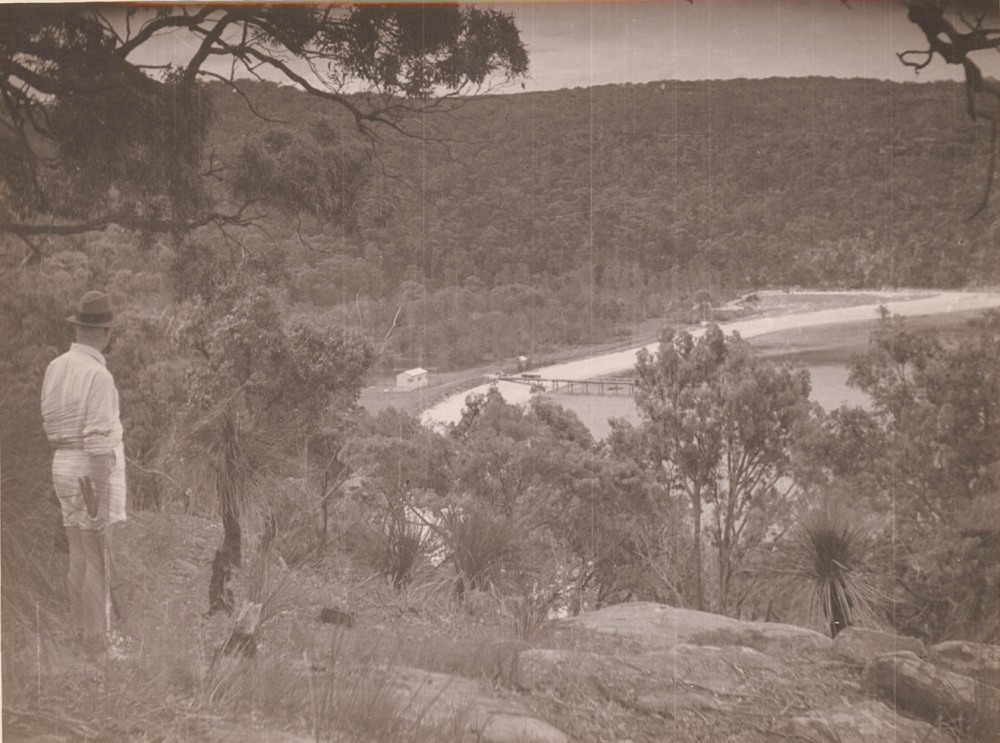
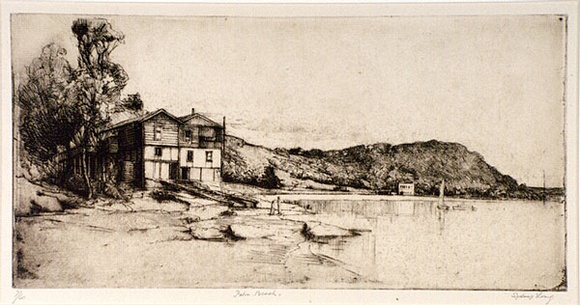
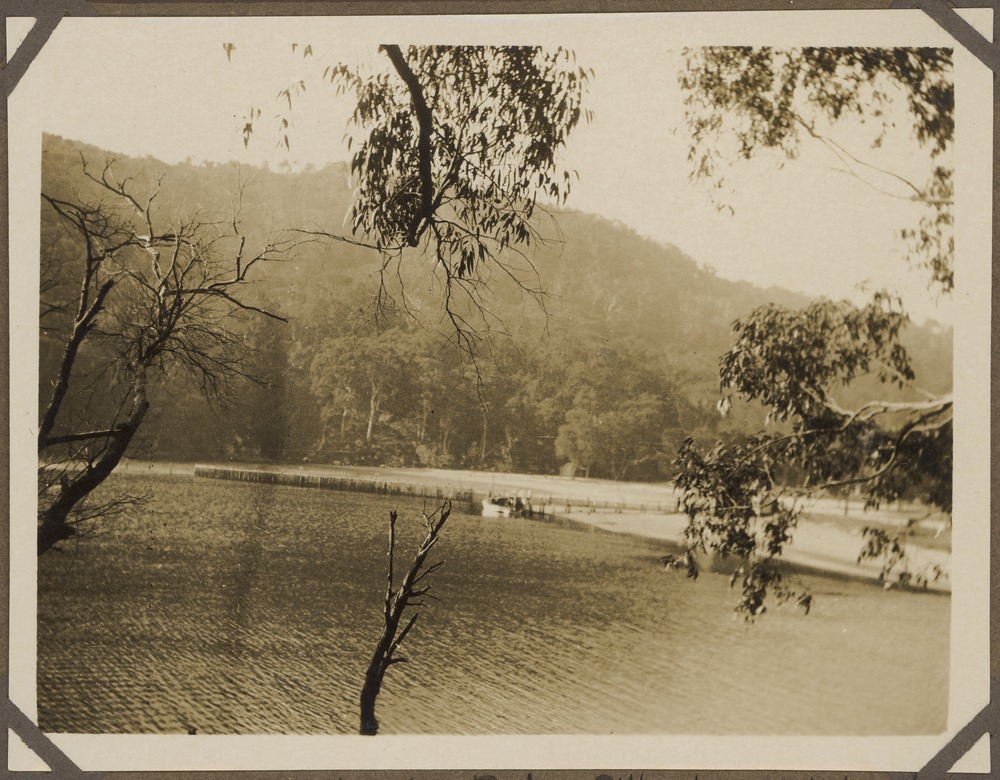
Gladys E. Moss, 1900-1950, was a Sydney Mail photographer during the 1920's - we have shared some of her images in another page In Surf Life Saving Carnival Season: A Glance at Surf Carnivals in February 1909, 1919, 1925, a Fancy Dress Rise of Venus and Saving Lives with Surfboards
She attended Sydney University;
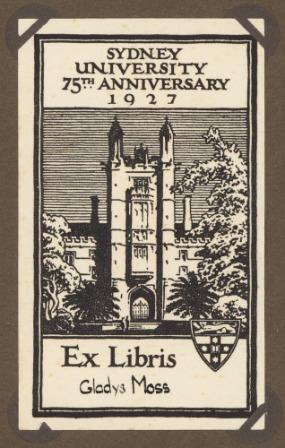
ART EXHIBITION. MR. PERCY LINDSAY'S PICTURES.
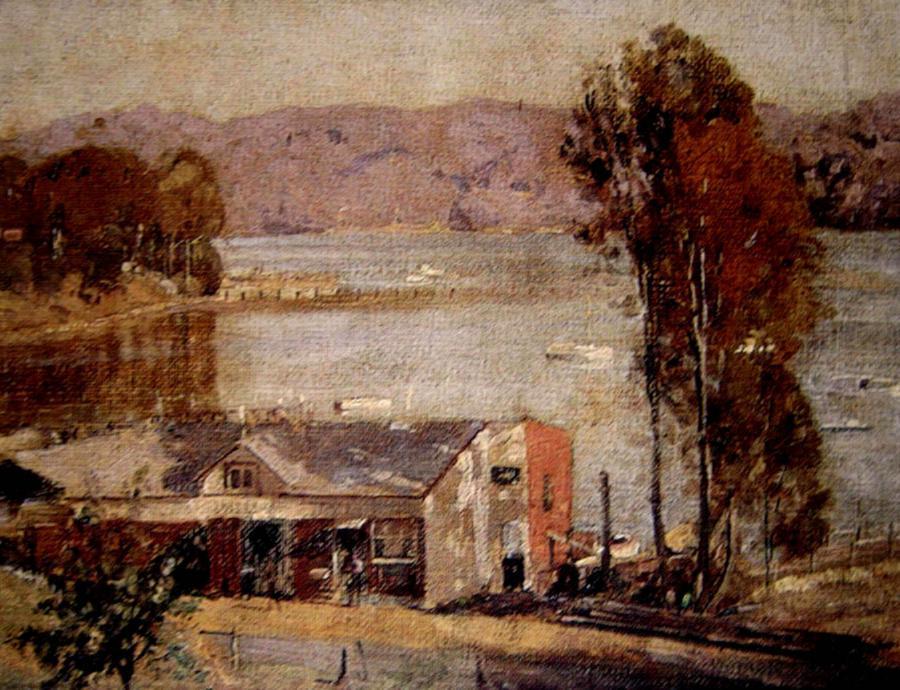
Mr. Percy Lindsay reveals his breadth of style with telling effect in his exhibition of oil paintings at the Australian Fine Art Gallery of Mr. W. R. Bennett. There is remark-able variety in these pictures, all of conspicuous attainment in colour and atmosphere. Mr. Lindsay has studied nature in varying moods, and has caught her spirit with manifest fidelity. Such studies as "Riddle's Boatshed," ART EXHIBITION. (1927, July 5). The Sydney Morning Herald(NSW : 1842 - 1954), p. 14. Retrieved from http://nla.gov.au/nla.news-article16370289
Not the only work Percy Lindsay did of Andrew Riddle's boatshed it seems:
"Morning, Riddle's Jetty" is distinguished for its bright, sunny treatment, and for the skill with which the artist has man-aged the water reflecting the brilliancy of the sun. The effect would have been better, however, without the clothing hanging out to dry on the boat at the pier, as this falls directly into the line of sunlight. There is moreover, some smudginess in the vessel's rigging. ART EXHIBITION. (1929, March 20). The Sydney Morning Herald (NSW : 1842 - 1954), p. 13. Retrieved from http://nla.gov.au/nla.news-article16539540
Visit The Riddles Of The Spit And Church Point: Sailors, Rowers, Builders
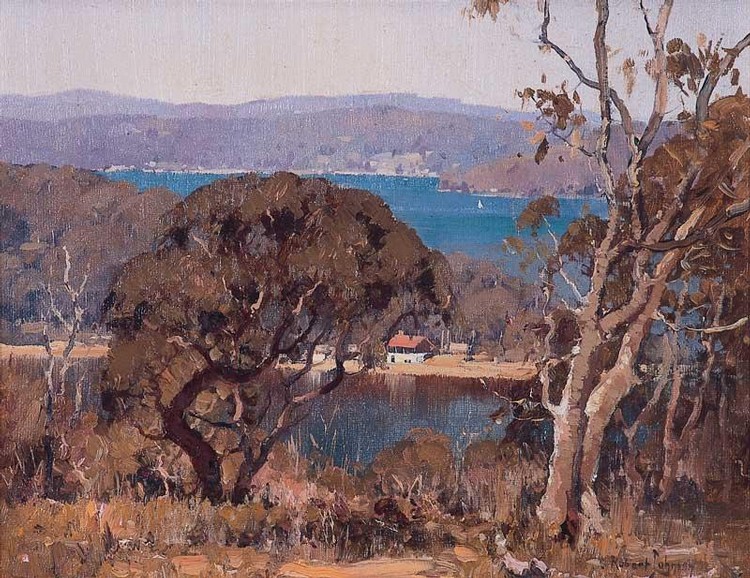
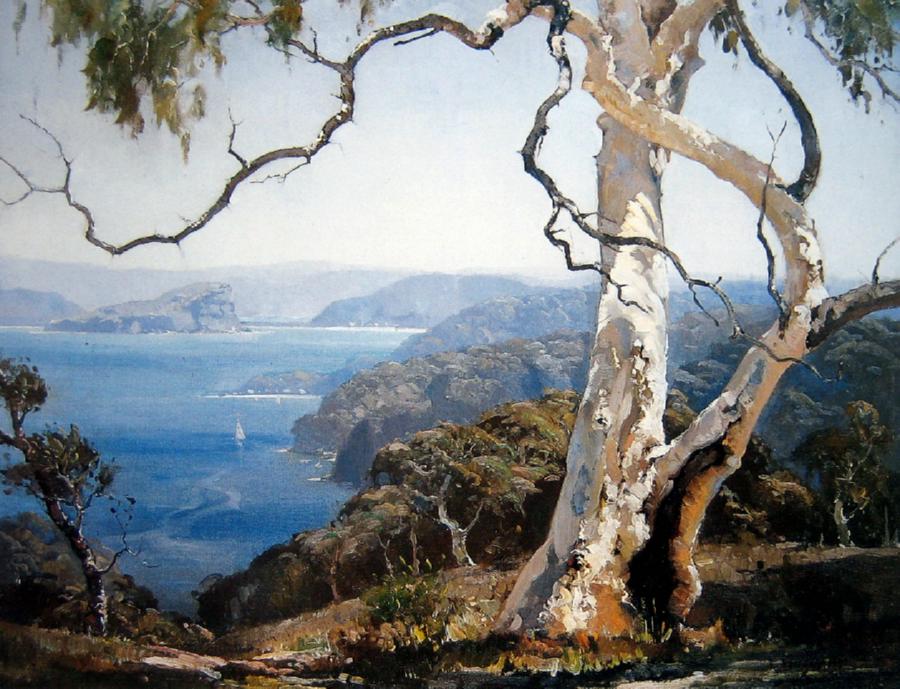
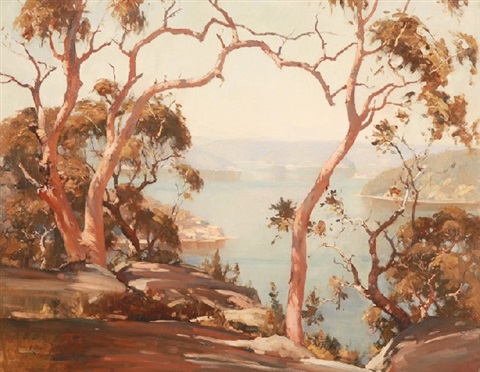
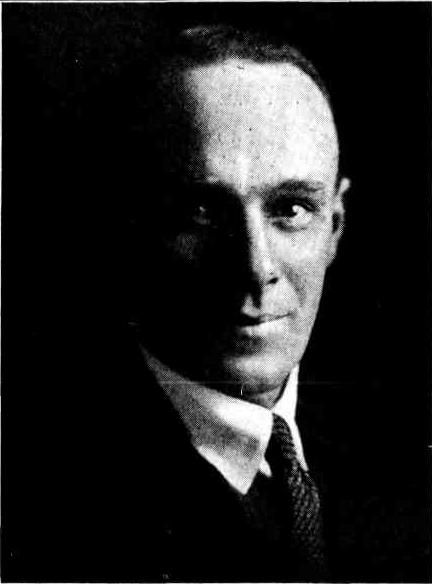
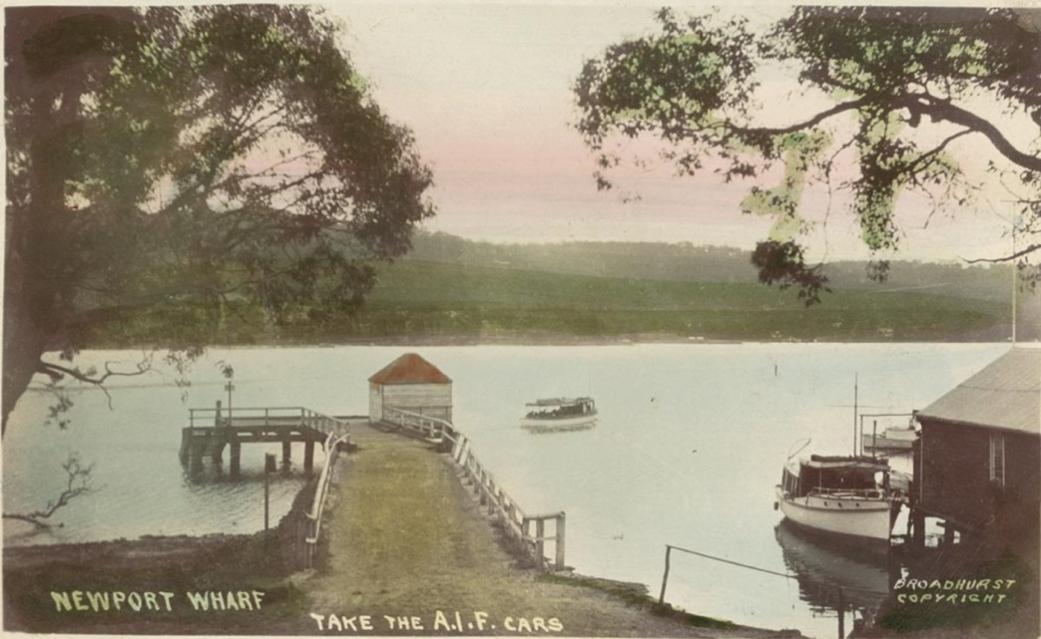
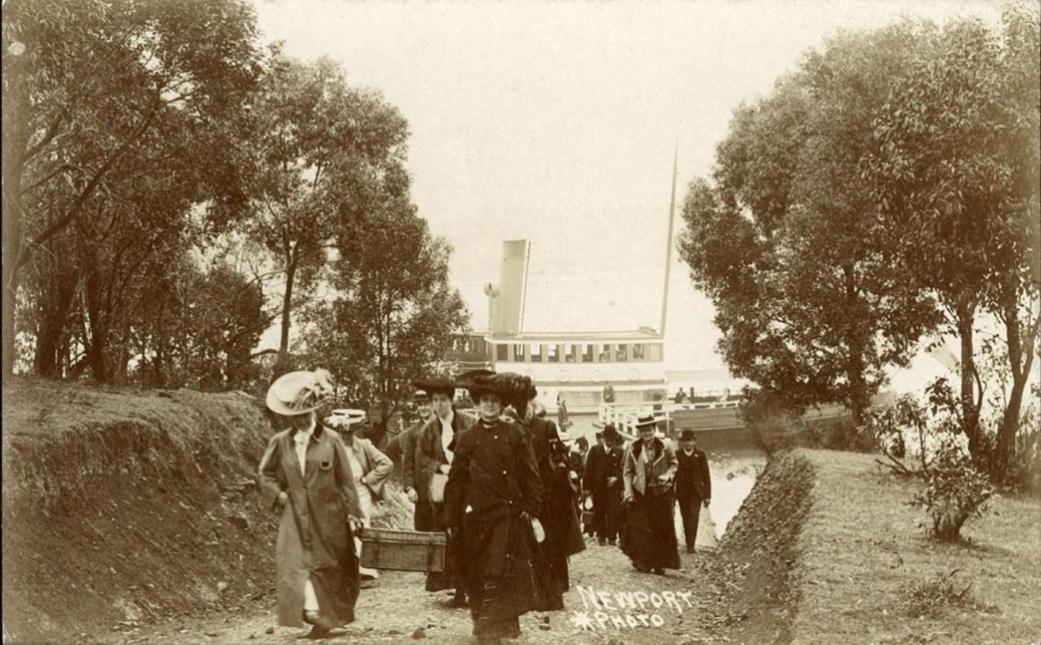
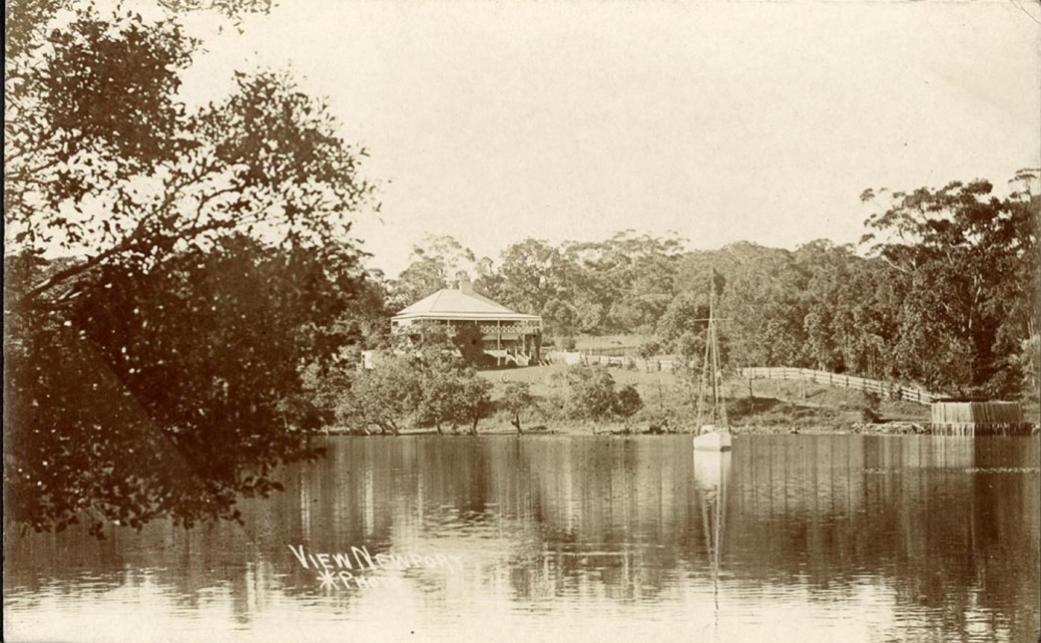
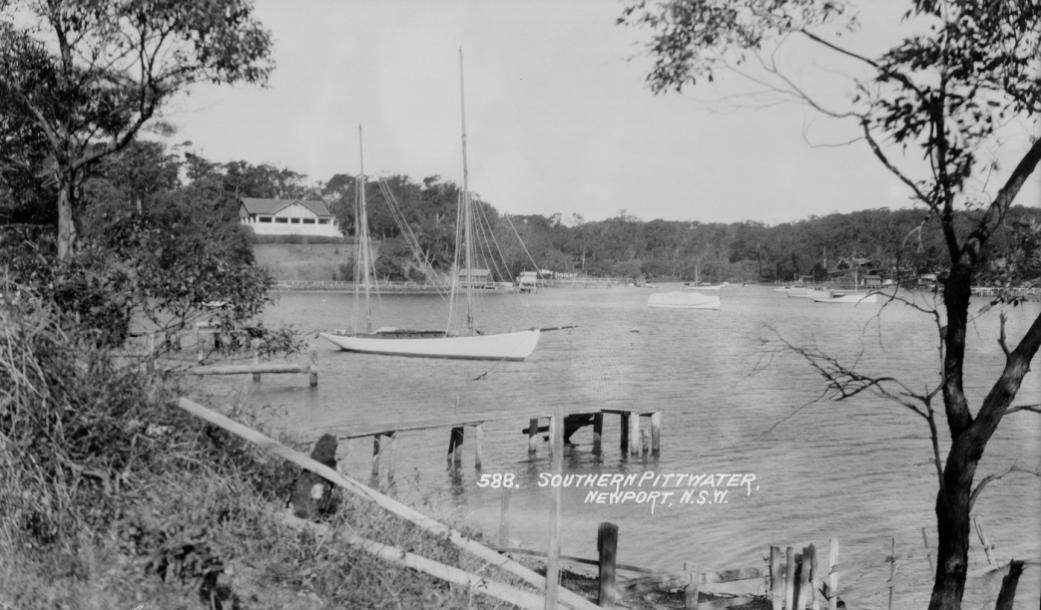
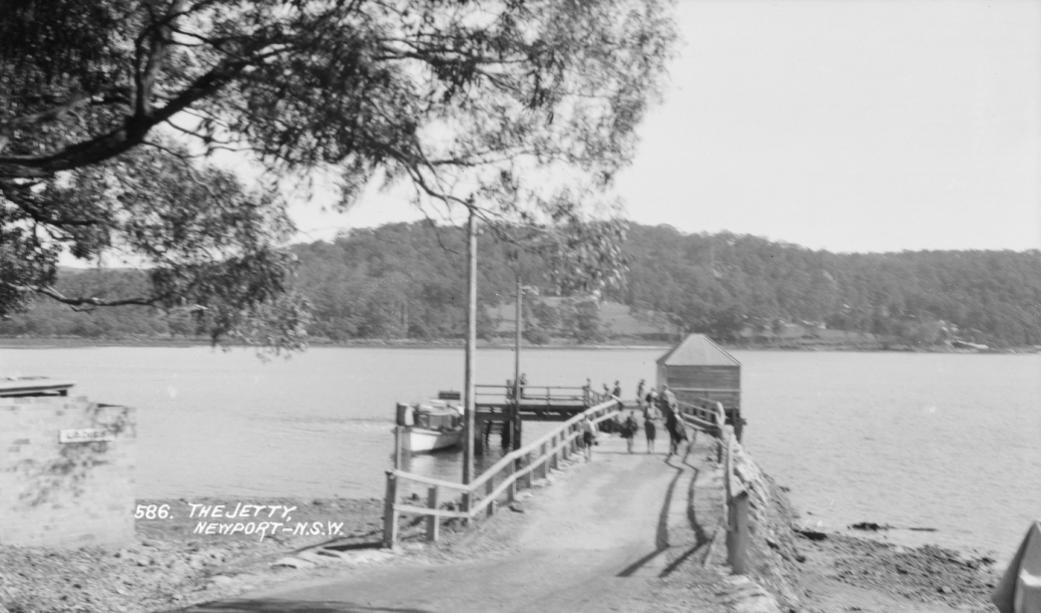
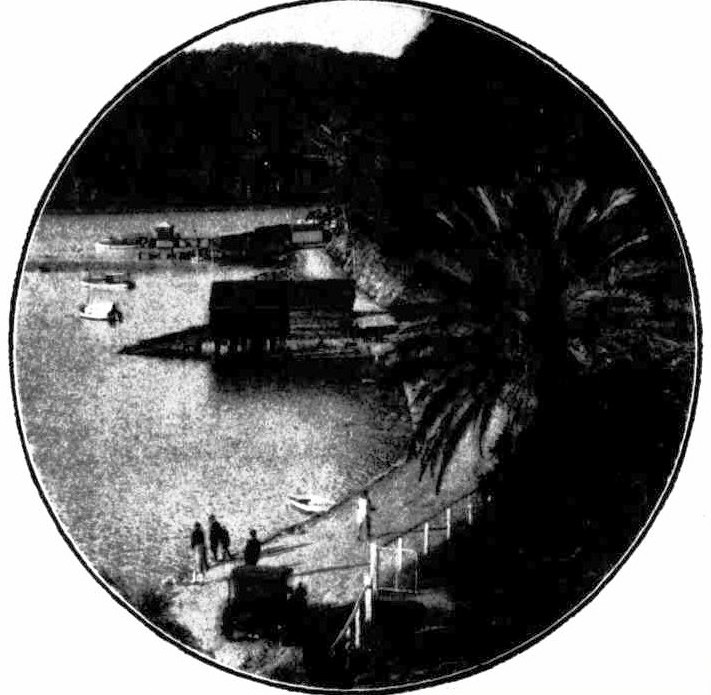
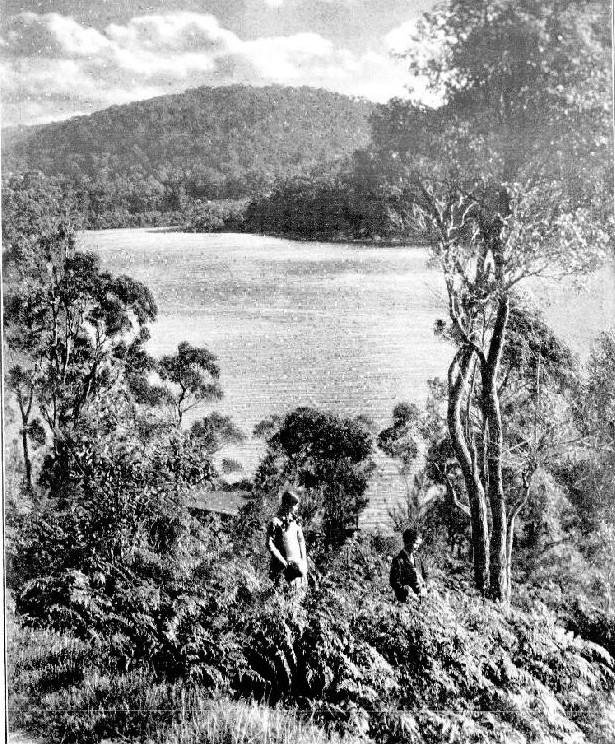
Beauty. Peace, and Solitude.
This lovely spot may be reached by the motorist in about three-quarters of an hour from Sydney. It is part of Pittwater, just beyond Church Point, and is known to sailing men as McGarr's Creek. Many motorists who go to Church Point are unaware of the fact that the road— somewhat narrow, but with passing places here and there — running up the hill to the beautiful scene here pictured may safely be taken.
Beauty, Peace, and Solitude. (1929, January 16). Sydney Mail(NSW : 1912 - 1938), p. 5. Retrieved from http://nla.gov.au/nla.news-article166258595
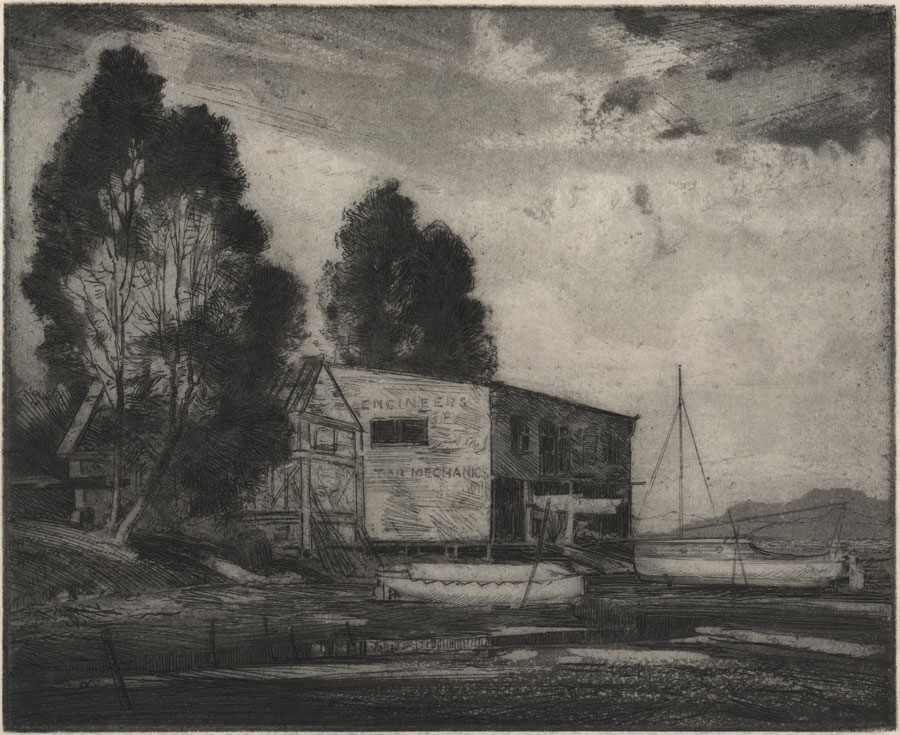
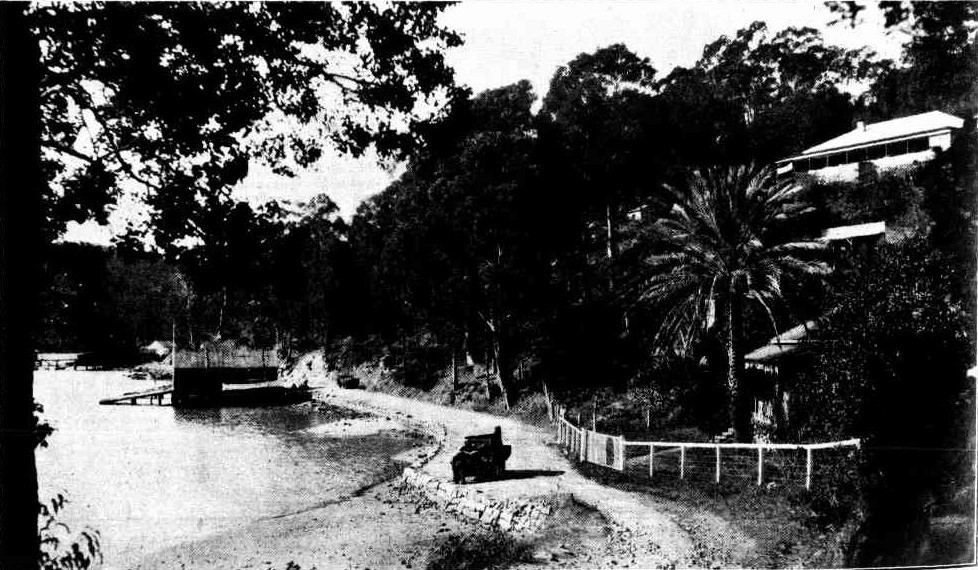
A Picturesque Motor Drive — View at Church Point (Pittwater), from McCarr's Creek. With the approach of warmer weather Sydney motorists are making preparations for outings to pleasure resorts near the city. The charms of the Manly and Pittwater districts and one of the most popular spots near Broken Bay is Church Point. MOTORING. (1929, August 28). Sydney Mail (NSW : 1912 - 1938), p. 45. Retrieved from http://nla.gov.au/nla.news-article160395048
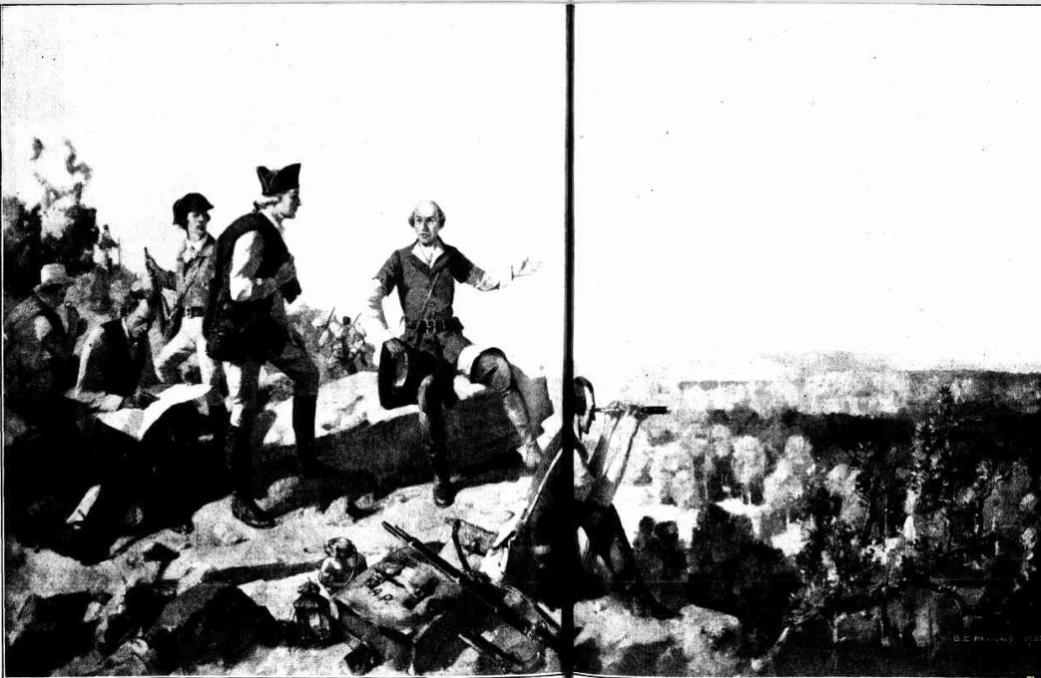
Governor Phillip's Exploration Of the Manly District, 1789. From a Painting by B E Minns.
This impressive and historical picture is reproduced from a painting by the well-known artist B. E. Minns, and illustrates an incident of Governor Phillip's second overland journey from Manly towards Pittwater in 1789. Phillip and his principal officers are shown on what is now known as Beacon Hill. The party is looking back towards Manly (in right-centre distance) and the Heads (on the extreme right) This is a copy of the original of the painting, which is about 36 inches by 24 inches, is in the possession of the artist. In the reproduction a slight liberty has been taken — the original has more sky. ANNIVERSARY DAY, 1788-1935 (1935, January 23). Sydney Mail (NSW : 1912 - 1938), p. 26. Retrieved from http://nla.gov.au/nla.news-article166110726
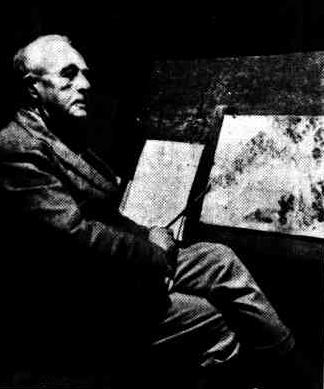 The Late B. E. Minns
The Late B. E. Minns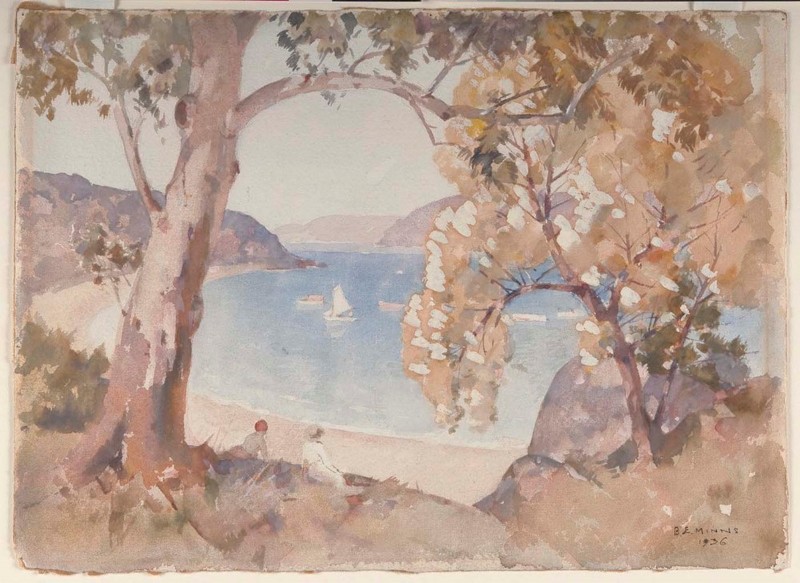
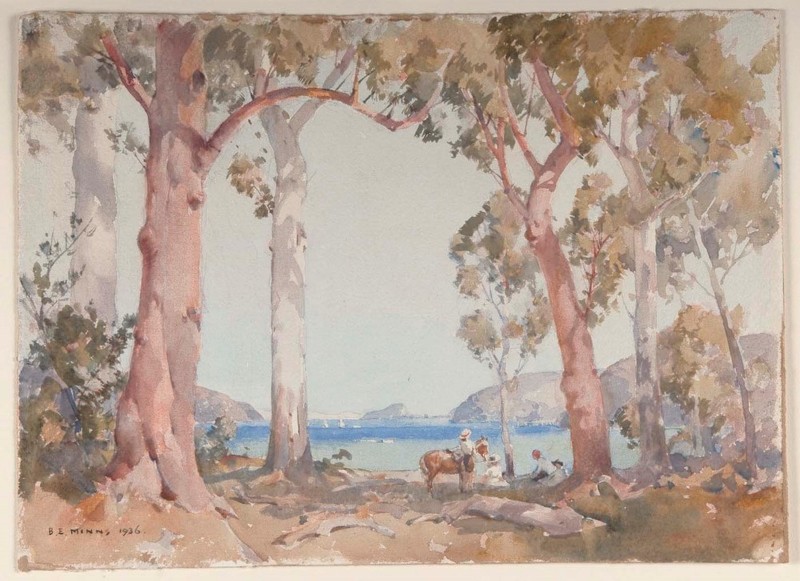
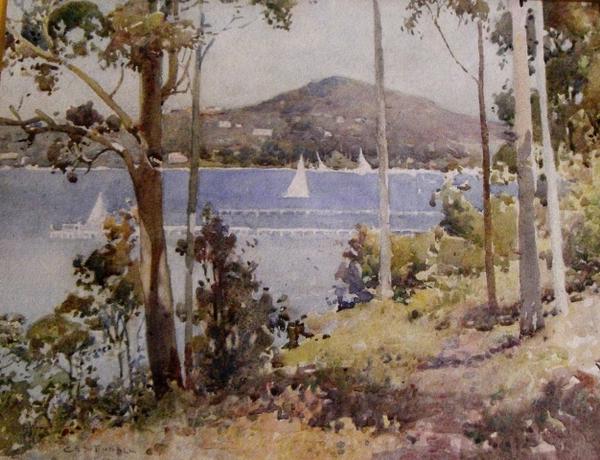
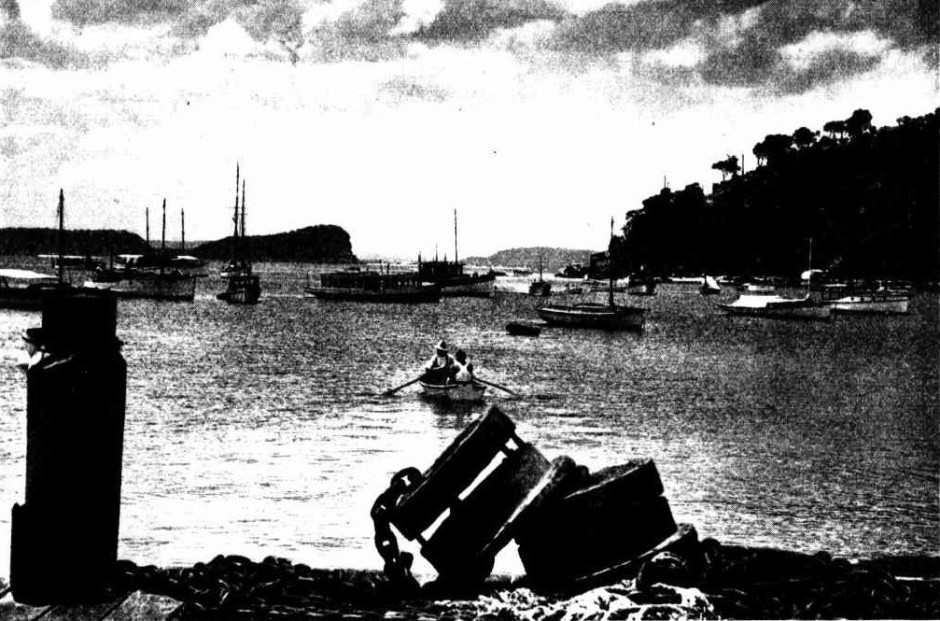
LAUNCHES AT ANCHOR AT PITTWATER, WITH LION ISLAND(BROKEN BAY) IN THE DISTANCE No title. (1935, April 3). Sydney Mail (NSW : 1912 - 1938), p. 42. Retrieved from http://nla.gov.au/nla.news-article166111070
__________________________________________________________________________________________________________________
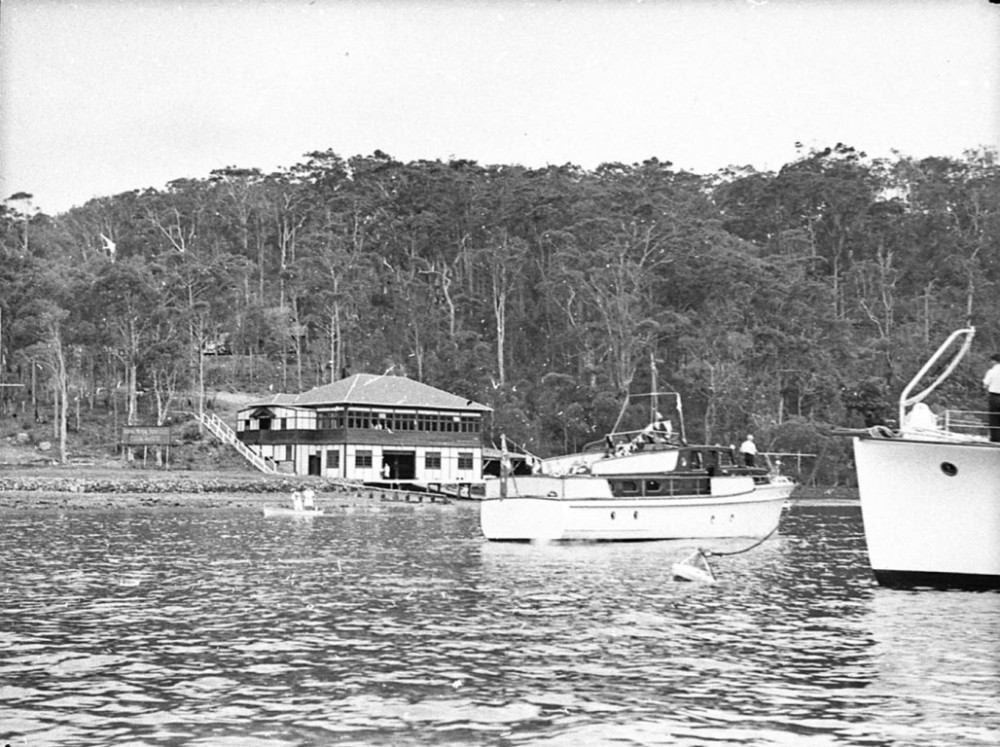
Newport Date of Work: 26/12/1936, Pittwater Regatta from Album: Home and Away - 13591 By Sam Hood - Image No.: hood_13591, courtesy State Library of NSW - Visit Newport RMYC at Broken Bay Clubhouses and Royal Motor Yacht Club – Broken Bay – The Boat House And Boatshed
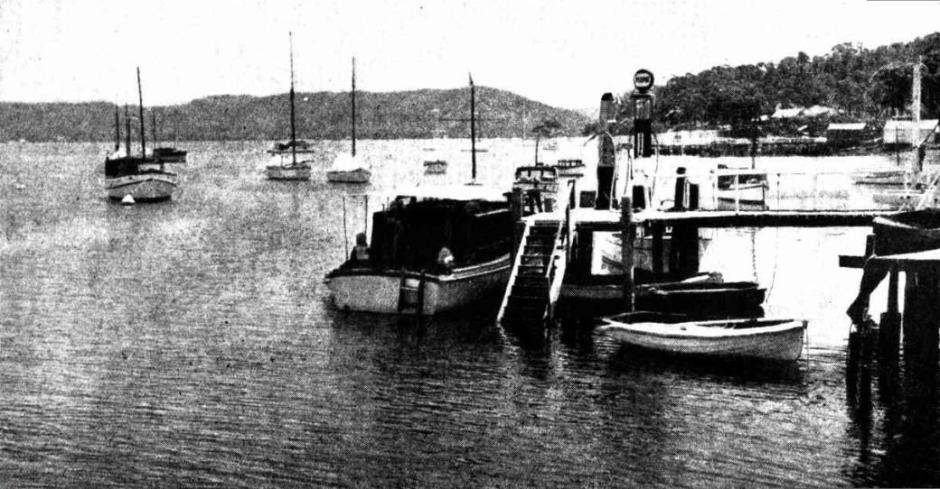
The pier at Pittwater, local 'headquarters' of the yachting and sailing fraternity. - RMYC Wharf - with boatshed to north. From: Pittwater:. (1938, December 28). Sydney Mail (NSW : 1912 - 1938), p. 12. Retrieved from http://nla.gov.au/nla.news-article166525296
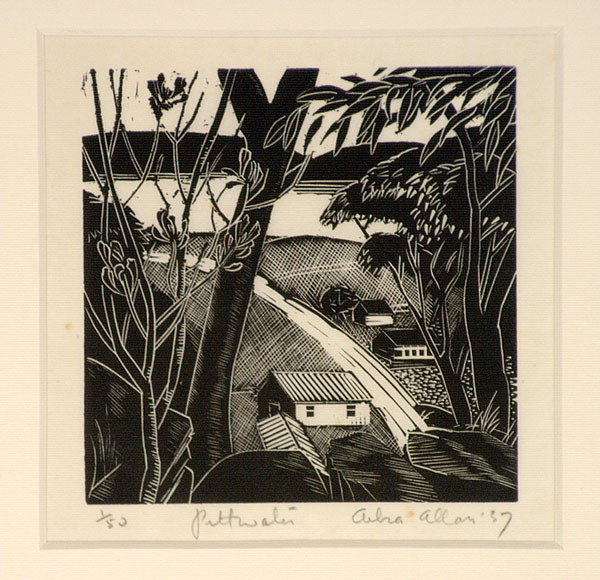
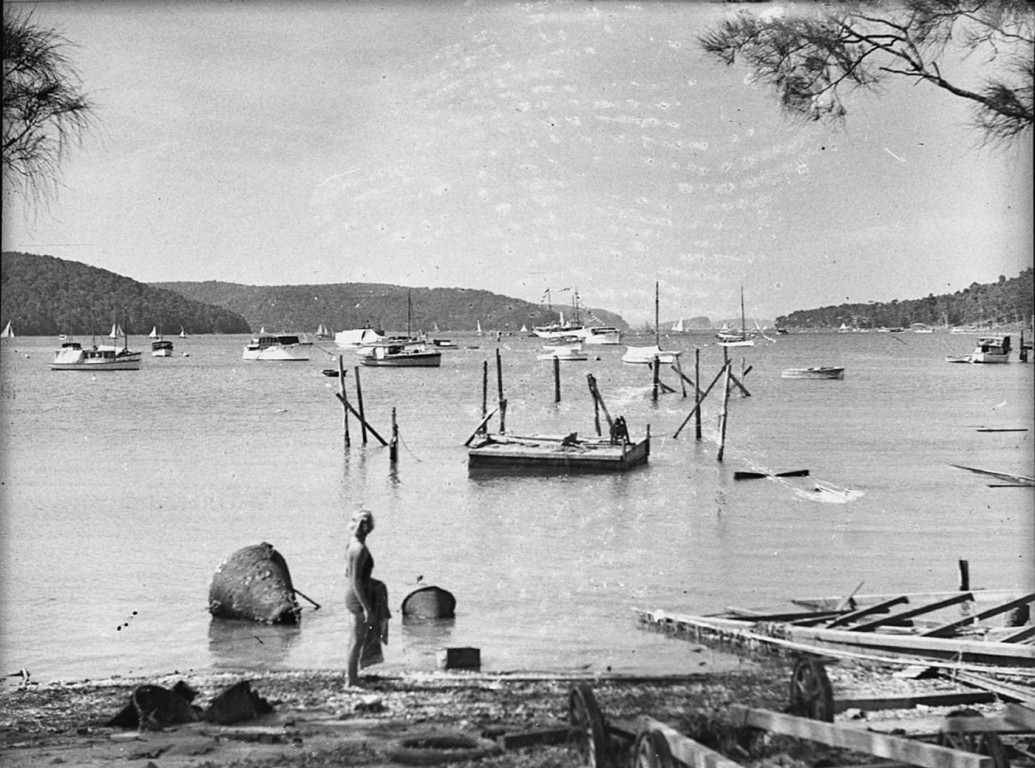

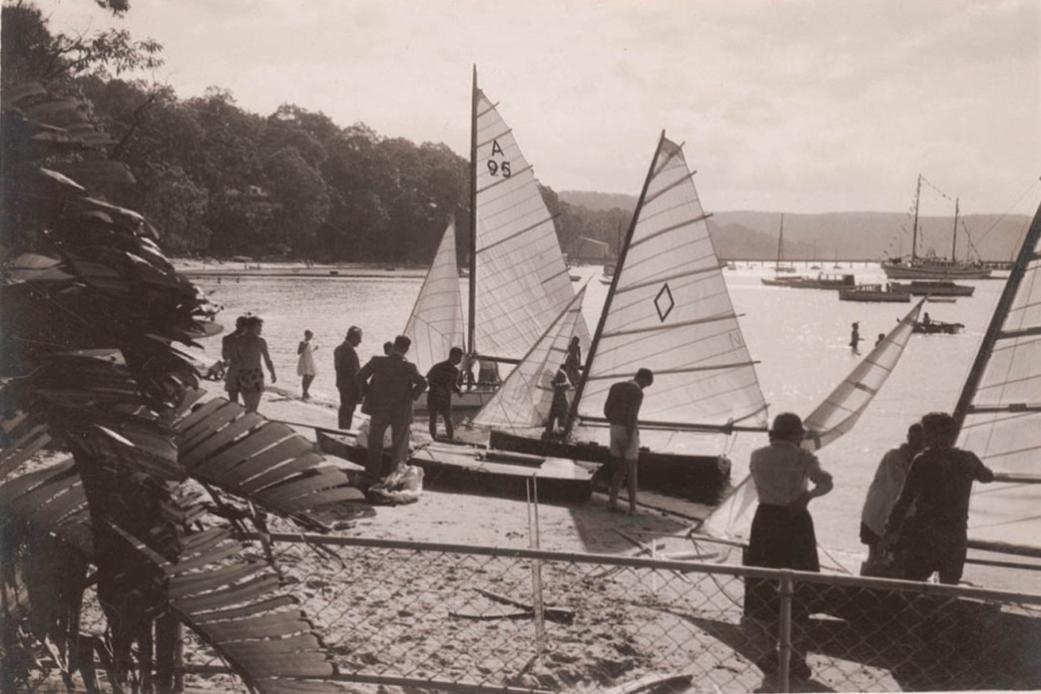
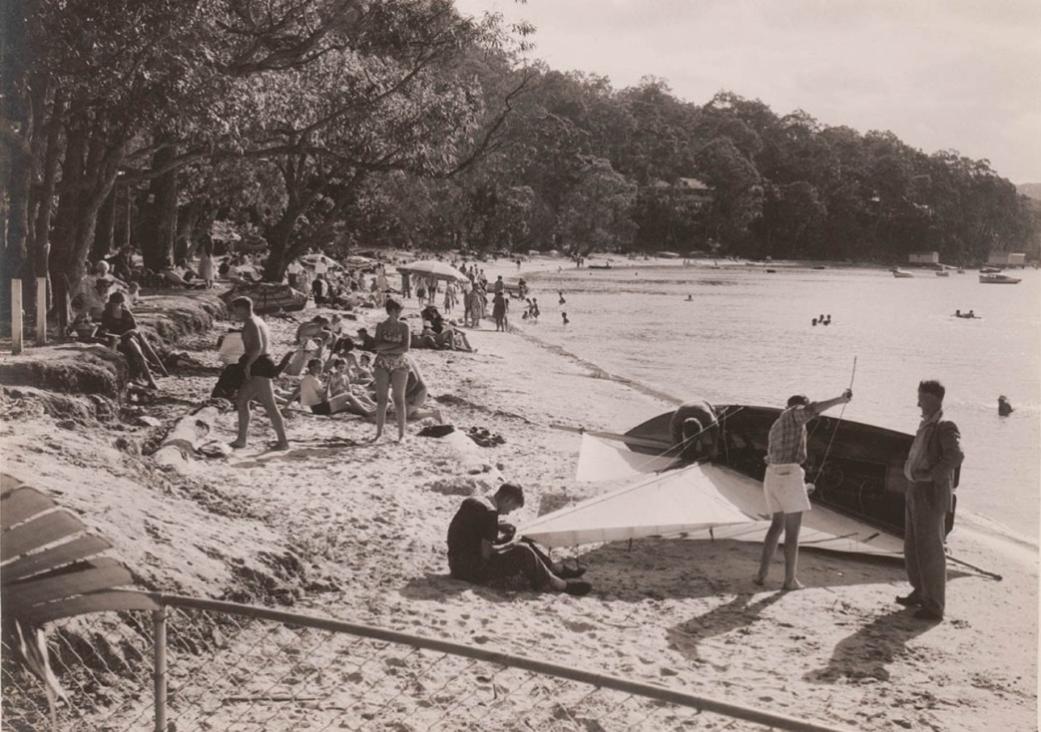
SOME MITCHELL PICTURES.
Previous History Pages:
Marie Byles Lucy Gullett Kookoomgiligai Frank Hurley Archpriest JJ Therry Sir Patrick Gordon Taylor Bowen Bungaree W. Bradley 1788 Journal Midholme Loggan Rock Cabin La Corniche La Corniche II Lion Island Bungan Beach Botham Beach Scarred Trees Castles in the Sand Dame Nellie Melba lunches at Bilgola Spring, 1914 First to Fly in Australia at North Narrabeen Mona Vale Golf Club's Annual Balls Governor Phillip camps on Resolute Beach Ruth Bedford Jean Curlewis Mollie Horseman Charlotte Boutin May Moore Neville W Cayley Leon Houreux Frederick Wymark Sir Adrian Curlewis Bilgola Heron Cove Mullet Creek Shark Point Woodley's Cottage A Tent at The Basin Collin's Retreat-Bay View House-Scott's Hotel Bilgola Cottage and House The First Pittwater Regatta Women Cricketers Picnic Filmed In Pittwater Governor Phillip's Barrenjoey Cairn Waradiel Season The Church at Church Point Gov. Phillip's Exploration of Broken Bay, 2 - 9 March 1788 Petroglyths: Aboriginal Rock Art on the Northern Beaches Avalon Headland Landmarks Steamers Part I Pittwater Aquatic Club Part I Woody Point Yacht Club Royal Motor Yacht Club Part I Dorothea Mackellar Elaine Haxton Neva Carr Glynn Margaret Mulvey Jean Mary Daly Walter Oswald Watt Wilfrid Kingsford Smith John William Cherry George Scotty Allan McCarrs Creek Narrabeen Creek Careel Creek Currawong Beach Creek Bushrangers at Pittwater Smuggling at Broken Bay An Illicit Still at McCarr's Creek The Murder of David Foley Mona Vale Outrages Avalon Camping Ground Bayview Koala Sanctuary Ingleside Powder Works Palm Beach Golf Course Avalon Sailing Club Mona Vale Surf Life Saving Club Palm Beach SLSC Part I - The Sheds Warriewood SLSC Whale Beach SLSC Flagstaff Hill Mount Loftus Pill Hill Sheep Station Hill S.S. Florrie S.S. Phoenix and General Gordon Paddlewheeler MV Reliance The Elvina Florida House Careel House Ocean House and Billabong Melrose-The Green Frog The Small Yacht Cruising Club of Pittwater Canoe and I Go With The Mosquito Fleet - 1896 Pittwater Regattas Part I - Dates and Flagships to 1950 Shark Incidents In Pittwater The Kalori Church Point Wharf Bayview Wharf Newport Wharf Palm Beach Jetty - Gow's Wharf Max Watt Sir Francis Anderson Mark Foy John Roche Albert Verrills Broken Bay Customs Station At Barrenjoey Broken Bay Water Police Broken Bay Marine Rescue - Volunteer Coastal Patrol Pittwater Fire-Boats Prospector Powder Hulk at Towler's Bay Naval Visits to Pittwater 1788-1952 Pittwater's Torpedo Wharf and Range Naval Sea Cadets in Pittwater S.S. Charlotte Fenwick S.S. Erringhi P.S. Namoi S.Y. Ena I, II and III Barrenjoey Headland - The Lessees Barrenjoey Lighthouse - The Construction Barrenjoey Broken Bay Shipwrecks Up To 1900 Barrenjoey Light Keepers Douglas Adrian Ross Newport SLSC 1909 - 1938 Part I Overview North Narrabeen SLSC - The Formative Years Bilgola SLSC - the First 10 years North Palm Beach SLSC A History of Pittwater Parts 1 and 4 Pittwater Regattas - 1907 and 1908 Pittwater Regattas - 1921 - The Year that Opened and Closed with a Regatta on Pittwater Pittwater Regatta Banishes Depression - 1933 The 1937 Pittwater Regatta - A Fashionable Affair Careel Bay Jetty-Wharf-Boatshed Gow-Gonsalves Boatshed -Snapperman Beach Camping at Narrabeen - A Trickle then a Flood Pittwater's Parallel Estuary - The Cowan 'Creek' RMYC Broken Bay Boathouse and Boatshed Barrenjoey Boat House The Bona - Classic Wooden Racing Yacht Mona Vale Hospital Golden Jubilee - A Few Insights on 50 Years as a Community Hospital Far West Children's Health Scheme - the Formation Years The First Scotland Island Cup, Trophy and Race and the Gentleman who loved Elvina Bay Royal Motor Yacht Club Broken Bay NSW - Cruiser Division History - A History of the oldest division in the Royal Motor Yacht Club Royal Motor Yacht Club Broken Bay Early Motor Boats and Yachts, their Builders and Ocean Races to Broken Bay, the Hawkesbury and Pittwater The Royal Easter Show Began As the Royal Agricultural Society of New South Wales The Mail Route to Pittwater and Beyond The Wild Coachmen of Pittwater - A Long and Sometimes Bumpy Ride on Tracks Instead of Roads The Fearless Men of Palm Beach SLSC's Surf Boats First Crews - A Tale of Viking Ships, Butcher Boats and Robert Gow's Tom Thumb 'Canoe' Furlough House Narrabeen - Restful Sea Breezes For Children and Their Mothers From Telegraphs to Telephones - For All Ships at Sea and Those On Land Mona Vale Training Grounds - From Lancers on Horses to Lasses on Transport Courses Fred Verrills; Builder of Bridges and Roads within Australia during WWII, Builder of Palm Beach Afterwards Communications with Pittwater Ferries To Pittwater A History of Pittwater - Part 4: West Head Fortress Pittwater's Lone Rangers - 120 Years of Ku-Ring-Gai Chase and the Men of Flowers Inspired by Eccleston Du Faur Early Pittwater Launches and Ferries Runs Avalon Beach SLSC - The First Clubhouse Avalon Beach SLSC The Second and Third Clubhouses From Beneath the Floorboards at Hyde Park Barracks Bungaree Was Flamboyant Andrew Thompson - 'Long Harry' Albert Thomas Black John Collins of Avalon Narrabeen Prawning Times - A Seasonal Tide of Returnings Oystering in the Pittwater Estuary - Oyster Kings and Pearl Kings and When Not to Harvest Oysters Yabbying In Warriewood Creeks Eeling in Warriewood's Creeks (Includes A Short History of community involvement in environmental issues/campaigns in and around Narrabeen Lagoon - 1974 to present by David James OAM) Eunice Minnie Stelzer - Pittwater Matriarchs Maria Louisa Therry - Pittwater Matriarch Katherine Mary Roche - Pittwater Matriarchs Sarah A. Biddy Lewis and Martha Catherine Bens Pittwater Matriarchs Pittwater's New Cycle Track of 1901 Manly to Newport The Rock Lily Hotel Barrenjoey House The Pasadena Jonah's St Michael's Arch The First Royal Visitor to Australia: the Incident at Clontarf March 12th, 1868 Pittwater: Lovely Arm of the Hawkesbury By NOEL GRIFFITHS - includes RMYC Wharf and Clareville Wharf of 1938 + An Insight into Public Relations in Australia George Mulhall First Champion of Australia in Rowing - First Light-Keeper at Barranjuey Headland Captain Francis Hixson - Superintendent of Pilots, Lights, and Harbours and Father of the Naval Brigade The Marquise of Scotland Island The First Boat Builders of Pittwater: the Short Life and Long Voyages of Scotland Island Schooner the Geordy Boat Builders of Pittwater II: from cargo schooners and coasters to sailing skiffs and motorised launches The Currawong: Classic Yacht The Riddles of The Spit and Bayview/ Church Point: sailors, boat makers, road pavers winning rowers VP Day Commemorative Service 2015 – at Avalon Beach RSL Cenotaph: 70th Anniversary Captain T. Watson and his Captain Cook Statues: A Tribute to Kindness Pittwater Reserves: The Green Ways; Hordern or Wiltshire Parks to McKay Reserve – From Beach to Estuary Pittwater Reserves, The Green Ways: Clareville Wharf and Taylor's Point Jetty Pittwater Reserves: The Green Ways Bilgola Beach - The Cabbage Tree Gardens and Camping Grounds - Includes Bilgola - The Story Of A Politician, A Pilot and An Epicure by Tony Dawson and Anne Spencer Pittwater Reserves - The Green Ways: Mona Vale's Village Greens a Map of the Historic Crown Lands Ethos Realised in The Village, Kitchener and Beeby Parks Pittwater Reserves: The Green Ways; Bungan Beach and Bungan Head Reserves: A Headland Garden Early Pittwater Paddlers, Oarsmen, Rowers and Scullers: The Green Family Elanora - Some Early Notes and Pictures The Stewart Towers On Barrenjoey Headland Early Pittwater Paddlers, Oarsmen, Rowers and Scullers: The Williams Family Early Cricket in Pittwater: A small Insight Into the Noble Game from 1880's On The Pacific Club's 2016 Carnival in Rio Fundraiser for Palm Beach SLSC Marks the 79th Year of Support Bert Payne Park, Newport: Named for A Man with Community Spirit Early Pittwater Paddlers, Oarsmen, Rowers and Scullers: The Fox Family Surf Carnivals in February 1909, 1919, 1925, a Fancy Dress Rise of Venus and Saving Lives with Surfboards Early Pittwater Paddlers, Oarsmen, Rowers and Scullers: The Paddon Family of Clareville Mermaid Basin, Mona Vale Beach: Inspired 1906 Poem by Viva Brock Early Pittwater Schools: The Barrenjoey School 1872 to 1894 The Royal Easter Show and 125th Celebration of the Hawkesbury Agricultural College: Farmers Feed Us! The Newport School 1888 to 2016 Pittwater's Ocean Beach Rock Pools: Southern Corners of Bliss - A History The Royal Botanical Garden Sydney Celebrate 200 Years in 2016 The Porter Family of Newport: Five Brother Soldiers Serve in WWI Church Point and Bayview: A Pittwater Public School Set on the Estuary The Basin, Pittwater: A Reprise: Historical Records and Pictures Lighthouse Keepers Cottages You Can Rent in NSW - Designed or Inspired by Colonial Architect James Barnet: Includes Historic 'Lit' Days records Bayview Days Ships Biscuits - the At Sea Necessity that Floated William Arnott’s Success Mona Vale Public School 1906 to 2012 St Johns Camden: 176th And 167th Anniversaries In June 2016 - Places To Visit Narrabeen Lagoon And Collaroy Beachfront: Storms And Flood Tides Of The Past Avalon Beach Public School - A History Muriel Knox Doherty Sir Herbert Henry Schlink Shopping And Shops In Manly: Sales Times From 1856 To 1950 For A Fishing Village Royal Prince Alfred Yacht Club's 150th Sailing Season Opening: A Few Notes Of Old A Few Glimpses Into Narrabeen's Past Beauties Dr. Isobel Ida Bennett AO Taronga Zoo 100th Birthday Parade: 1000 Reasons To Celebrate War Memorials: Manly, October 14, 1916 Avalon Beach Golf Links: Pittwater Fields of Dreams II War Memorials - Mona Vale, November 14, 1926 Annie Wyatt Reserve Palm Beach: Pittwater Fields of Dreams II Tumbledown Dick Hill Waratah Farm and Narrabeen Plums: Pittwater Fields of Dreams II Mark Twain, J.F. Archibald And Henry Lawson - Did They Go Fishing At Narrabeen In The Spring Of 1895?: Probably! Bayview Baths Centenary Celebration in November 2016 hosted by Bayview-Church Point Residents Association Dr. Jenny Rosen's Historical Timeline Palm Beach RSL - Club Palm Beach Celebrating 60 Years Early Years At Narrabeen: The Plane Sailing Day Of 1944 The Five Ways- Six ways Junction; Kamikaze Corner - Avalon Bilgola RPAYC Season on Pittwater and coming of Jubilees in Summer of 1938 Local Explorers’ Modern Day Discovery - Governor Phillip’s First Landing site, Campsite and contact with Local Aborigines in Pittwater: The Case for West Head Beach Rendezvous Tea Rooms Palm Beach: links with 1817 and 1917: Palm Beach Stores and Fishermen St Cloud's Jersey Stud: Elanora Heights: Pittwater Fields of Dreams II Roderic Quinn's Poems And Prose For Manly, Beacon Hill, Dee Why And Narrabeen
